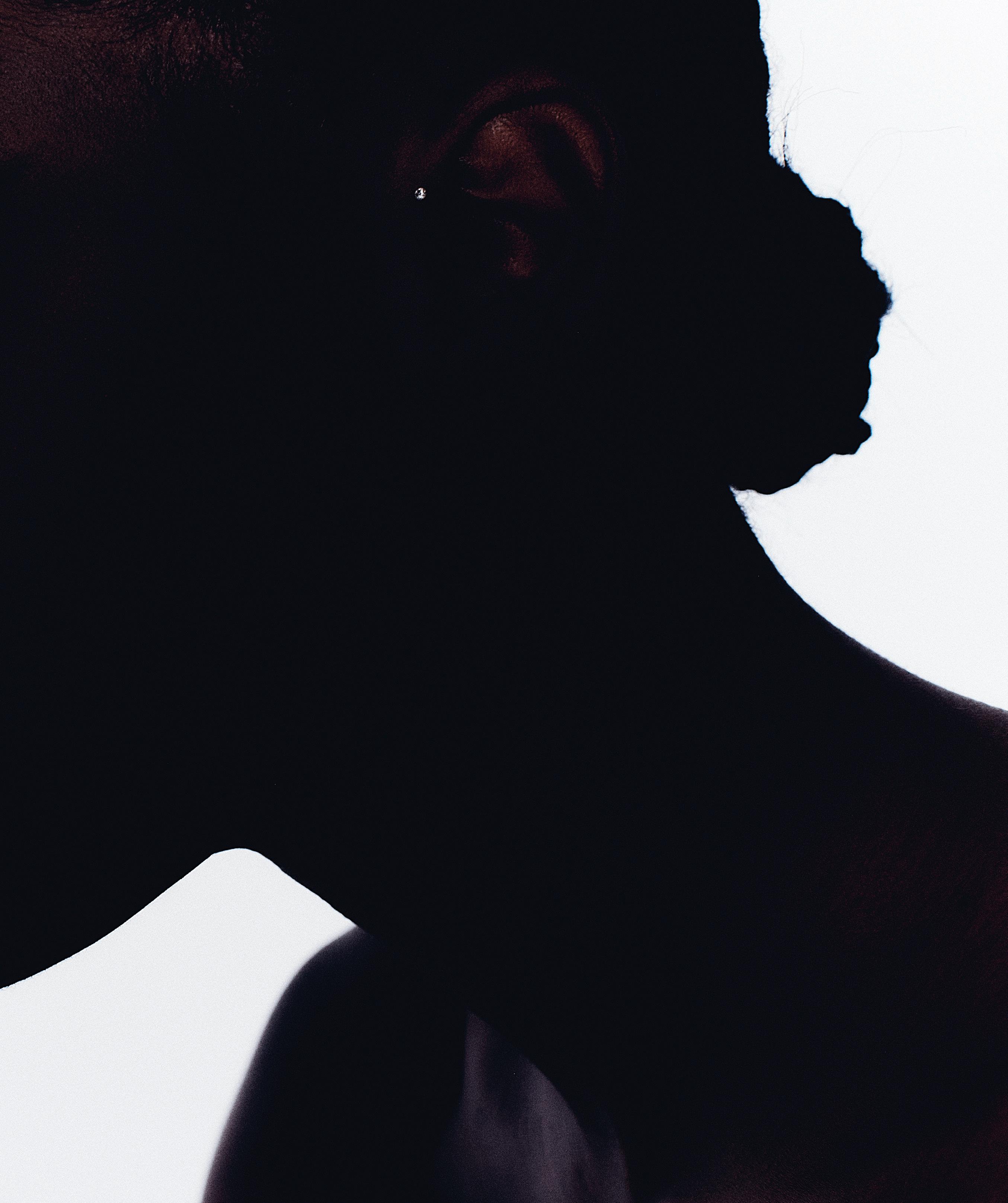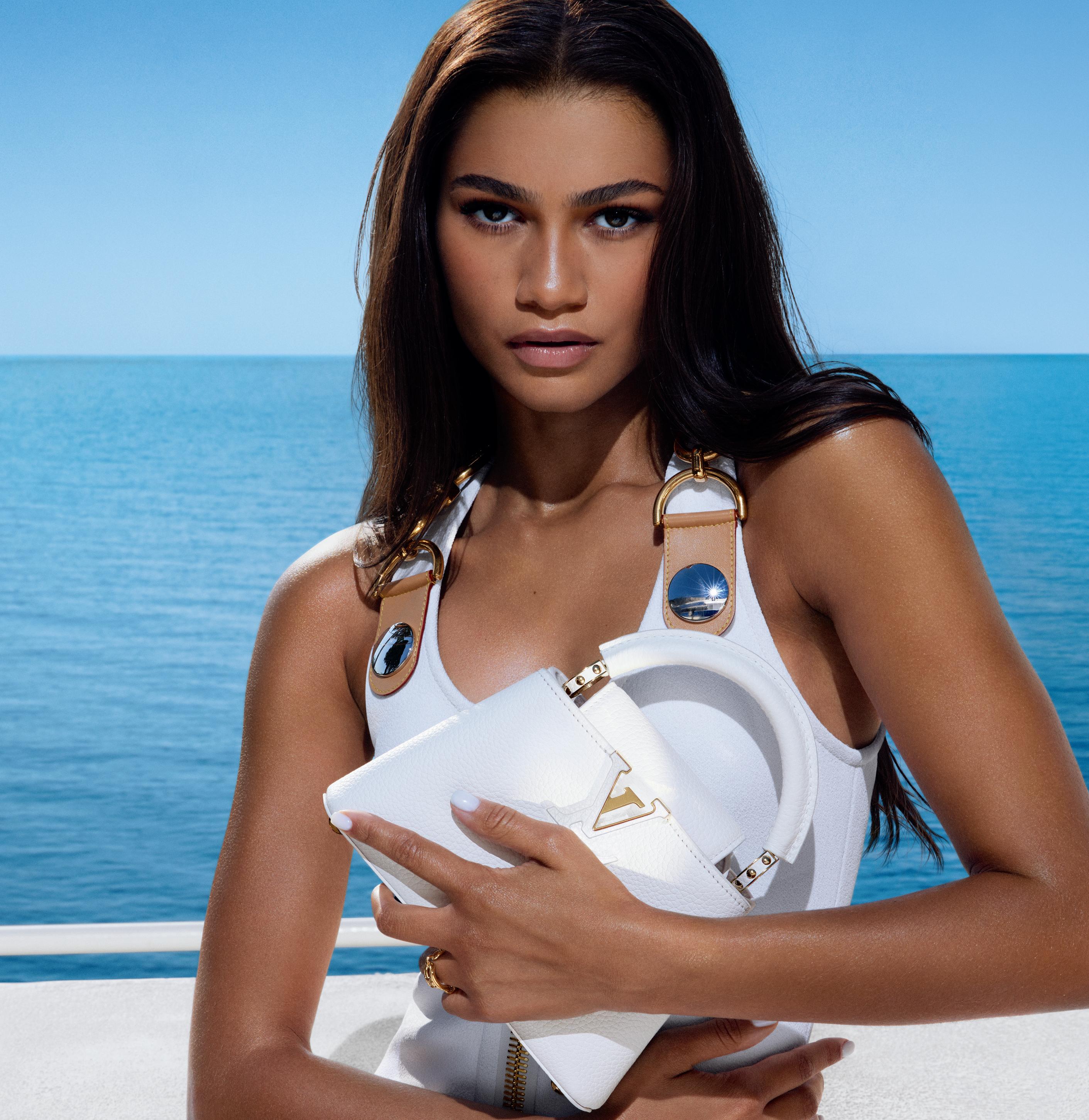PRIYANKA CHOPRA JONAS
BREAKING BOUNDARIES






















BREAKING BOUNDARIES






















John

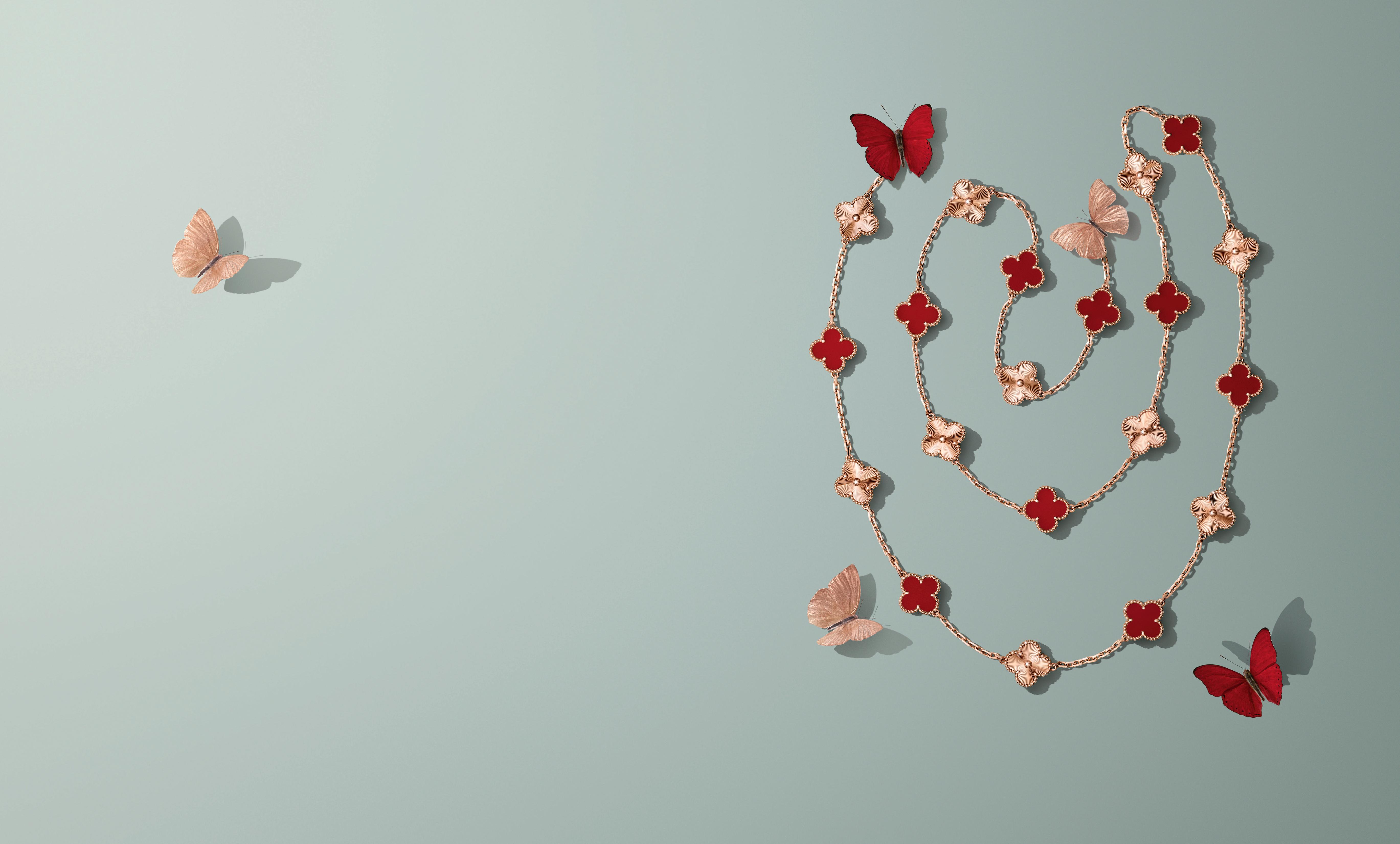







24 GAME CHANGERS
DAZZLING CREATIONS
Dinh Van's iconic Menottes collection continues to redefine contemporary elegance
28 COUNTING CARATS
Soul and diamonds are inextricably intertwined in the art of high jewelry
66
RUFFLING FEATHERS
A shimmering jewel in the concrete jungle, Tiffany & Co. reopens its New York City flagship location and puts a new Bird on a Rock collection on full display
74
UNIQUELY YOU
Whether you prefer to get decked out in diamonds or go bold in gold, let your personality shine through in every accessory you choose
80
ONE HAPPY SUMMER
Elevate classic seasonal staples with fluorescent sandals, oversized eyewear and swimwear that packs a punch
86
RENAISSANCE BASQUIAT
Nearly 30 years after his death, Jean-Michel Basquiat broke all records to become the most successful American visual artist in history
90
LONG LIVE LEVI'S
From its humble beginnings as a durable work pant in 1873 to becoming a staple around the globe, look back at the 150-year legacy of the 501 blue jean that changed the way the world dresses
36 THE FINE ART OF EXPLORATION
Louis Vuitton embarked on a journey to redefine design over a decade ago with the travel-inspired Objets Nomades collection—and GRAZIA USA discovers innovation and surprise are still at the top of the itinerary
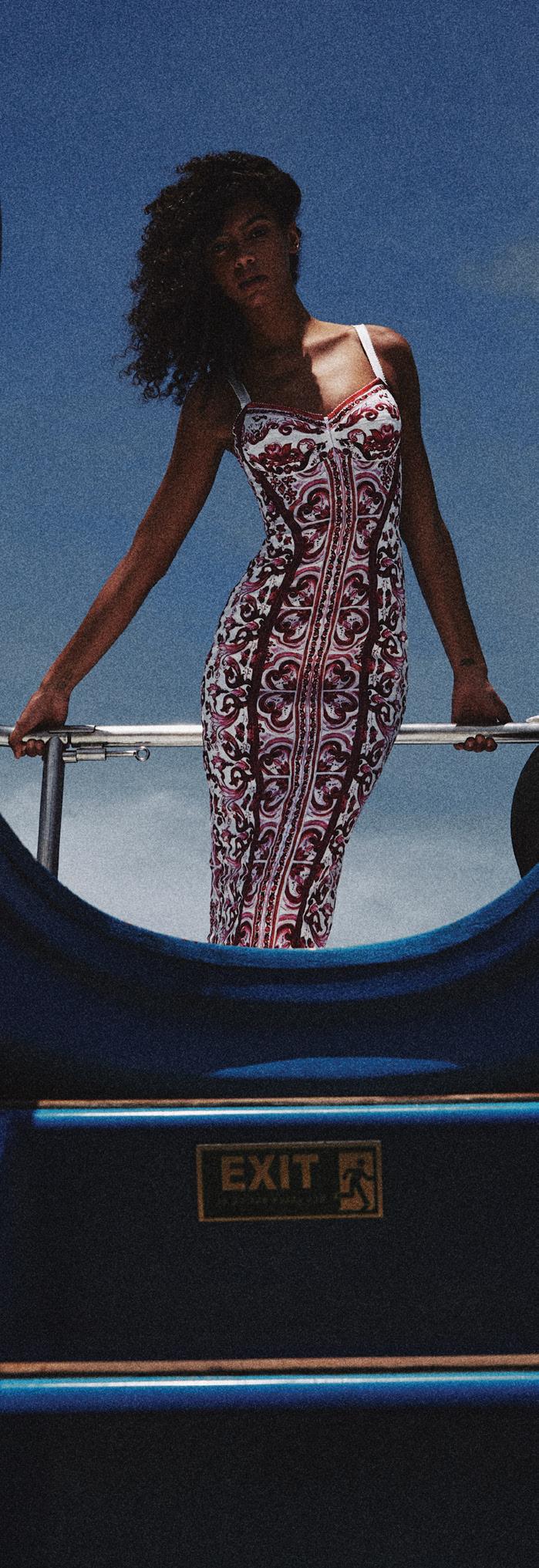
40 TREASURE TRUNKS
Designer Marc Newson has thought outside the trunk-shaped box to reimagine Louis Vuitton’s most iconic creation
50
RITA ORA: ‘MY MUSIC IS BORN OUT OF LOVE’
The singer tells GRAZIA USA that when she’s in love, she feels the need to sing it to the world
54
ROLLING IN THE DEEP
Vacation-ready one-piece swimsuits, colorful bikinis and glamorous cover-ups will transport you far, far away as you soak in the crystal clear sea of the Maldives

94
WELCOME TO PARADISE
Spend hours in the powdery sand, recharge in the tranquil garden spa— French refinement and stellar service await at Cheval Blanc St-Barth
96
A PRESTO!
TAG Heuer celebrates the timeless legacy of the Carrera watch on its 60th anniversary


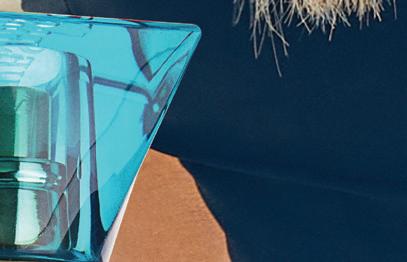

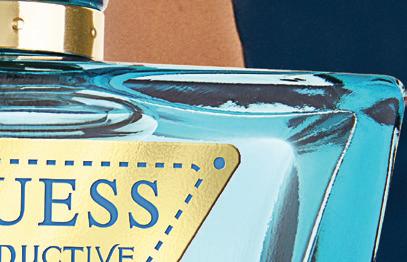



JOSEPH ERRICO EDITOR & CHIEF CREATIVE OFFICER
ILARIA SVITIC CREATIVE DIRECTOR
CASEY BRENNAN & AARON RASMUSSEN EXECUTIVE EDITORS AT LARGE
COLLEEN KRATOFIL EDITORIAL & DIGITAL DIRECTOR
JACLYN ROTH HEAD OF ENTERTAINMENT
SHELBY COMROE F ASHION MARKET EDITOR
HANNAH MILITANO STYLE WRITER
JESSICA BAILEY I NTERNATIONAL EDITORIAL DIRECTOR
REBEKAH CLARK FEATURES WRITER
EMILY ALGAR BEAUTY EDITOR
KATE LANCASTER CONTRIBUTING BEAUTY EDITOR
ISABELLE TRUMAN WRITER
JEFF MAZZEO DIRECTOR OF SOCIAL MEDIA & AUDIENCE DEVELOPMENT
ANGELA SAVOY-WILLIAMS SOCIAL MEDIA EDITOR
Printing: Freeport Press. GRAZIA USA, 228 Park Avenue South, PMB 80571, New York, NY 10003 (graziamagazine.com; UPC 0-74820-40390-7) is published quarterly by Pantheon Media Group LLC, a company registered in the U.S. Audit pending by BPA Worldwide.

DYLAN HOWARD CHAIRMAN, CHIEF EXECUTIVE OFFICER & PUBLISHER
MARIA ELIASON EXECUTIVE VICE PRESIDENT
ILARIA SVITIC CHIEF CREATIVE OFFICER
PRIYA NAT SALES DIRECTOR, HOME & LUXURY

TOVA BONAM SALES DIRECTOR, LUXURY
CAMILLA JONES VICE PRESIDENT, CORPORATE COMMUNICATIONS
FRANCE, SPAIN, SWITZERLAND, UK
GUGLIELMO P. BAVA MANAGING DIRECTOR
JOSEPHINE HANGA PARTNERSHIP MANAGER 228 PARK AVE SOUTH PMB 80571 NEW YORK, NY 10003

PHONE (917) 231-8680
EMAIL CONTACT@GRAZIAUSA.COM
EMAIL SUBSCRIPTIONS@GRAZIAUSA.COM
WWW.GRAZIAMAGAZINE.COM/US/SUBSCRIBE
GRAZIA is a trademark registered and owned by Reworld Media Italia Srl Reworld Media Italia Srl

Chairman Gautier Normand; Member of the Board of Directors Stéphane Haitaian; Chief Executive Officer Daniela Sola ; International Marketing Manager Francesca Brambilla ; International Advertising Manager Daniella Angheben; Photos & Rights Manager Melania Landini; International Art Director Giacomo Pasqualini
© 2023 Reworld Media Italia Srl All rights reserved. Published by Pantheon Media Group, LLC, with the with the permission of Reworld Media Italia Srl Reproduction in any manner in any language in whole or in part without prior written permission is prohibited Advertising inquiries: sales@graziausa.com. Press inquiries: press@graziausa.com. General inquiries: contact@graziausa.com. For syndication, email contact@graziausa.com.
ho doesn’t love summer? The season is viscerally connected for many to childhood, when the seemingly never-ending countdown to the last day of school finally ended, ushering in those first sweet moments of freedom. Even now, as adults, the return of warmer weather makes it difficult to shake the feeling that we’re about to be free as birds—although our bosses may have other ideas. So, while we might not be spending our days sunning at the beach or nights hanging out until the wee hours, there are so many other things to look forward to during the summer season (ones that allow us to keep our day jobs). Case in point: the fabulous new “Basquiat x Warhol. Painting Four Hands” exhibit at the Fondation Louis Vuitton, pg. 86. The exhibit features more than 300 works and documents, including 80 canvases jointly signed by the two iconic artists. That said, if a weekend jaunt to Paris seems a bit out of reach, consider popping into New York City’s most exciting new attraction, the Tiffany Landmark building, pg. 66. A visual wonder four years in the (re)making, this architectural masterpiece boasts among all its sparkly treasures an immersive Audrey Hepburn exhibit featuring a replica of her iconic look. But perhaps you’re more into exhibitionism than exhibits? In that case, dive right into our fashion story on pg. 54 for some exhilarating ways to show off sunkissed skin as the summer heats up. Finally, if inspiration is what you seek this season, look no further than our cover star, the beautiful and fascinating Priyanka Chopra Jonas, pg. 42. After conquering Bollywood, this former Miss World is currently carving out a unique career path in Hollywood. In her wake, Chopra Jonas is leaving doors knocked off their hinges all over town for future generations to step through, all the while effortlessly exhibiting nothing but pure charm and determination—a great example for all of us to follow. While it might be summer, never let them see you sweat.
JOSEPH ERRICO EDITOR & CHIEF CREATIVE OFFICER


For a talent like Priyanka Chopra Jones, who's beloved from Bollywood to Hollywood, it's only fitting that the international sensation has an array of global covers celebrating her success. The actress, who just premiered the new TV series Citadel and rom-com Love Again, graces over 10 different GRAZIA covers worldwide in an array of looks that are bright, bold and stylish—just like the star herself.







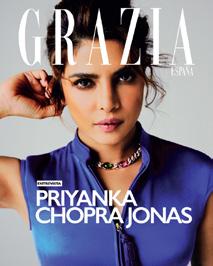




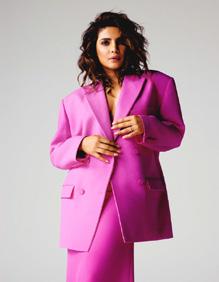
ON THE COVER: Giorgio Armani dress, armani.com; Bulgari necklace.

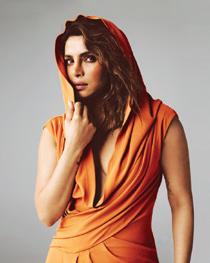
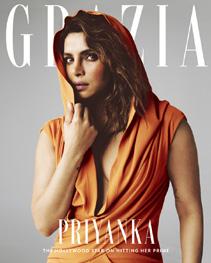


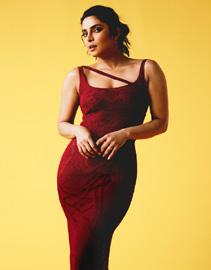
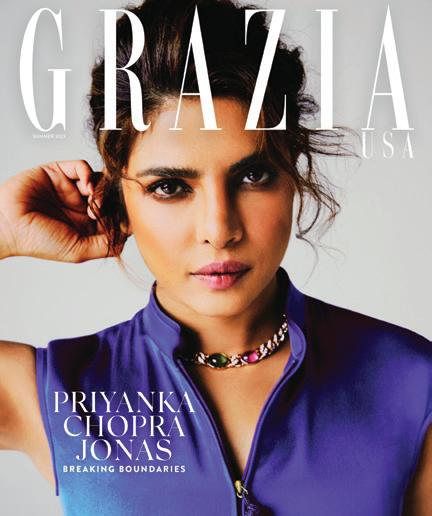
Photographs by DANNY KASIRYE
Styling by KINGSLEY TAO
Hair by STEFAN BERTIN
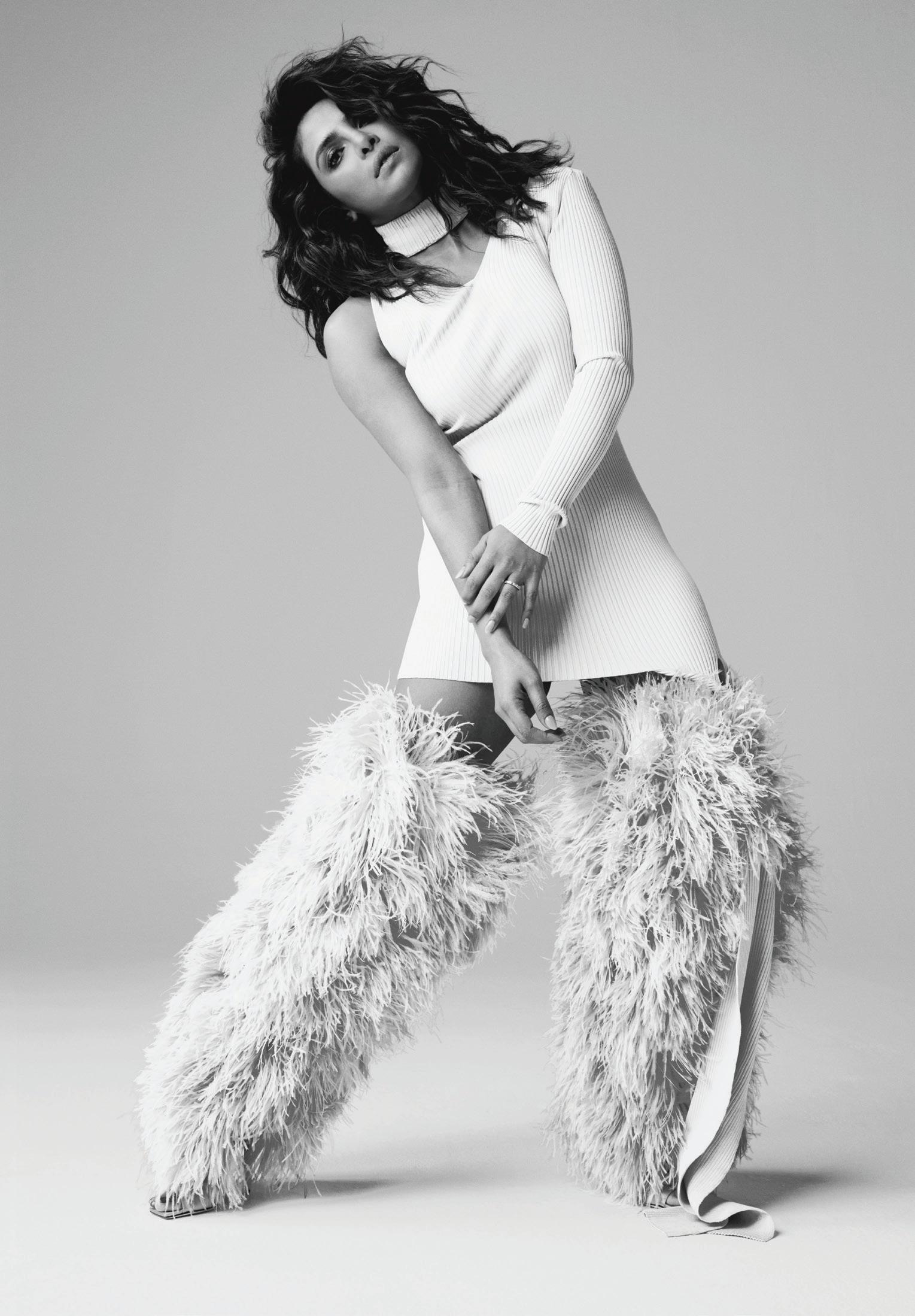
Makeup by LIZ MARTINS
Nails by MICHELLE HUMPHREY
















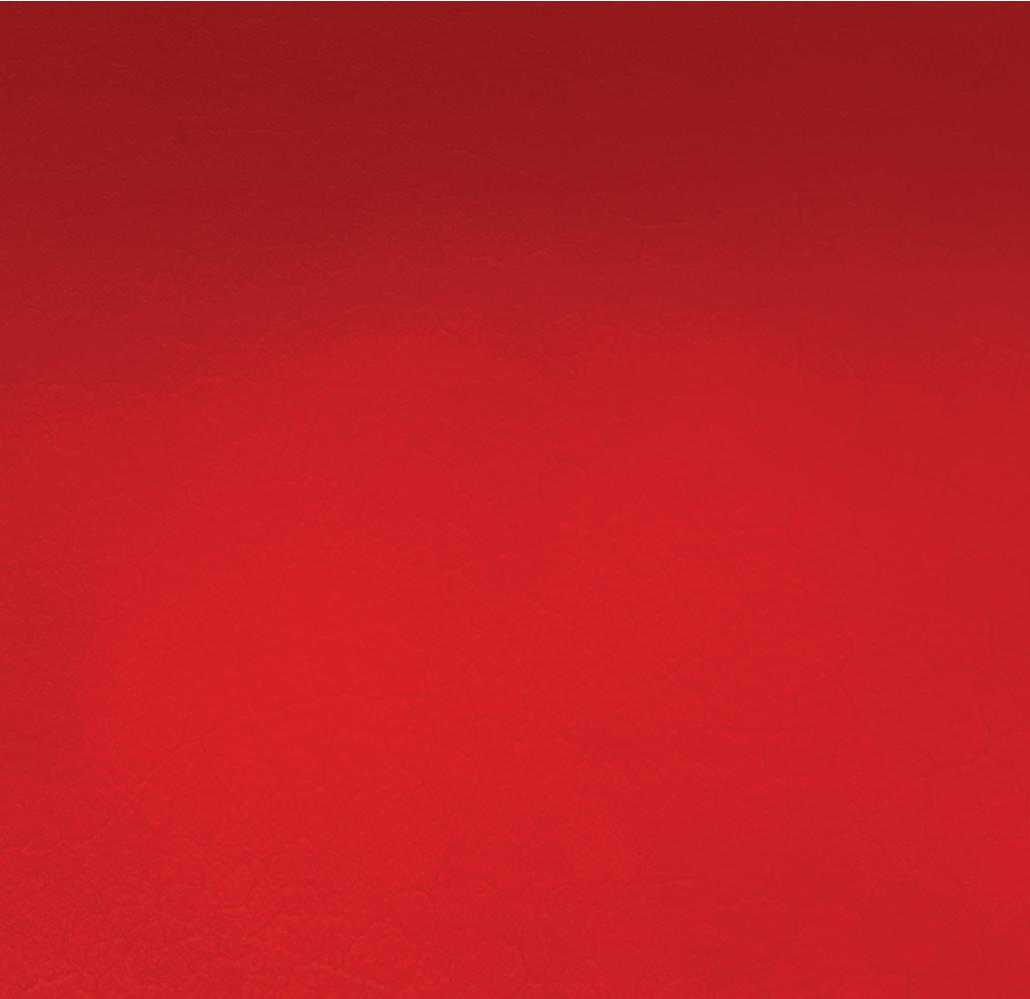









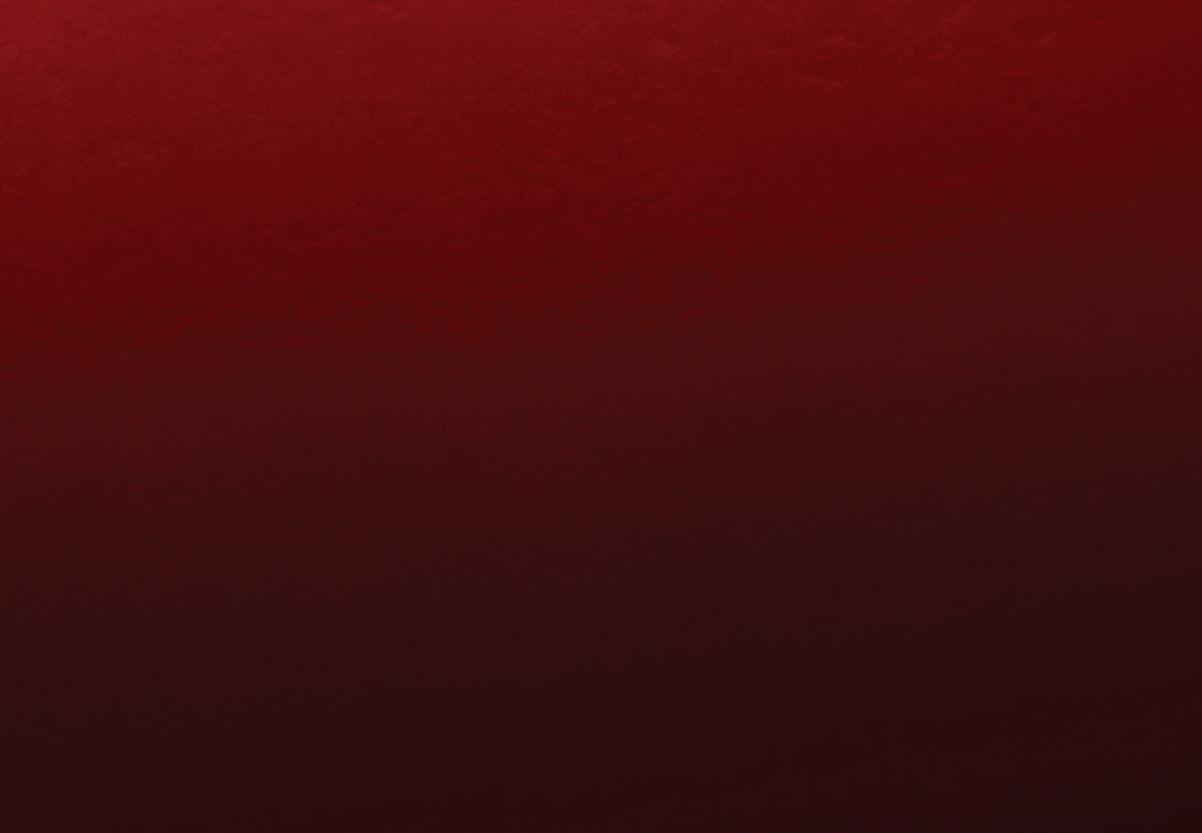


Celebrate change agents who are blazing a trail to a new and better future— inspiring, educating and celebrating individuality, beauty and style everywhere.
For someone who didn’t set out to build a fitness empire, Tracy Anderson sure did change the game. She created the Tracy Anderson Method, a dynamic, holistic approach to movement that balances the body by activating small muscles to create that elusive long, lean dancer’s physique. She has members-only studios in New York City, Los Angeles, the Hamptons and Madrid, Spain, and she’s built the largest bank of fitness content on record with over 170 DVD workouts and the TA Online Studio, a video-on-demand streaming service. “I don’t consider myself an entrepreneur because I didn't set out to start a business,” Anderson tells GRAZIA USA. “I set out to create a body of work that actually supported the complexity of being human—the complexity of aging, the complexity of wanting to feel balanced and connected to your body.”
Anderson spent five years researching a group of 150 women as they engaged in custom workouts and walked away with leaner, transformed bodies. “I still didn't even do that to back a brand or anything,” Anderson says. “I just did it to figure out a way forward for people that couldn't get comfortable in their bodies.”
Her business grew after Gwyneth Paltrow—who was trying to lose stubborn baby weight after the birth of her son Moses— lost 11 inches in the first 10 days of working out with Anderson. The two became business
partners in 2008. Today, Anderson’s brand has body and skincare products, activewear collections, at-home exercise equipment and more. She’s constantly coming out with new launches and workouts—and won’t be slowing down anytime soon. “I learned that when the

and tend to it in different ways.”
It's a workout philosophy she’s making sure her clients can benefit from, too. “I was signing up to create the largest language of choreography fitness had ever seen because each week, when people come to the online studio, there are three new classes waiting for them. I create 10 new hours of content a week now.”
She also brings that same level-headed approach to life outside the fitness studio. “At the end of the day, I'm very forgiving of the things that I don't get done, and I'm very proud of the things that I do accomplish. I let go because I care very much about my sleep,” she says. “I also care very much about my intimate relationships with my partner, my children, my friendships, my team. I try and just make sure there’s quality in my life.”
body gets bored, systems start to shut down,” Anderson shares. “At 48, I feel better and more boundless in my body, like I can do anything, and move however I want. I have no pain, and that means that I have to have a continuing, evolving conversation going with my body
Anderson may not have known just how far her brand would go when she did her first research study in 2001, but she realized she created something pretty special when she was training Madonna and was credited as the pop singer’s fitness “secret weapon.” “It hit the press that I had some special [gift],” she recalls. “But I don't believe in gurus. I worked really hard to have the skills that I have.” She adds, “I felt the recognition that I've built something of substance, and it took a few years, but I realized I didn’t want to be beholden to train individuals, I wanted to give it to the world.”
—WORDS BY COLLEEN KRATOFILThe fitness pioneer knows the secret to a happy life and strong body is all about balance
For too long, sexual health has been marginalized in mainstream discussions about wellness. However, maude, an innovative brand dedicated to inclusivity, accessibility and education, has emerged as a catalyst for change in an industry long overdue for transformation. Maude's founder and CEO, Éva Goicochea, envisions sexual wellness as an essential part of overall well-being, embracing a holistic approach to sex and continuously adapting its understanding of intimacy to meet the diverse needs of its community. With the tagline "intimate care for all," maude now offers a range of products, including sleek vibrators, water-based lubricant, jojoba oil massage candles, mineral bath salt soaks and all-natural arousal support gummies—which are all now available at Sephora, marking a significant step forward.
After studying marketing in New York, Goicochea pursued a career as a legislative aide in healthcare at the California Medical Association before transitioning to ecommerce and brand strategy. In 2017, she combined her skills and embarked on the journey to establish maude. Today, she’s one of only 10 Latinas to have raised over $10 million in venture capital for a consumer goods company.


"For decades, sexual health was excluded from mainstream wellness conversations," Goicochea tells GRAZIA USA. "Maude aims to foster an inclusive perspective, provide an accessible product range and offer an educational platform. It was developed in response to an industry long overdue for change. Coupled with maude's
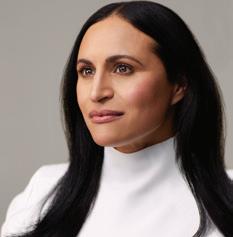
holistic approach to sex, which views sexual wellness as integral to overall well-being, the brand's approach is constantly evolving." Building the brand presented Goicochea with challenges, but she recognized the importance of staying the course. "I knew it would be a lengthy process to establish a category-defining company and advocate for positioning the category alongside beauty products in stores," she says. "I had confidence that maude's philosophy would resonate with consumers who desired more from this category. I trusted our potential to expand beyond sex essentials and create a diverse range of products, and this trust fueled our strong execution."
Since entering Sephora, Goicochea believes that maude has "established a new standard, pushing the boundaries of retail for this category and creating modern and evocative in-store experiences." Reflecting on the past five years, she adds, "We have redefined the concept of intimacy, imagining daily practices as intimate and developing products to support individuals in various aspects of their lives, not just in the bedroom." Moving forward, maude aims to venture into the realms of beauty and wellness. "Our presence at Sephora, a major beauty retailer, sets a new benchmark, challenging the limitations of retail for this category and cultivating contemporary and engaging physical buying experiences. We adapt our understanding of intimacy to meet the needs of our community, no matter where the road takes us."
—WORDS BY CASEY BRENNANZadeh-Daly grew up watching her mother work behind a beauty counter, and the experience made her fall in love with makeup at a “really young” age, she says. The entrepreneur drew upon her three different majors—in biology, business and fine arts—to bring a well-rounded approach to her beauty line, Kosas, which she launched in 2015 with four lipsticks. Getting the brand off the ground and finding manufacturers and distributors was “really challenging,” she recalls, but her love of makeup propelled her forward and she built the multi-product line that's available today. “I still love to do my makeup every single day,” she says. “I have such a desire to be able to provide every tool that anyone would need.”
KRATOFIL—WORDS BY COLLEEN
The model and entrepreneur made a memorable appearance at Miami Swim Week in July 2022 when she revealed her pregnancy on the Sports Illustrated Swimsuit runway. More recently, Williams English graced the pages of the 2023 SI Swim issue as a 2023 SI Rookie while she was eight-months pregnant. "I felt very 'I am woman,'" she tells GRAZIA USA. "It was so much more meaningful to me because I was carrying my baby girl." Next, she'll debut a 12-piece collection from her swimwear line Nia Lynn, made in collaboration with SI Swim

—WORDS BY HANNAH
MILITANOBoard-certified dermatologist and neuroscientist Dr. Elmariah launched the science-driven skincare line Aramore in 2022. The brand’s co-founder created the current five-product line-up (there are more on the way) with other top scientists in dermatology, chemistry and natural compounds who were all looking for products they would use themselves. "The focus of anything that we do is innovation and changing the dialogue in the field of skin health, cosmetics and beauty," Dr. Elmariah tells GRAZIA USA. “We want to look our best, we want to feel our best, but what that requires is healthy skin.”
—WORDS BY HANNAH MILITANO
The founder of maude is bringing a modern approach to sexual wellness and intimacy
Acclaimed photographer Timothy White, who’s well-known for shooting
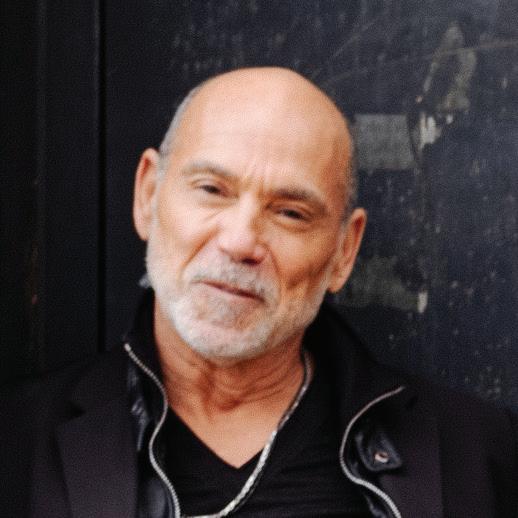
A-list stars like Brad Pitt riding a motorcycle in the desert and Arnold Schwarzenegger smoking a cigar, began his career in New York City after getting his big break with Rolling Stone. Next, he headed west to Los Angeles and moved into the legendary celebrity haunt The Sunset Marquis Hotel.
Over time, White became enamored with West Hollywood due to its central location to major movie studios, beach, mountains and downtown nightlife. “It got to be a part of me over time. It became a place I called home,” White, who is one of the newest "Creators" in Visit West Hollywood's "Creators Series," tells GRAZIA USA. “West Hollywood is a microcosm of a lot of different things. It’s a small community within a really big community, and it’s all about entertainment, creativity and diversity.”
Growing up in the ‘60s and ‘70s, White didn’t initially dream of photography. “I was looking for an alternative that worked for me, and photography clicked,” he shares. “I became attracted to it. It just came together.”
Over his decades-long career, he’s traveled the globe photographing big names across the industry,
including Audrey Hepburn, Paul McCartney, Whitney Houston and Guns N’ Roses to name a few. “When I was hired by Rolling Stone to work with Guns N’ Roses, I had my eye on a location, a liquor store down on Santa Monica Boulevard that had this neon light. It was my way of seeing things at that corner—just a couple of guys standing there, and with the right lighting and lens, I could make a beautiful picture come to life,” he says. “That picture was always in the back of my mind. Within six months, I became the [Rolling Stone] cover contract shooter and Guns N’ Roses exploded and became this huge rock ‘n’ roll band.” White is the co-owner and curator of the L.A. outpost of the N.Y.C.-based gallery Morrison Hotel Gallery at the Sunset Marquis. He also uses the hotel as a venue for producing events “from live concerts to thematic events that are related to what we’re doing in the gallery,” he explains. For instance, if there is a show about David Bowie, or a genre like hip-hop or rock ‘n’ roll, the property becomes a destination for tourists and natives alike. “It’s not just the hotel that has its own history and
pedigree; we’ve helped to create that. I’ll never forget some of things we’ve done there, from [shooting] Miley Cyrus to Gary Clark Jr.,” he says, adding, “I’m lucky to have helped create something and to be recognized by the West Hollywood community. I’ve become a part of it.”
As one of the world’s most sought-after photographers, White enjoys working with people he respects—but he remains humble about how far he’s come. “I have a strong work ethic, and I’ve worked really hard to get to where I am today,” he says. “I’m a New Jersey kid. I look back and think, ‘How did I get here?’”
The talent’s love for Hollywood, music and the gallery have all come together to create an incredible career for White, and he’s not slowing down anytime soon. “My experience and wisdom gave me a lot of opportunities,” he says. “I love feeling confident I can create something new and exciting. That keeps me going.”
—WORDS BY JACLYN ROTHJohnson started her namesake brand at 24 years old and the self-taught designer quickly learned that business savvy is just as important as creativity. She got an early endorsement from Barneys New York and has grown to have the support of retailers across the United States, Europe, Australia and Asia. “I started small, and since then it’s been a decision of mine to make sure that the brand is growing deliberately and doesn’t lose what made it feel special,” the designer tells GRAZIA USA. Johnson says she’s been “fairly obsessed” with fashion from a young age and has always been especially interested in the way clothes “can serve to empower the wearer.” As the child of archaeologists, Johnson began traveling early on in life, and those experiences are still part of what informs her work today. “My design process often starts with an aggregate of inspirations; a trip, an artwork, a textile, and evolves from there,” she explains. “I try to make things that feel joyful and transporting. From a young age, I’ve always been exposed to different points of view, and I think that led to my love of craft and collaborating with artisans globally. Exploration and preservation of local traditions is something I find very inspiring and is at the heart of my designs.” ”
 —WORDS BY COLLEEN KRATOFIL
—WORDS BY COLLEEN KRATOFIL
Bukunmi is an art director, creative producer, editorial photographer, fashion stylist and writer who has contributed to over 100 digital editorial outlets. She’s racked up an impressive résumé working with brands like Puma, Revlon and Savage X Fenty, as well as Alicia Keys, Paris Hilton, Offset, Selena Gomez and Willow Smith to name a few. “The joyful communication surrounding the images sparked my desire to fully pursue a path as an artist and so I embarked on a mission to spotlight individuals and communities of paramount significance, while sharing my unique vision with the world,” the multihyphenate talent star tells GRAZIA USA. Next, she'd like to expand her portfolio by collaborating with other revered artists, publications and galleries. One day, she hopes to exhibit works in esteemed galleries and establish herself as a fine artist through her knowledge and experiences. “Ultimately, my journey is driven by a dedication to continuous growth, innovation and the creation of impactful narratives,” she shares. When she needs time to recharge, Bukunmi prioritizes nature, art and self-care. “Taking long walks or hikes in nature allows me to disconnect from the digital world and find solace,” says the artist. “Exploring art exhibitions and galleries exposes me to new perspectives and techniques, inspiring my own creativity. Mindfulness practices like meditation and self-reflection help me recharge and approach my work with renewed energy.”
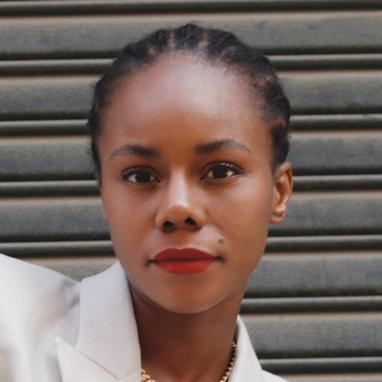 —WORDS BY HANNAH MILITANO
—WORDS BY HANNAH MILITANO
The world-famous photographer’s work is inspired by his love of West Hollywood
The distinguished French jewelry brand Dinh Van has a reputation for exceptional craftsmanship thanks to the brand’s founder, Jean Dinh Van. The visionary designer spent 10 years honing his craft at Cartier alongside Jeanne Toussaint before beginning his own company in 1965. Inspired by the art and fashion of the decade, Dinh Van wanted to create pieces that could be worn on the street—not just saved for special occasions. His avant-garde and innovative approach to jewelry design quickly caught on because of his focus on modernity, understated elegance and sophistication. “My jewelry is never a fantasy,” Dihn Van once said. “I want it to be as essential as a doorknob, with the added emotion of discovering something completely new.”
He reimagined common constructs and brought completely new elements to his designs, like a square-shaped ring or first-of-its-kind tubular-shaped jewelry. Menottes is one of his most notable collections and stands out as an emblematic representation of the brand's distinctive style and artistic prowess. First introduced in 1976 in a dazzling display of creativity, Menottes means “handcuffs” in French, but the name originated when Dinh Van intertwined the heads of two identical keys. Once combined, the clasp the separate parts created seemed nearly impossible to undo and became a lasting symbol of design ingenuity.

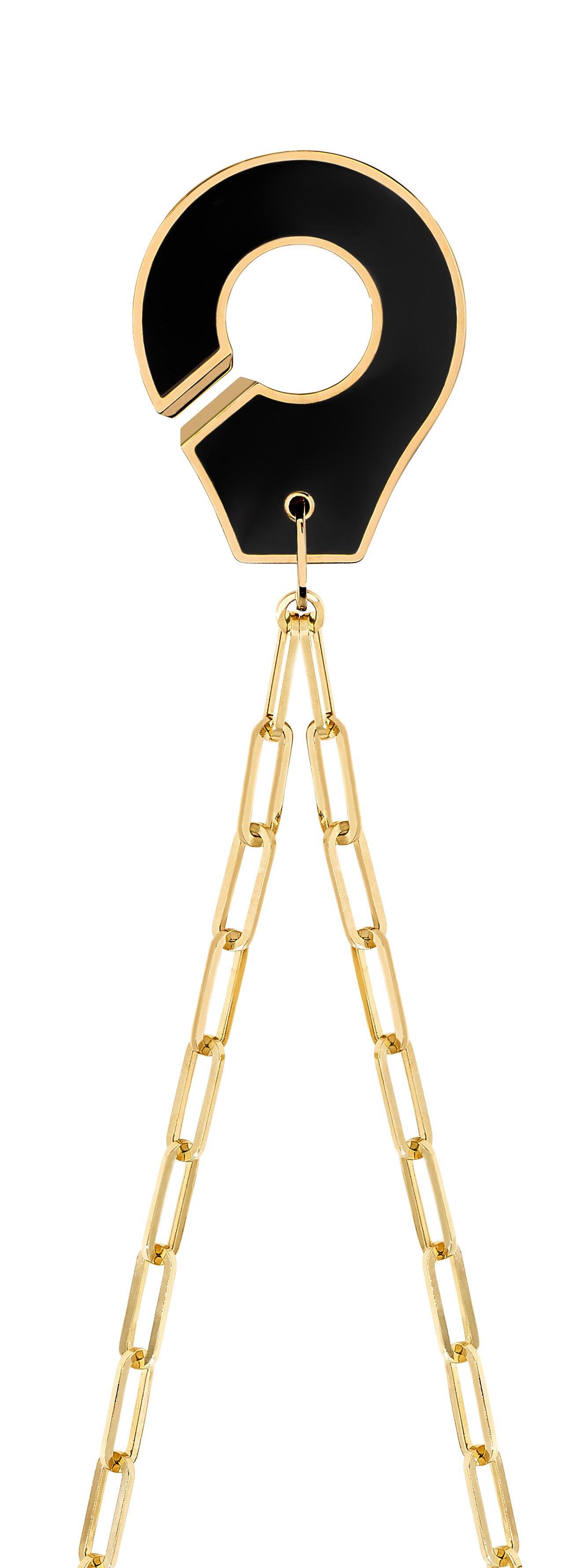
This year the brand unveiled six new limited-edition designs that include four Menottes Dinh Van R10 necklaces featuring ornamental stones, such as lapis lazuli, malachite, coral and chrysoprase. There are also two equally breathtaking playful and precious double-sided XXL Menottes R35 pendants—one with lapis lazuli and mother-of-pearl, the other featuring malachite with onyx. Corinne Le Foll, managing director of Dinh Van, says that now more than ever, the Menottes Dinh Van design “continues to travel through time with panache, powered by a symbol of love and attachment.” She adds, “Easy to wear, absolutely French and belonging to those in the know, Menottes Dinh Van is without any doubt an ultimate luxury piece you want to carry with you every day.”

 Words by CASEY BRENNAN & COLLEEN KRATOFIL G
Words by CASEY BRENNAN & COLLEEN KRATOFIL G
Almost 50 years after debuting, the line still captivates the hearts of jewelry enthusiasts and reaffirms Dinh Van's status as a trailblazer in the world of modern luxury.
Dinh Van's iconic Menottes collection continues to redefine contemporary elegance
Soul and diamonds are inextricably intertwined in the art of high jewelry—a concept well understood by Hollywood’s vaudeville vixen herself, Mae West
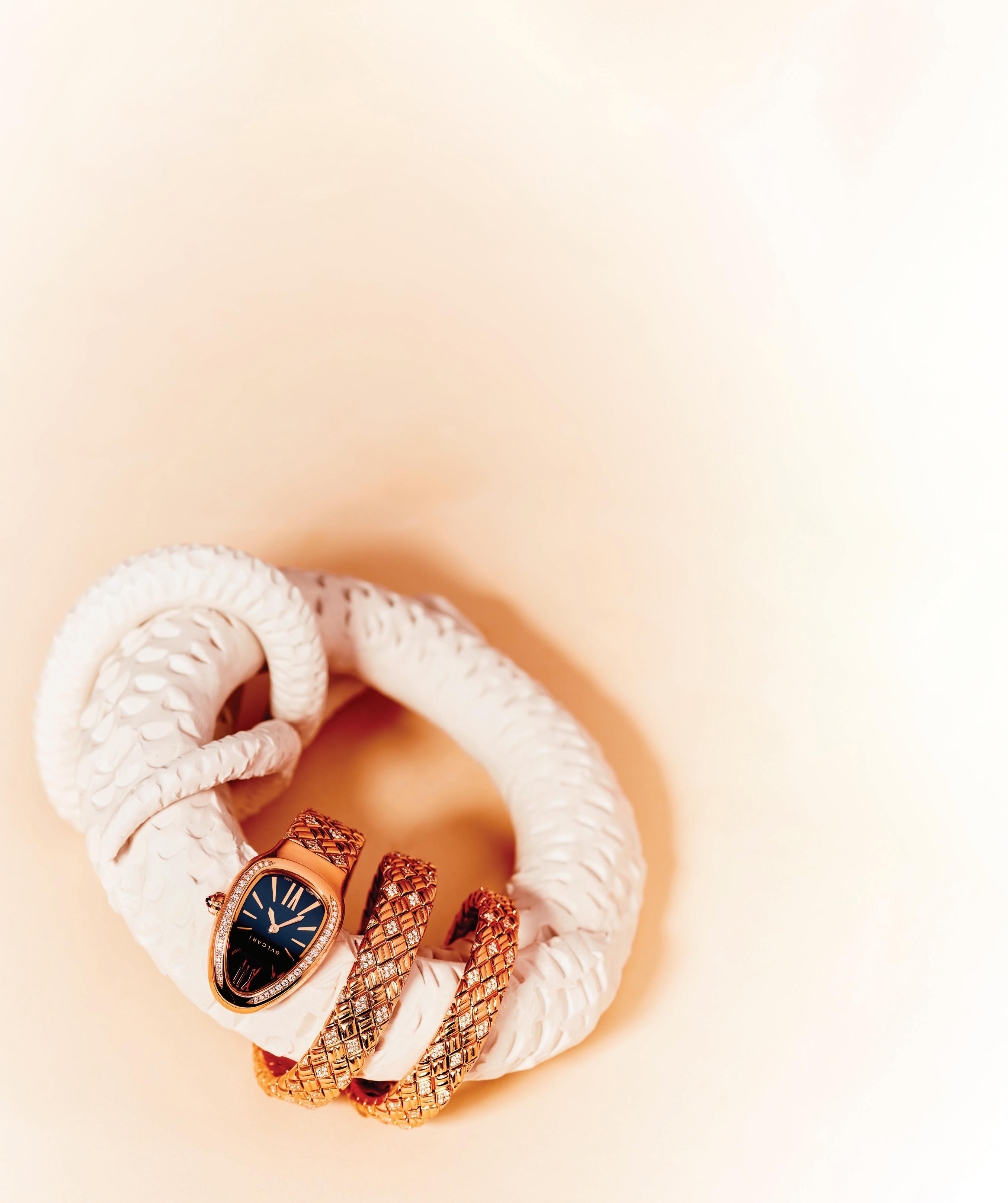 Photographs by VLADIMIR MARTI
Creative Direction by MARNE SCHWARTZ & DANÉ STOJANOVIC
Styled by LAURA JANE BROWN
Photographs by VLADIMIR MARTI
Creative Direction by MARNE SCHWARTZ & DANÉ STOJANOVIC
Styled by LAURA JANE BROWN
 David Yurman Chain Necklace in 18ct with Diamonds, davidyurman.com.
David Yurman Chain Necklace in 18ct with Diamonds, davidyurman.com.
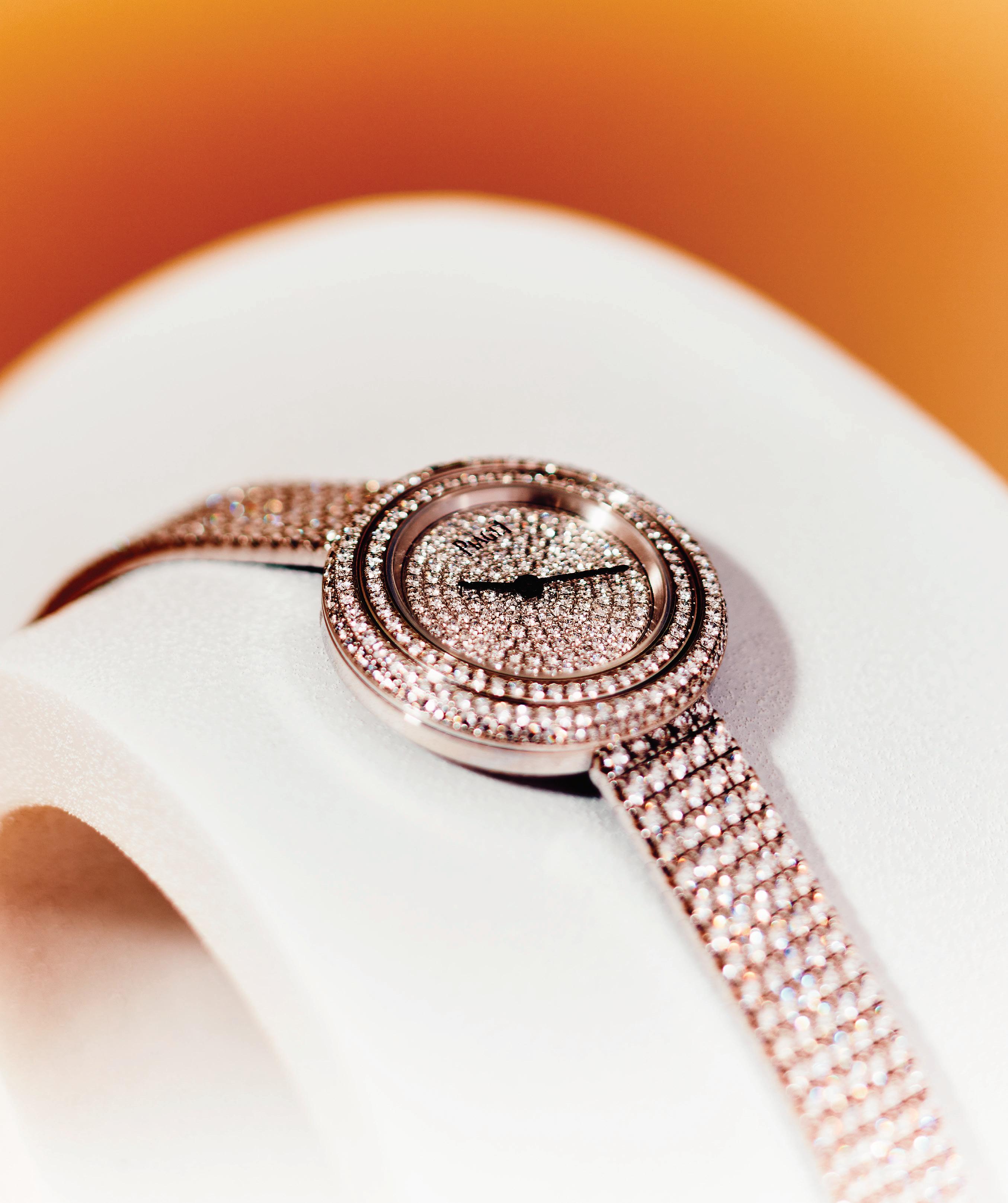
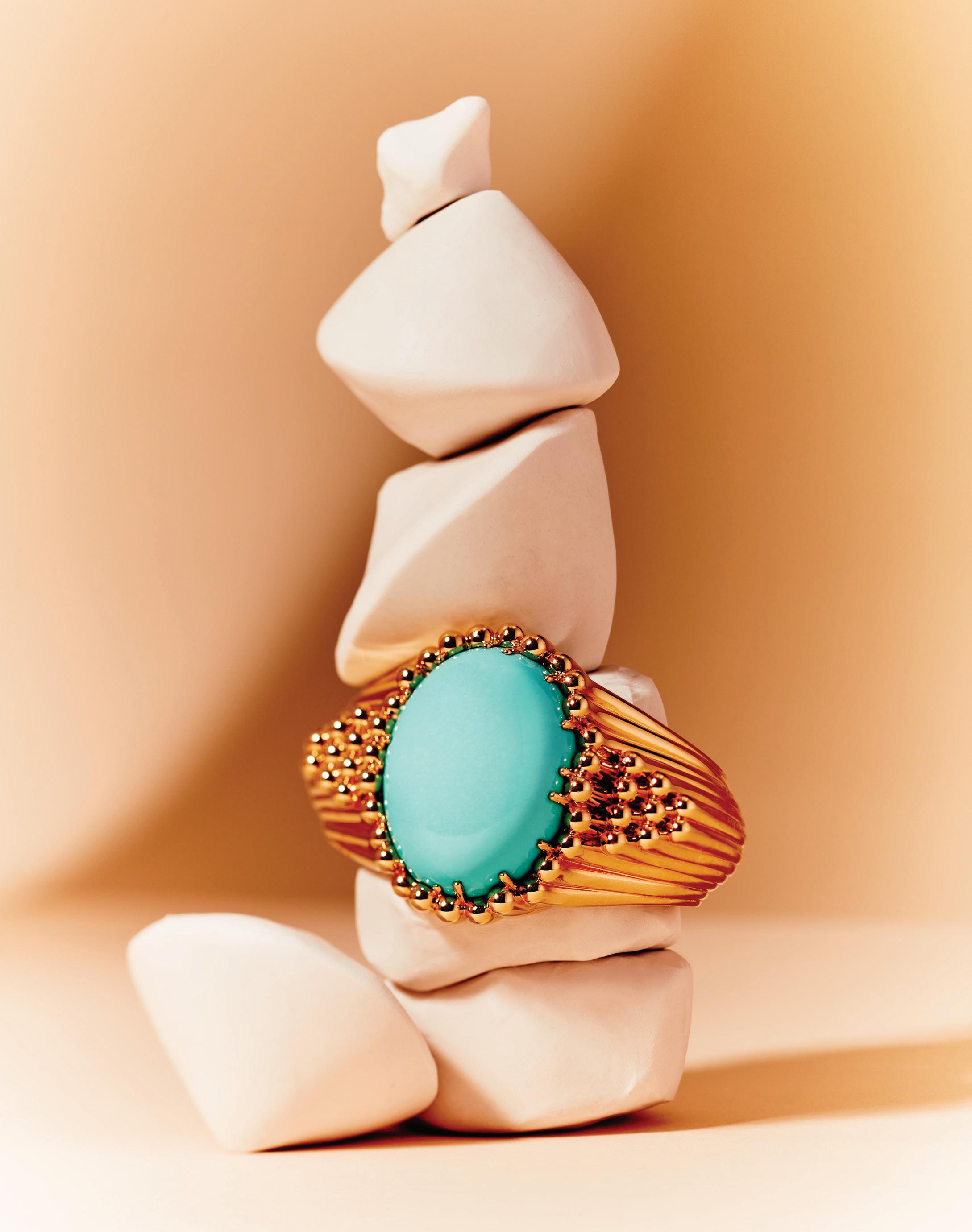


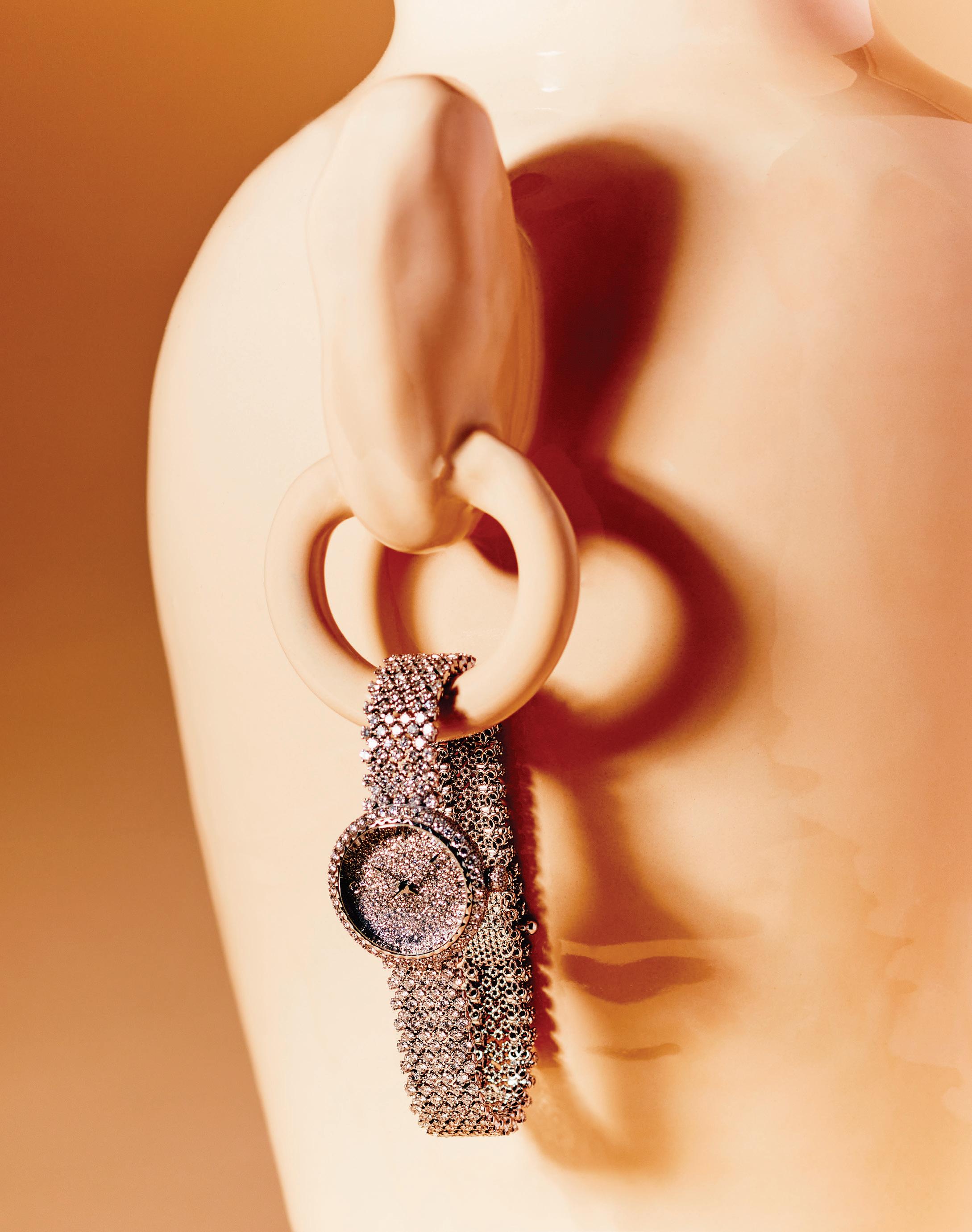
 CHANEL Plume de Chanel Brooch in White Gold with Diamonds, (800) 550-0005.
CHANEL Plume de Chanel Brooch in White Gold with Diamonds, (800) 550-0005.
Louis Vuitton embarked on a journey to redefine design over a decade ago with the travel-inspired Objets Nomades collection—and GRAZIA USA discovers innovation and surprise are still at the top of the itinerary
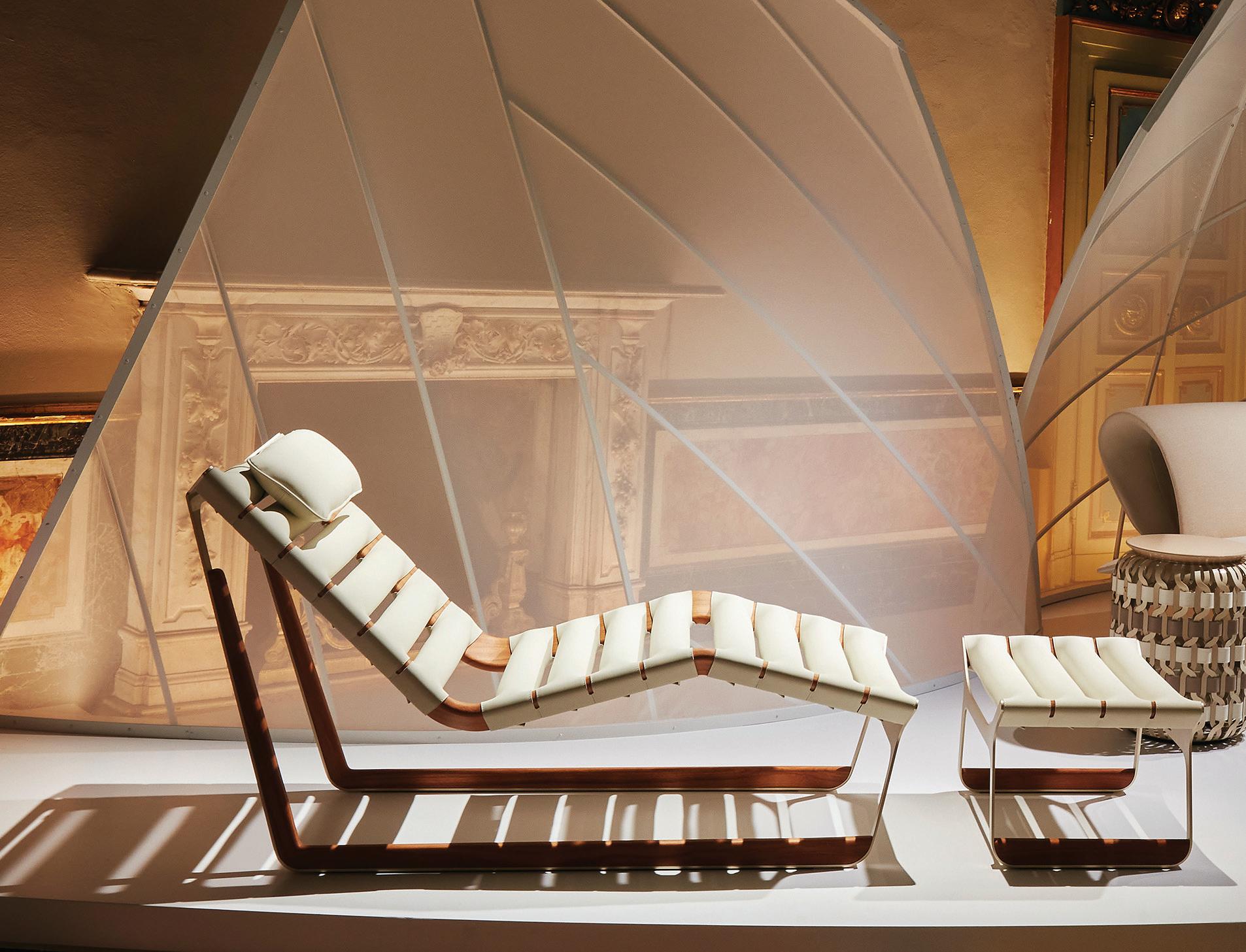 Words by AARON RASMUSSEN
Words by AARON RASMUSSEN
Venerable design pioneer Louis Vuitton was founded on travel, and the Maison continues to draw inspiration from around the globe with its special take on the topic: Objets Nomades. Since the collection’s inception in 2012, some of the world’s most renowned designers have imagined more than 70 items that Louis Vuitton’s talented artisans then meticulously bring to life, much to the delight of armchair travelers. This year’s 11 enchanting results from design luminaries—the likes of Barber&Osgerby, Zanellato/ Bortotto, Frank Chou, Raw Edges and India Mahdavi, to name a few—were exhibited in Italy this spring at the frescoed 18th-century Palazzo Serbelloni during Milan Design Week. The new pieces presented in Louis Vuitton’s Objets Nomades collection showed the playfully innovative side of the acclaimed French house, and the intricacy of the craftmanship contributed to the feat of setting the exhibition apart from others displaying collectible high-design pieces at Salone del Mobile.

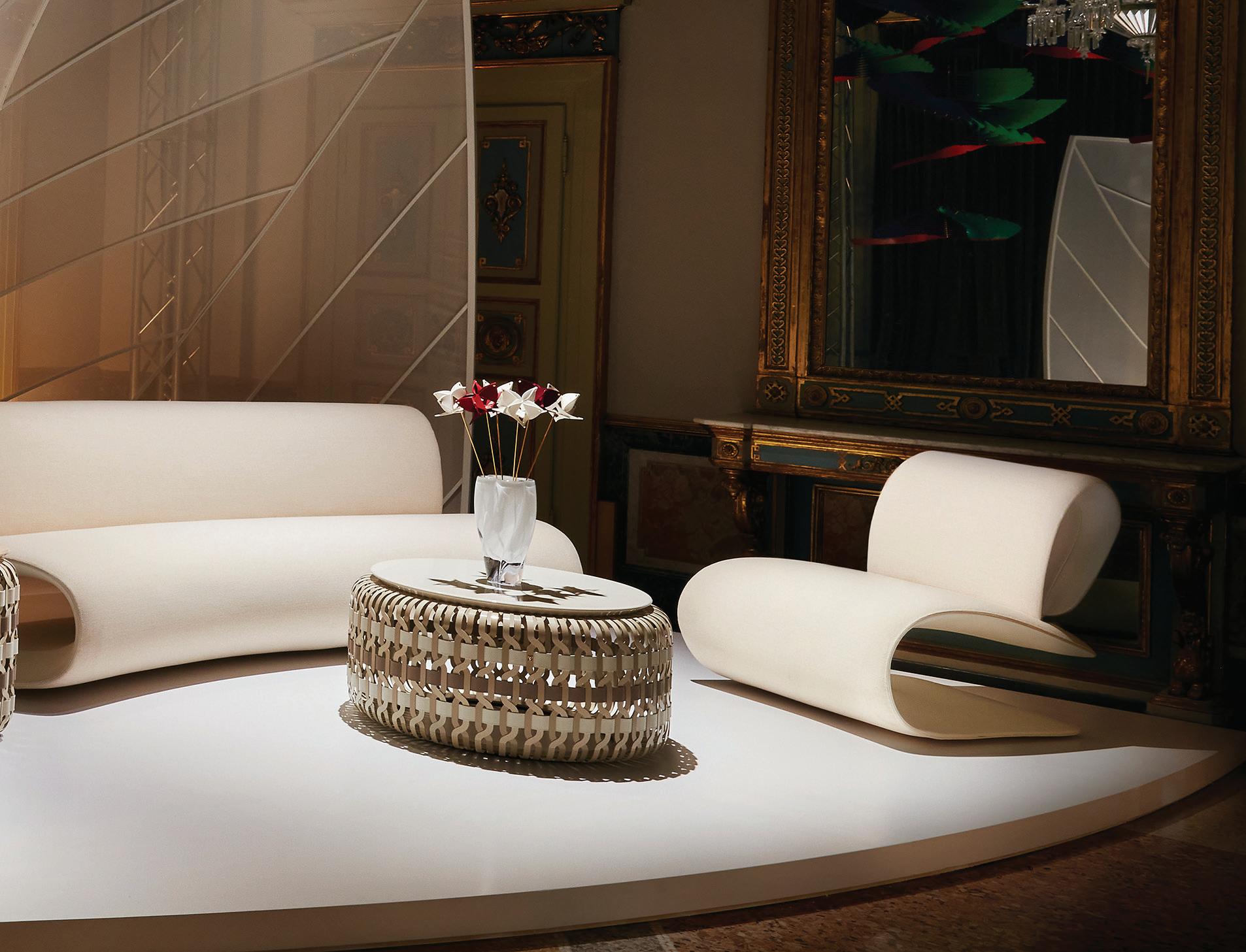 Luxurious cream-colored Louis Vuitton leather forms Atelier Oï’s dunelike Belt lounge chair and ottoman. A Zanellato/Bortotto Basket coffee table complements the layering effect of Beijing-based designer Frank Chou’s Signature armchair and sofa, which are modeled after terraced fields in China.
Luxurious cream-colored Louis Vuitton leather forms Atelier Oï’s dunelike Belt lounge chair and ottoman. A Zanellato/Bortotto Basket coffee table complements the layering effect of Beijing-based designer Frank Chou’s Signature armchair and sofa, which are modeled after terraced fields in China.
Louis Vuitton initially asked its pioneering contributing Objets Nomades designers—an elite cutting-edge crew that includes Studio Campana, Atelier Oï and Marcel Wanders studio—to explore the ever-evolving concept of travel; and like any expedition, the resultant collection of limited-edition furniture and home décor objects has remained in a constant state of change ever since. Just as deciding how to see a destination is a purely personal choice, each designer brings to the endeavor a unique vision and definition of what a permanent “nomadic” object might look like for the home, with the newest designs drawing on everything from the feeling of movement to emotions an object creates within viewers. “In the beginning, it seemed like maybe it was going to be a bit of a challenge,” Amsterdam-based Wanders says of the travel theme. “We were not going to make chairs for schlepping around the countryside, but slowly and surely, we were able to find meaning in this nomad concept, and we made things that move and transform and take on second lives.”
At the exhibition for the newest collection, for example, Wanders floated his undulating Capeline lamps above his Diamond sofa, armchairs and vase. Each pendant light’s wavy tiers of white glass are based on the broad-brimmed summertime hat and appear to be “just in the middle of a dance,” Wanders says.
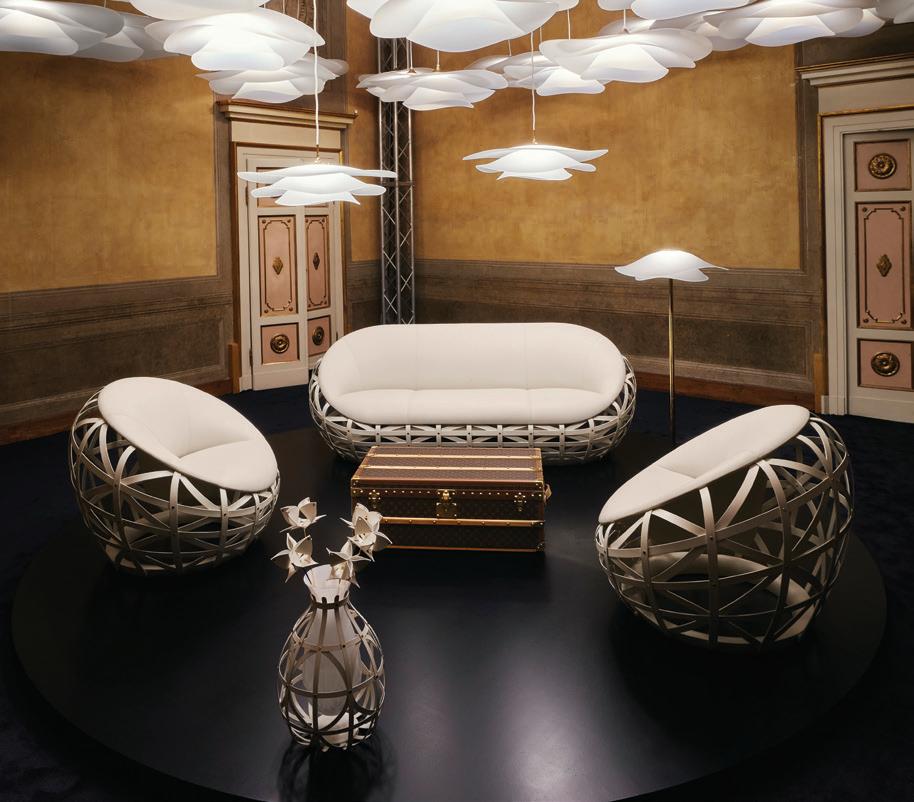
The lamps aren’t a literal take on the concept of travel and mobility. For Wanders, the meaning behind his Objets Nomades pieces go much deeper. Rather than something that relates to physically exploring distant lands, he sees his creations as collectibles meant to be passed down to others. “Vuitton wants to make things that last ages,” he says. “One day you’ll give it to your kids, or someone else will buy it from you. The pieces are time travelers.”
São Paulo-based contemporary furniture designer Humberto Campana of Studio Campana can relate to the concept of time travel. He and his late brother, Fernando Campana, created one of their most iconic creations, Cocoon, a perforated egg-shaped hanging chair, at the start of their Louis Vuitton collaboration 11 years ago—and it’s continued to be a showstopper ever since. This year, Campana’s point of view
was reflected in a metallic version of the chair that’s covered with a mosaic of 10,000 mirrored tiles.
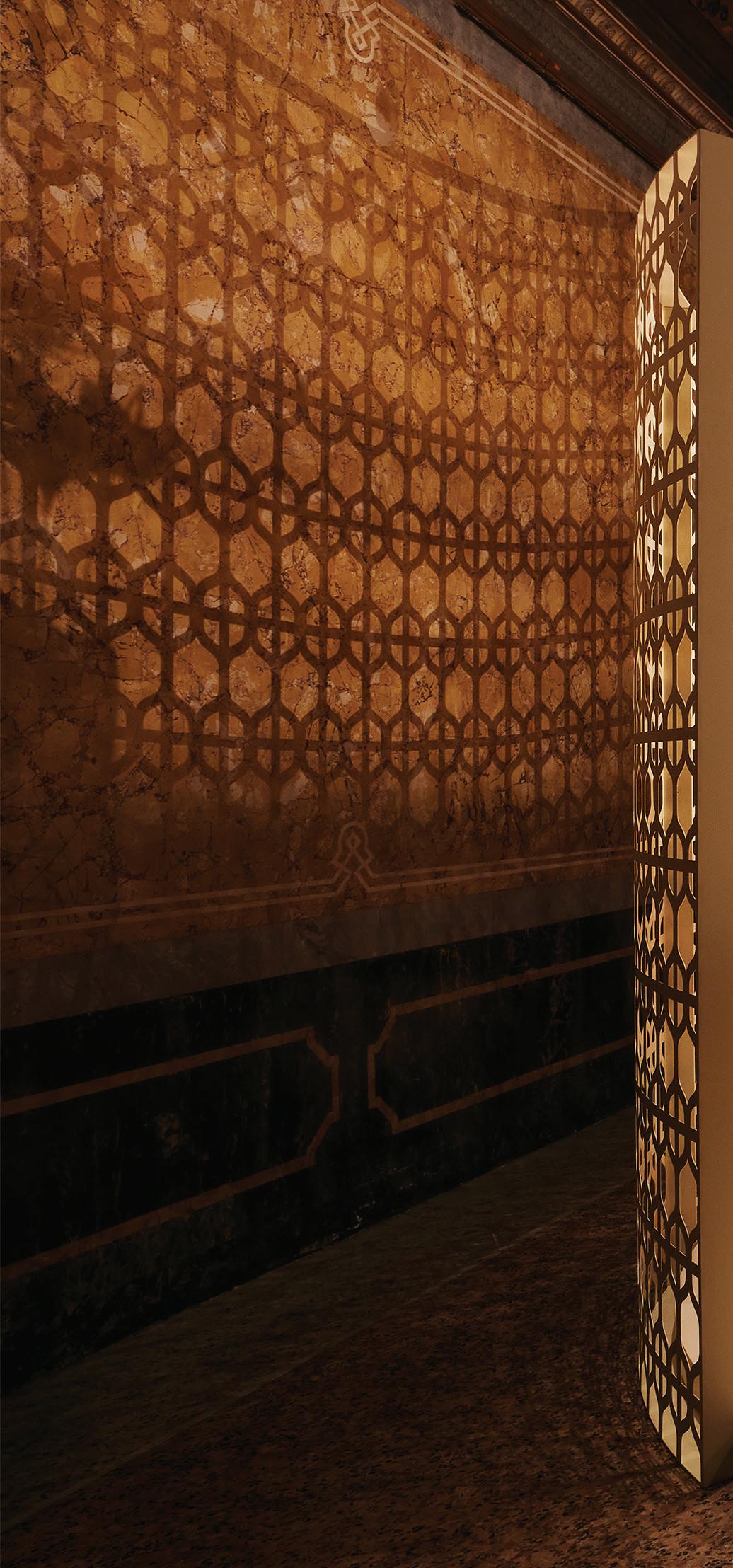
Campana explains the pilgrimage from concept to finished product is one that Objets Nomades designers embark on with Louis Vuitton’s masterful artisans by their side. “It’s very organic, like children playing,” he says of the back-and-forth interaction during the first stages of the process to nourish the seeds of design ideas. “Things start to grow, and maybe the artisans can see another solution, or better use of an object, like transforming a fruit bowl into a huge armchair. It’s really inspiring working with them.”
The self-taught Brazilian designer appreciates how the brand realizes his pieces are a metaphoric invitation to travel to a “surreal world, one of dreams.” He adds, “I make bridges between art and design, and I love having the freedom not to get stuck in a solution of functionality. This is good because Louis Vuitton understands my process of taking people to imaginary worlds.”
While Campana works in the surreal, the Swiss studio Atelier Oï—made up of Aurel Aebi, Armand Louis and Patrick Reymond—grounds work in the designers’ love for materials and the emotions produced when they stretch these elements to the limit. The new collection premiered stackable origami bowls made with a single piece of slotted and folded leather designed to hold travel souvenirs and other mementos while simultaneously evoking a Japanese adventure. And Quetzal—a lighthearted decorative mobile crafted in 14 bold blue, red and green leather “feathers”—was inspired by the plumage of the South American bird of the same name. “You can imagine being in the middle of Brazil” while looking at this piece, Aebi explains. “The objects inspire you to think about the rainforest.”
Even the studio’s Serpentine table with its glass top and leather straps binding the base and legs evokes the feeling that those sitting at it are attached and traveling together, in a sense, as they take a moment to share the events of their day. “When you look through the table, you can feel that—that you are connected to all the persons around the table,” Aebi says. “In design, you often say form follows function and not form follows emotion. But you need that emotion, and all these pieces make you travel in your mind.”
“LOUIS VUITTON UNDERSTANDS MY PROCESS OF TAKING PEOPLE TO IMAGINARY WORLDS.”
—Humberto Campana


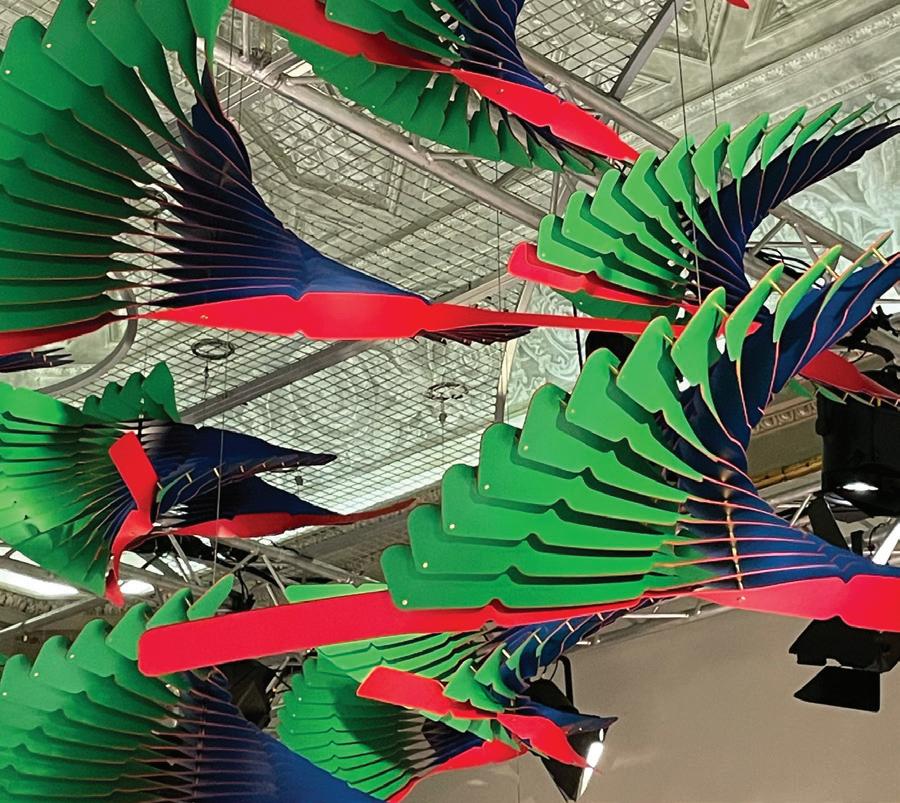 Binda sofa and armchair by Raw Edges; Basket coffee table by Zanellato/Bortotto
Binda sofa and armchair by Raw Edges; Basket coffee table by Zanellato/Bortotto

The Louis Vuitton travel trunk was originally conceived as an elegant yet practical piece of luggage that would accompany stylish globetrotters to far-flung destinations and hold their treasures collected while away. Even for modern travelers, what to do with all of those keepsakes once home can be an issue—one that the esteemed designer Marc Newson has tried for years to unpack. “I am always struggling to find places to put my things, and I have accumulated a lot of ephemera and books over my life and travels,” Newson tells GRAZIA USA. As a result, he says, “I have been exploring systems of display for some time now, having always had trouble finding shelving or display cabinets that I really liked.”

So when Louis Vuitton presented Newson the opportunity to recreate the classic trunk as a display piece of art for the home—as part of his longstanding collaboration with the Maison—the designer jumped at the chance. The result: Cabinet of Curiosities, a nod to Louis Vuitton’s heritage and savoir faire. The modular trunk system showcases the fashion house’s legendary monogram-covered hard exterior, but a wonderfully inventive world awaits inside. Newson’s interior features


19 removable leather-covered cubes in three sizes, creating a luxurious labyrinth of spaces and shelving that can be rearranged in more than 1,000 configurations to exhibit one’s personal collection of romantic travel books and curated knickknacks from around the world. Some trunks are even equipped with secret compartments for valuables, and the cubes are available in three colorways: natural VVN leather; vivid yellow; and vibrant red, green and blue.
“The intention was to create a fun and sculptural piece that would pay homage to the history of the trunk,” Newson says of his design, which adeptly combines whimsicality and simplicity and shows off the designer’s revered eye for detail. “It's a highly functional shelving system, and the practicality of this within what could otherwise be considered a specialty piece is appealing.”
The designer appreciates how the original travel trunks are “readymade heirlooms,” and now his Cabinet of Curiosities elevates the tradition to the next level since it’s made to measure and Louis Vuitton will craft only 40 in the world. Says Newson, “I especially like the concept of having something forever, and then to pass down for generations to come.”
G

Priyanka Chopra Jonas and I have been playing a game of cat and mouse for two weeks, trying to find a window of time to talk during her non-stop world press tour for blockbuster TV series Citadel. When she finally appears on my laptop screen, from her sofa in Los Angeles, she tells me she’s exhausted from all the traveling, but you would never know it—the former Miss World looks positively radiant (if only jet lag was so kind to us all).

Five years in the making, the actionpacked thriller Citadel—Chopra Jonas stars alongside Richard Madden and Stanley Tucci as a spy on a mission to save the world—is an ambitious experiment in what a global TV franchise can be. “A show of this kind has never been done before,” she says. “The concept was to create multiple shows around the world that are interconnected but created by different filmmakers and writers. You can watch them individually or together, as there are threads that connect them all.” Three Citadel spin-offs produced in Italy, India and Mexico are in the works.
It’s a fresh new way to make TV but what’s even more exciting is that a South Asian actress is at the forefront of such a ground-breaking project. “Roles like this are predominantly enjoyed by white men,” says Chopra Jonas. “So I really took it is as a large responsibility not just for females but for women of color. It feels great to be in a place as an immigrant actor where filmmakers give me the agency and respect to ask for my opinion.”
For Chopra Jonas, this moment is the
Words by BILLIE BHATIA Photographs by DANNY KASIRYE Styled by KINGSLEY TAO Valentino blazer, skirt, valentino.com; Priyanka’s own ring worn throughout.culmination of more than two decades’ work in the industry (and a filmography that spans 80-plus roles), first as one of Bollywood’s biggest stars, then making the jump to Hollywood with parts in TV hit Quantico, The Matrix Resurrections, the 2017 Baywatch movie and Netflix comedy Isn’t It Romantic Her international star power cannot be underestimated: She is the most followed Indian actor on Instagram (90 million followers) and has been named one of the 100 most influential people in the world by Forbes, Time and the BBC.
Despite all this, Chopra Jonas is astute enough at 40 to understand that celebrity can be a fickle thing. “My job is extremely inconsistent, I could get canceled tomorrow, people could decide I’m not the flavor of the month, anything could happen,” she explains. “I have never been the kind of person who thinks that they have made it.”

It’s this ingrained, stop-at-nothing work ethic (familiar to anyone who is also from a South Asian background) that drives her. You work hard for everything you want in life and then, when you’ve achieved it, you work even harder.
Which might explain why the day after we talk, she is back on a plane, flying to New York to begin the first leg of another press tour for her next project, the rom-com Love Again. Chopra Jonas plays heroine Mira, who is grieving her fiancé’s death by sending texts to his old phone, which are serendipitously received by a handsome stranger (Outlander’s Sam Heughan) who in turn employs the help of Celine Dion—playing herself—to bring them together.
“Can you believe this is Celine Dion’s first film?” asks Chopra Jonas, who confirms that the singer is every bit as much fun as you would hope for. “This film is such a departure
From Bollywood to Hollywood, Priyanka Chopra Jonas has conquered the world. And she’s just getting started...
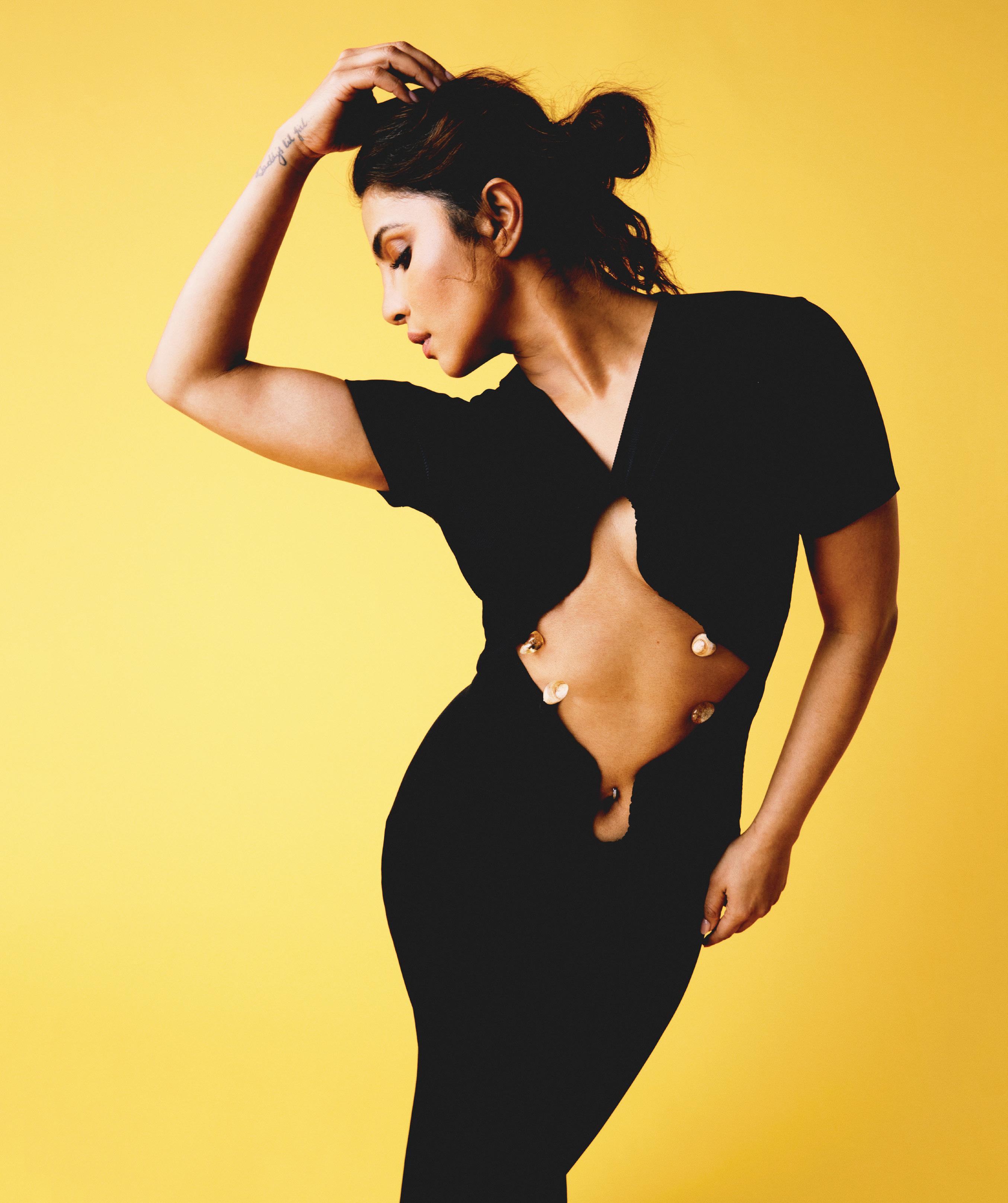 Christopher Esber dress, christopheresber.com.au
Christopher Esber dress, christopheresber.com.au
'THIS HAS NEVER BEEN DONE BEFORE"
from Citadel but it makes you feel good, feel warm and sometimes that’s just what you need, a dollop of comfort and hope.”
Aside from acting, Chopra Jonas has many job titles. She’s a producer, philanthropist, activist, author, investor (in skiwear brand Perfect Moment) and mother. To be a multi-hyphenate to this degree takes talent, ambition, determination and an oftenoverlooked ingredient: support.
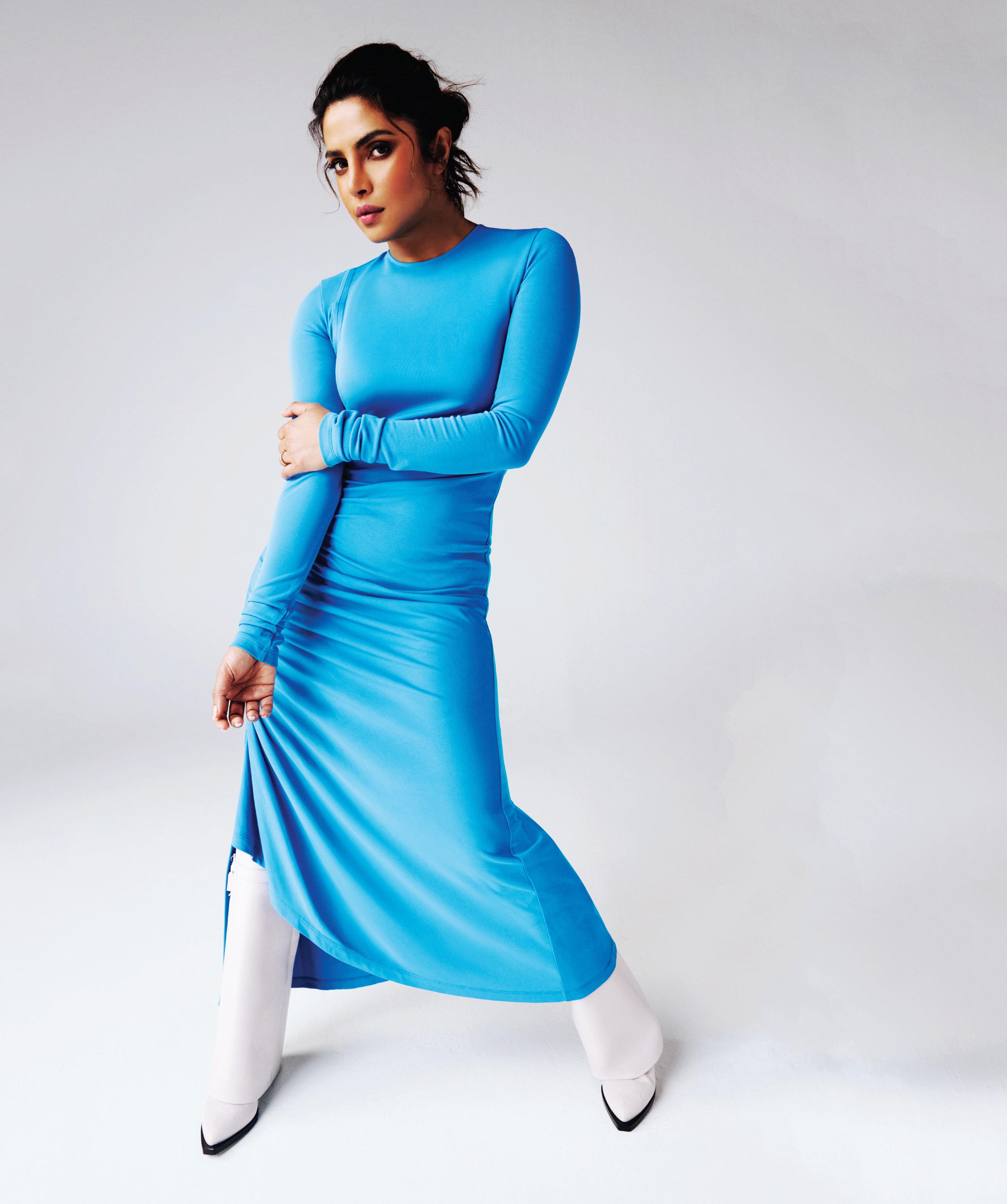
“Professionally, I know that I’m in an amazing place, after 23 years I’m getting the roles I always wanted. Personally, there is nowhere else I want to be but home.” In 2022 Chopra Jonas and her husband of four years, pop star Nick Jonas, welcomed their first child, Maltie Marie, who made a guest appearance at GRAZIA’s photo shoot. “Everything I do, I do for her. She’s the greatest gift that has ever happened to us, she is our homing signal and our beacon of light. But neither Nick nor I could do what we do without the support of our families,” she says.
“I grew up with working parents, so I know the importance of grandparents and the vital role they play. That ethos of shared responsibility was really apparent in my life. My cousins and I all went to each other homes when parents were working—it’s a very Indian thing, and Nick’s parents are so hands on too. Right now, my daughter’s in New York with my mom, probably eating ice cream for dinner and having the time of her life.”
While Chopra Jonas’ current status as an A-lister is as golden as the sunsets over the Hollywood Hills, the transition into the Western market from Bollywood is

"I HAVE NEVER BEEN THE KIND OF PERSON WHO THINKS THAT THEY HAVE MADE IT."Alberta Ferretti dress, albertaferretti.com; Priyanka’s own bracelet.
 Armani dress, armani.com; Bulgari necklace, bulgari.com.
Armani dress, armani.com; Bulgari necklace, bulgari.com.
notoriously difficult. “Did you know I actually came to Hollywood to do music?” she asks, then quickly adds, “Don’t Google it!”
“It was my life’s dream to make Indian music mainstream. I had a few songs out with Will.i.Am, Pharrell and Pitbull [in the early 2010s], but I quickly realized that everything just sounded manufactured and that wasn’t my dream.” (I ask if she ever duets with Nick and she admits they sometimes have dates in the studio when he is recording and sing together, but these songs only make it out to close friends and family.)
Her huge success in Bollywood did not immediately translate to success in Hollywood. “There were so many times I wanted to quit. I was tired of rejection. I felt dismissed and patronized on set, like people didn’t believe I could do my job even when Bollywood is as huge as it is. I had taken such a big risk leaving my career in India and that really was a concern for me. I felt like I had bitten off more than I can chew,” she says.
“Perseverance was my only way out. I kept going one step at a time, one day at a time and here I am today with the most monumental show I’ve ever done and I’m on the cover of GRAZIA as a Brown girl,” she says.
I tell Chopra Jonas what I’ve been wanting to tell her all the way through the interview—that she is entering her “PCJ era.” In the same way Jennifer Lopez became JLo and Sarah Jessica Parker became SJP, the internet is starting to know Chopra Jonas by those three letters, and it feels like a pivotal signifier of her stratospheric success.
“Michelle Yeoh said don’t ever let anyone tell you you’re over your prime when she won her Oscar this year, and I really appreciate you saying that because I was made to feel like my prime had peaked in my 20s. And here you are telling me I’m in my PCJ era in my 40s,” she says.
While Chopra Jonas, of course, is charmingly humble about it all, I can’t help but tell her how much her success means to me, how proud I am to share the same skin color as her, proud to have come from the same heritage, proud that so many women like me will get see themselves as the main character.
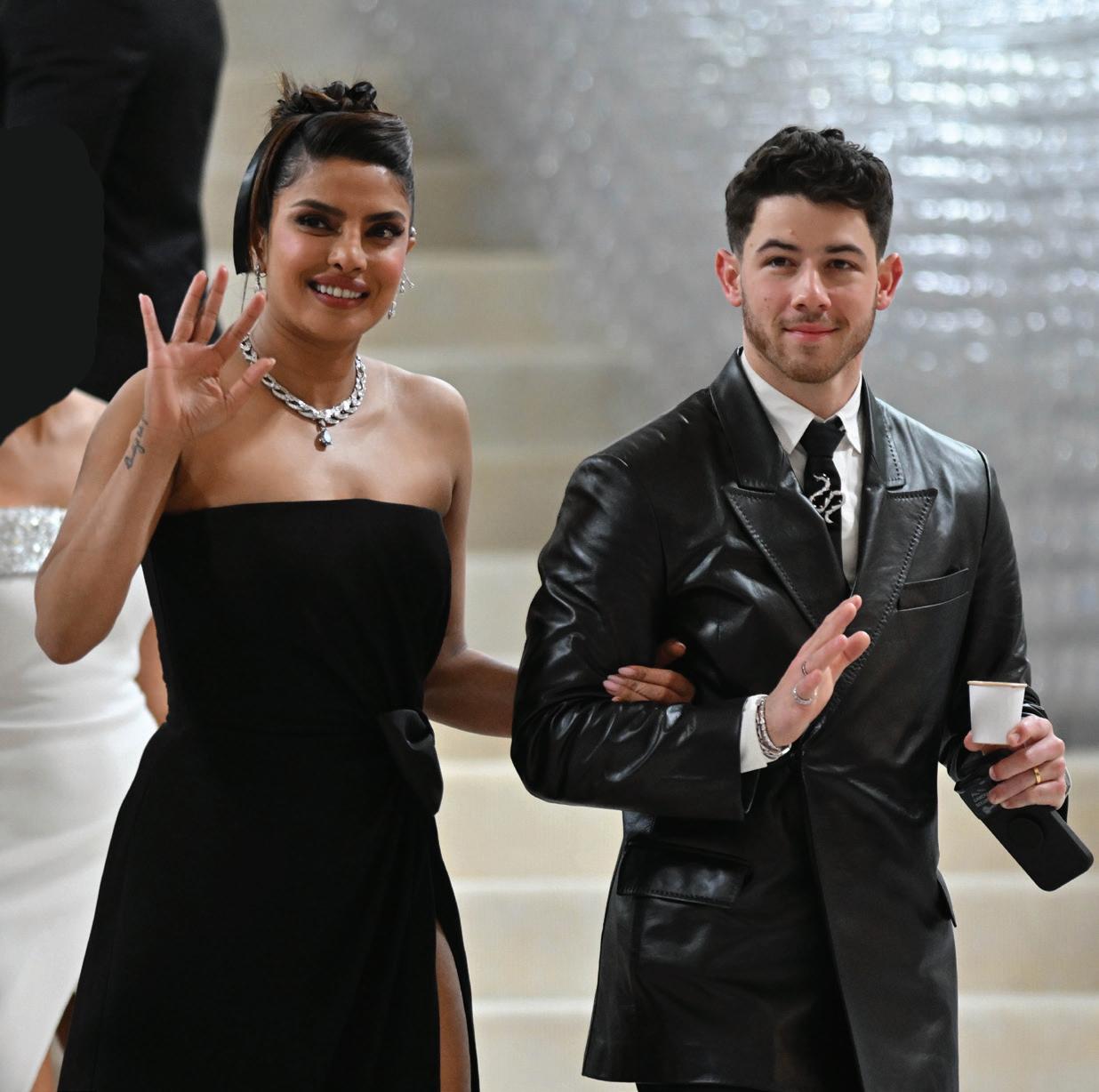
My outpouring prompts her to finally admit that, yes, she does feel proud of herself, too. “I want to raise my daughter in a world where culture is normalized. It’s not about ethnicity or skin tone it’s about differences and celebrating how cool they are.”
We end our conversation on what she has coming up next—a comedy with Idris Elba and John Cena, a project with Mindy Kaling and a Hindi movie with two of Bollywood’s biggest female stars are just some of the projects Chopra Jonas rattles off from the top of her head. So the work ethic isn’t waning any time soon?
“Well,” she says, with a smile, “I’m in my PCJ era now.”
Stream Citadel on Prime Video; Love Again is in theaters now.
"PROFESSIONALLY, I KNOW THAT I’M IN AN AMAZING PLACE, AFTER 23 YEARS I’M GETTING THE ROLES I ALWAYS WANTED. PERSONALLY, THERE IS NOWHERE ELSE I WANT TO BE BUT HOME."
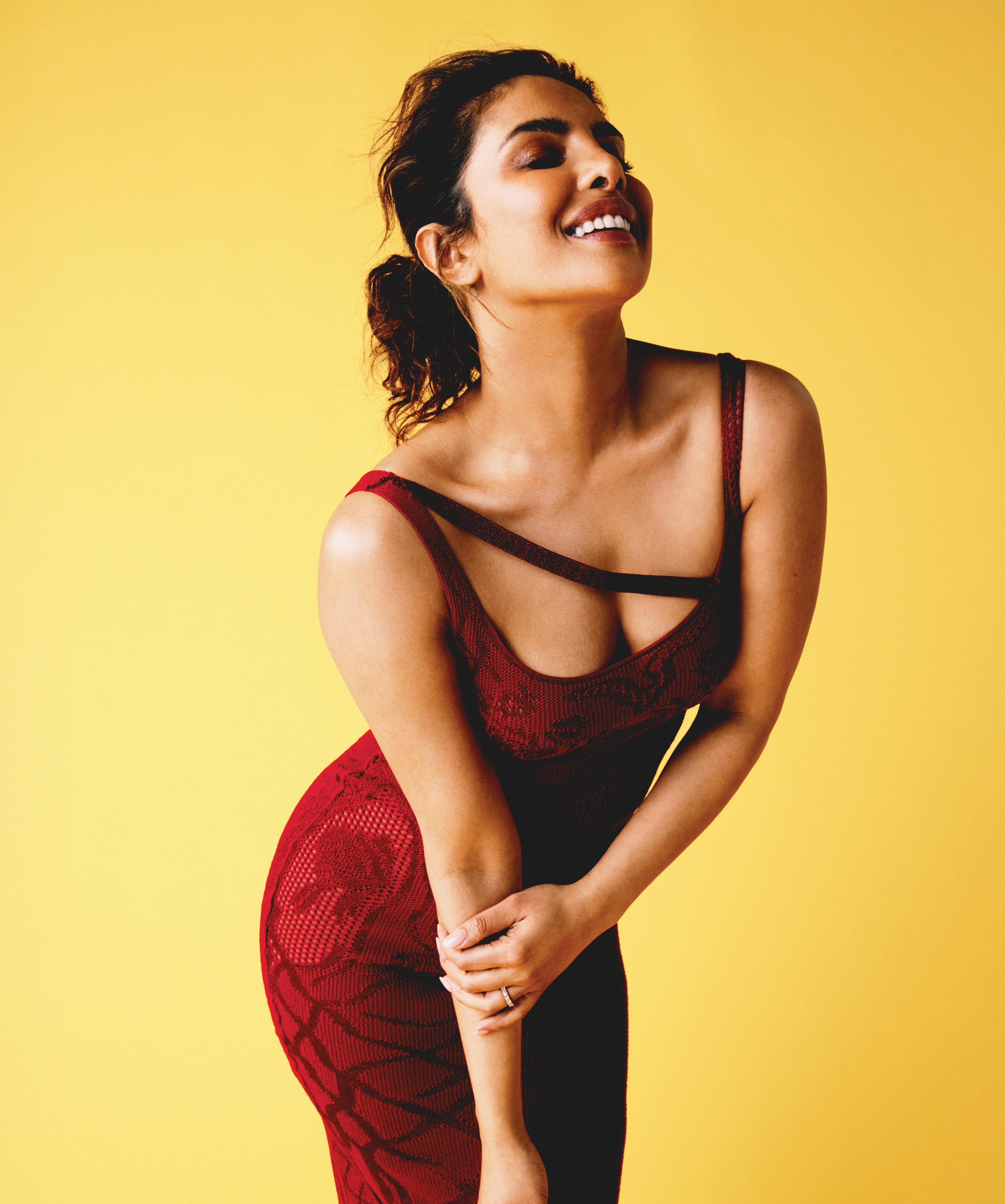

Photographs by SABINE VILLIARD Styled by AURÉLIEN STORNY+MISERICORDIA
Words by EVA MORLETTO

“You Only Love Me” isn’t just the title of a hit that’s been captivating fans with its “song of the summer” energy. It signals Ora’s return to the top of the charts with her third album, You & I—a project she’s been working on for two years and that will be released on July 14. It’s already destined to find global success after the critical acclaim of her first two albums, Ora and Phoenix, released in 2012 and 2018, respectively. “You Only Love Me” and Ora’s other recently-dropped single “Praising You,” do well expressing the singer’s golden moment. The cause of happiness that resonates from the pop star during her interview, however, has a precise name: Taika Waititi, the director and producer that Ora allegedly married in a wedding that was “exactly how I wanted it,” she said in an interview with iHeartRadio. Ora fearlessly admits that this relationship has also given her a new professional energy and inspired almost all the lyrics on the new album. It’s with the same great enthusiasm that the singer retraces the milestones and key moments of her career for GRAZIA USA, recounting dreams and hopes for tomorrow. She proves to be a tenacious and determined woman, thanks also to her personal history and the particular multi-cultural and religious dimension in which she grew up. Ora, now 32, arrived in the Notting Hill district of London when she was only 1 year old. Her family came from Kosovo, torn apart in the ‘90s by clashes that led to the war in the Balkans. Her parents made a courageous escape—but a journey is not without hardships and unknowns.

The escape from Kosovo and her family who believed in her talent. The challenge of being a pop star and a manager. The bond with her rumored new husband, director Taika Waititi, who inspired her album out in July. Rita Ora speaks to GRAZIA USA and explains that when she’s in love, she feels the need to sing it to the world.Fendi sweater, fendi.com.
Let's start right here, from your roots. Your father was a Muslim, economist and pub owner and your mother was a Catholic psychiatrist. Both Kosovo Albanians. How was your childhood?
“My parents have always been a gift, my greatest help, and I was incredibly fortunate to grow up with my siblings, Elena and Don, in what I consider a loving protective shell. My family members were very united about everything, and they taught me determination, grit and loyalty—all fundamental and indispensable values when you want to reach the top. I was very young when we left Kosovo for London. The events of that period of our lives are intense, sometimes moving. It took great courage on my parents' part to face such a radical change of life in a country so different from theirs. Yet we made it and seeing where I am now is beautiful. It gives me great energy. I would not have built all this without the support of my family.”
You have millions of very young fans. What kind of example do you want to be for the kids who also follow you on social media?
“I feel a duty to inspire confidence in my fans. Over the last couple of years, working on the new album, I've really embarked on a journey and opened up to my audience in a way that binds us even closer, and it's brought me so much happiness.”
If you had to choose a moment in your career that made you particularly proud, which would it be?
“In 2015, I had the privilege of performing during the Oscars. It was one of the events I am most proud of and, looking back on it now with a clear head, I can say that that performance represented a moment of growth for me. As I sang and my show unfolded in front of that exceptional audience, I thought: ‘Wow, I can't believe I'm actually doing this, I can't believe it's happening to me.’”
Did you feel intimidated?
“No. On the other hand, I think that one of my best qualities is the enthusiasm I bring to situations. I'm always curious to find out what tomorrow has in store. The future, for me, is all to be built, an adventure with unknown limits. When I work on a new album, the drive I get isn’t just about what I can achieve on a musical level, but also the friendship and teamwork that's created with my collaborators. There are always many efforts, but this is the only way I feel truly proud of what I do. I am positive by nature. I feel that the best is yet to come and that the future will still bring great surprises.”
How much of your relationship is in the song “You Only Love Me?”
“The passage speaks of situations that belong to all couples. It shows those early stages of a relationship where it’s difficult to identify with your partner because you don't know each other well yet. It’s hard to imagine the thoughts and emotions of those we love. You wonder, for example, if the person you fell in love with decides to text you late at night is just a coincidence, because of a moment of madness, or if there is a genuine interest in you. The beginnings of a love story always has a mixture of fear and fun and this song really interprets those strong, sometimes conflicting, but always magical, feelings that I've also felt.”
What does female empowerment mean to you? Who are some of your female role models?
“If I think back to my childhood to all the figures I admired and who were out there trying to fulfill themselves, to assert themselves, to believe in their vision of music and art, they’re artists like Cher, Madonna, Whitney Houston, the Spice Girls. Alongside these artists, is my mother. All of them have been a great source of inspiration for me and for my career, they have given me strength and confidence with their example.”
What does it mean to grow as a singer?
“I've been working day and night on my new album for the past two years. I linked it to a very important theme for me: my love story. For the first time, I'm at the helm of everything you hear, from songwriting to production. I wanted this work to match my moods and feelings and to capture all the happiness I was going through.”
It takes courage to tell the public in such a direct way.
“Work like this can make you vulnerable. For the public, I put myself totally on the line. It’s a decisive album in my journey. But I'm finally in a phase where I feel ready and willing to share emotions and parts of myself that before I preferred to keep private.”
Your image and style right now is a great reflection of your happiness. What is your relationship with fashion?
“I like to use it as a way to express my creativity and individuality. It’s an indispensable tool—a way to affirm my personality. I love to experiment, I try combinations, different styles and sometimes I enjoy being daring with a look. But we have to remember that what works for one person may not work for another. But that's exactly what makes it so fun: fashion helps us create our own style by drawing on different inspirations.”
In these pages you’re dressed in Fendi. What does the fashion house represent for you?
“For me, wearing Fendi means feeling sexy and confident. I am inspired by people like Kim Jones, artistic director of the Roman brand's couture and women's ready-to-wear, and creatives who perfectly understand the role of fashion as a powerful tool for building self-confidence, one that enhances and highlights the strengths of each of us. The last fashion show I attended in Paris was stunning. Kim has been able to work in an extraordinary way; I love the way he was inspired by different eras and played with materials.”
When did you discover the brand?
“Honestly, I've always been a fan of Fendi. Unique materials and bold accessories are the common denominator of the brand's collections, which I always find interesting and full of fascinating details. I enjoyed working with Karl Lagerfeld in the past, we had a very constructive relationship. The commitment and devotion that Lagerfeld had for fashion was an example of how much love he brought to his art.”
Which Fendi garments have a privileged place in your wardrobe?“
I really liked the look I wore at the Paris show during haute couture week. But the Peekaboo Cut clutch is irreplaceable. You can never go wrong with a Fendi bag.”
With your image and music, you express a model of a sensual and selfaware woman. What is freedom for you?
“It’s a concept linked to the possibility of expressing oneself and always feeling welcomed. This is true in every field and, for me in particular, it’s important when it comes to feelings. Being free to love, accepting ourselves for who we are is something I couldn't give up. My life has been punctuated by great transformations, both in my private and professional life. And many of these changes have been decisive. Knowing that I can evolve and always be different, makes me feel free more than ever.”
How would you describe Rita Ora?
“Curious. Fearless. Passionate. Funny. Tenacious. Here, I'm like this.”

Vacation-ready one-piece swimsuits, colorful bikinis and glamorous cover-ups will transport you far, far away as you soak in the crystal clear sea of the Maldives
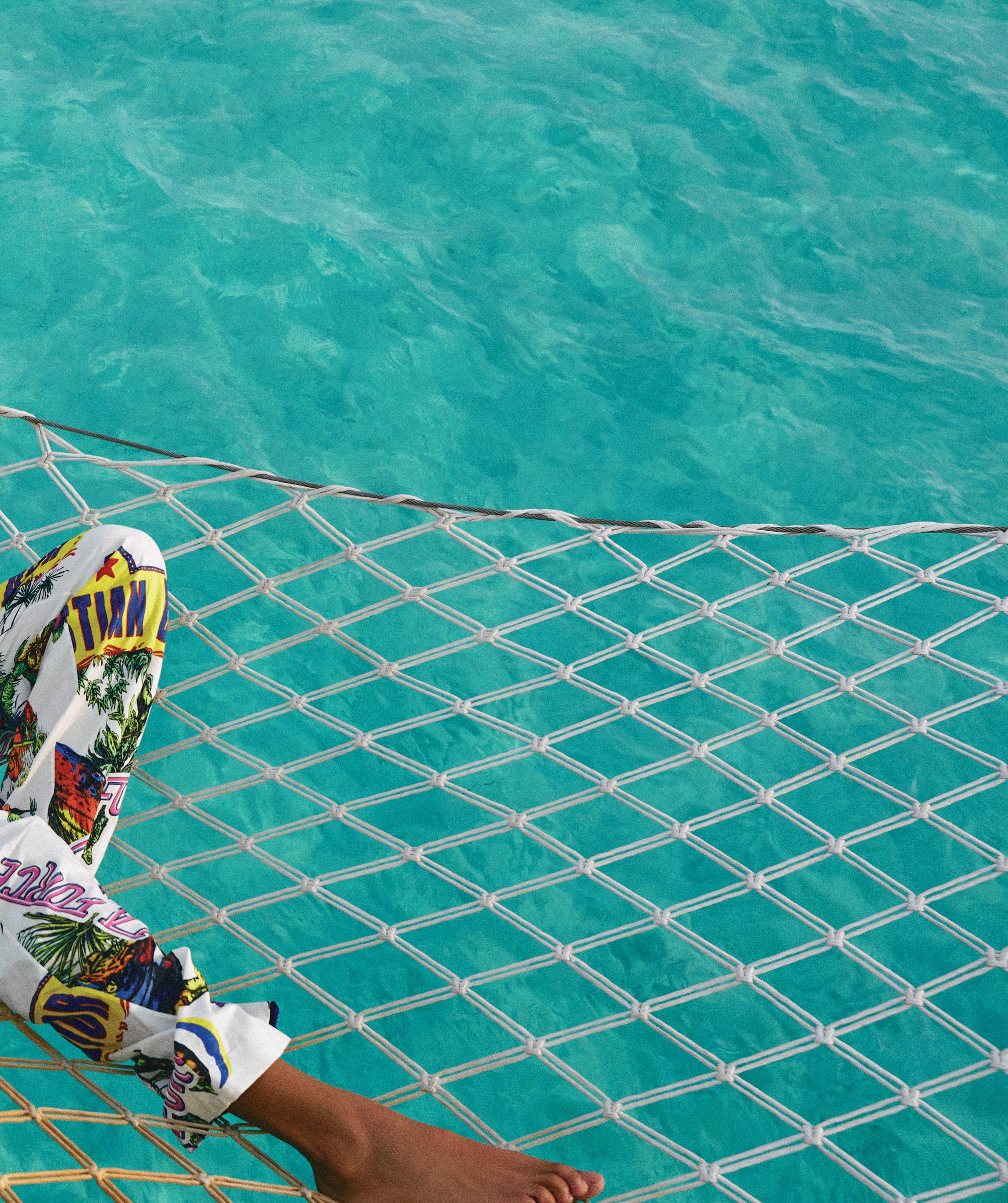 Creative & Fashion Direction by MARNE SCHWARTZ & DANÉ STOJANOVIC
Photographs by VLADIMIR MARTI
Creative & Fashion Direction by MARNE SCHWARTZ & DANÉ STOJANOVIC
Photographs by VLADIMIR MARTI
 Chanel swimsuit, sunglasses, (800) 550-0005.
Chanel swimsuit, sunglasses, (800) 550-0005.




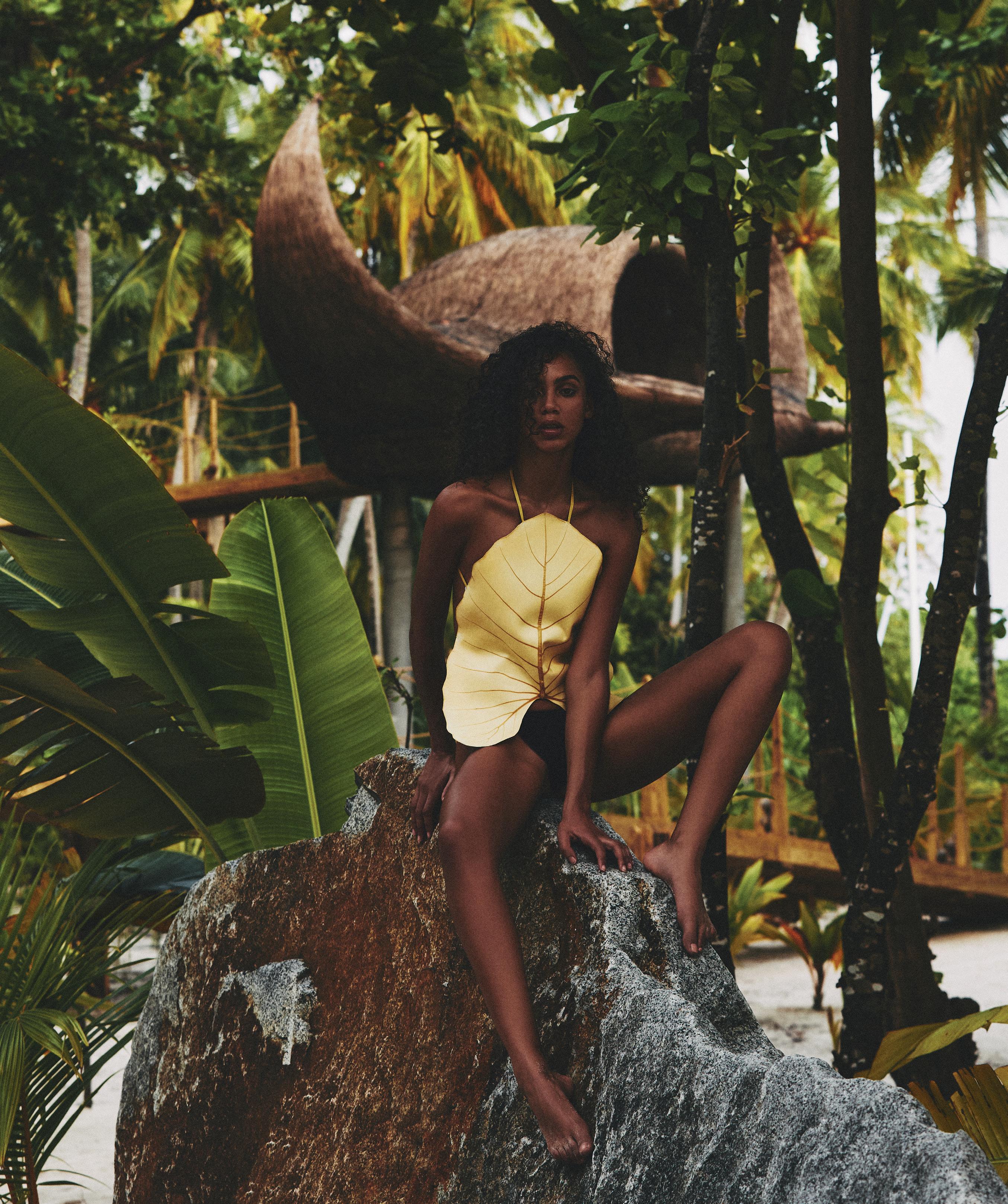

 CHANEL swimsuit, sunglasses, (800) 550-0005.
CHANEL swimsuit, sunglasses, (800) 550-0005.
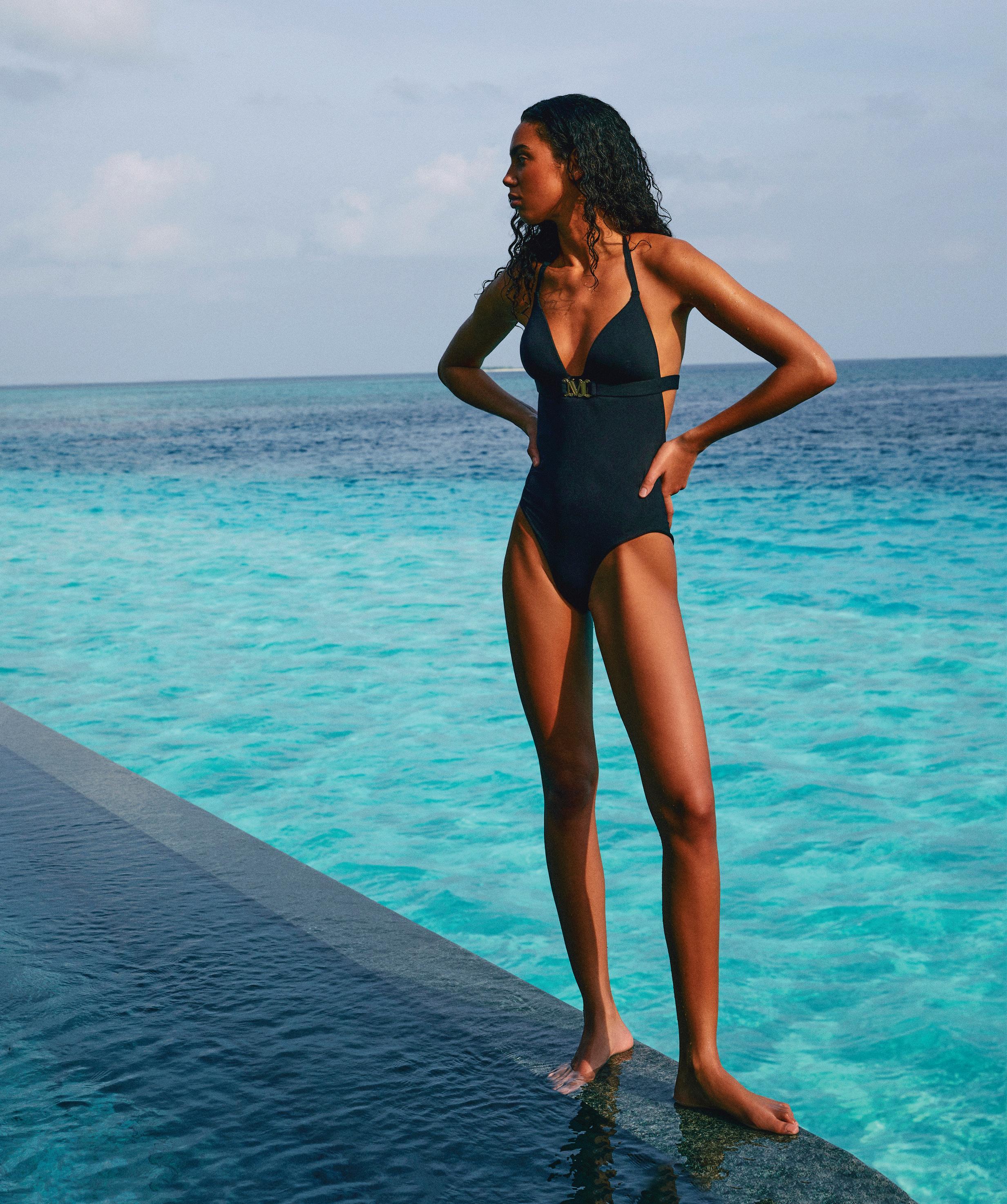

A shimmering jewel in the concrete jungle, Tiffany & Co. reopens its New York City flagship location and puts a new Bird on a Rock collection on full display

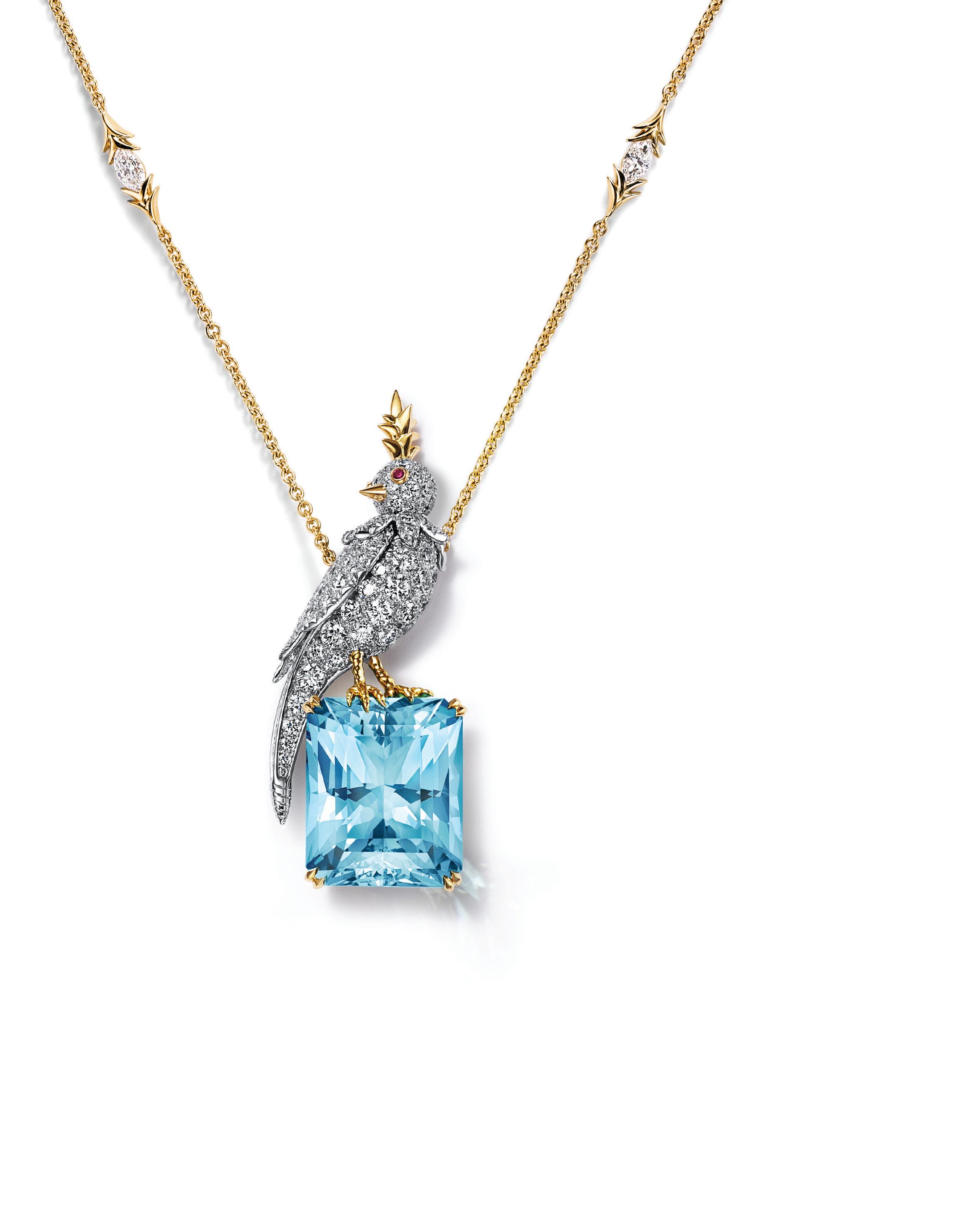 Words by CASEY BRENNAN & COLLEEN KRATOFIL
Words by CASEY BRENNAN & COLLEEN KRATOFIL

Tiffany & Co. has always been synonymous with dazzling diamonds, timeless jewelry designs and, of course, robin’s egg-blue packaging. The brand, founded by Charles Lewis Tiffany in 1837, has also been a hallmark of New York City since opening its doors on Fifth Avenue on the corner of 57th Street in 1940. It didn’t take long for the location to go down in pop culture history when Holly Golightly, played by Audrey Hepburn, glamorously ate breakfast as she window-shopped in the opening scene of the 1961 film Breakfast at Tiffany’s. After a four-year renovation, the iconic institution reopened this year and it’s filled with new jewels, impressive custom artwork and immersive displays (including the “Audrey Experience” which pays homage to the movie with a replica of Golightly’s Givenchy dress on display) for a completely transformative shopping experience.
The 10-floor structure, now dubbed “The Landmark,” retained some touches customers will recognize, like the refurbished Atlas statue and clock above the revolving door. But with the guidance of renowned architect Peter Marino, the interiors have been completely revamped. The building’s core and three new stories were completed by OMA New York, led by Shohei Shigematsu, marking the first holistic renovation since the store first opened.
The Landmark now pays homage to its hometown: As guests enter the space, screens on the walls display iconic Big Apple scenes, including Central Park and the world-famous skyline. The crown jewel, so to speak, is the sculptural spiral staircase that mimics the biomorphic designs of the iconic designer Elsa Peretti.
Guests ascending the artistic staircase will discover dedicated displays to honor the brand’s legendary designers, such as Paloma Picasso, Patek Philippe and Jean Schlumberger. Those coveted Tiffany & Co. iconic engagement rings are on level three, while a new Bird on a Rock collection, which pays homage to Schlumberger’s iconic Tiffany & Co. brooch design, is nestled on the seventh floor. Schlumberger joined the brand in 1956, and the French jeweler took nature-inspired motifs that captured the essence of flowers, animals and marine life and transformed them into wearable works of art for Tiffany & Co.
The Bird on a Rock brooch, created in 1965, is one of Schlumberger’s most famed designs and showcases his exceptional craftmanship and artistic vision. As the name suggests, the piece features a lifelike bird perched on a natural rock crystal base. “The bird is placed majestically on a gem, intentionally divergent in scale, and its head is held high and upright,” Tiffany & Co. Chief Artistic
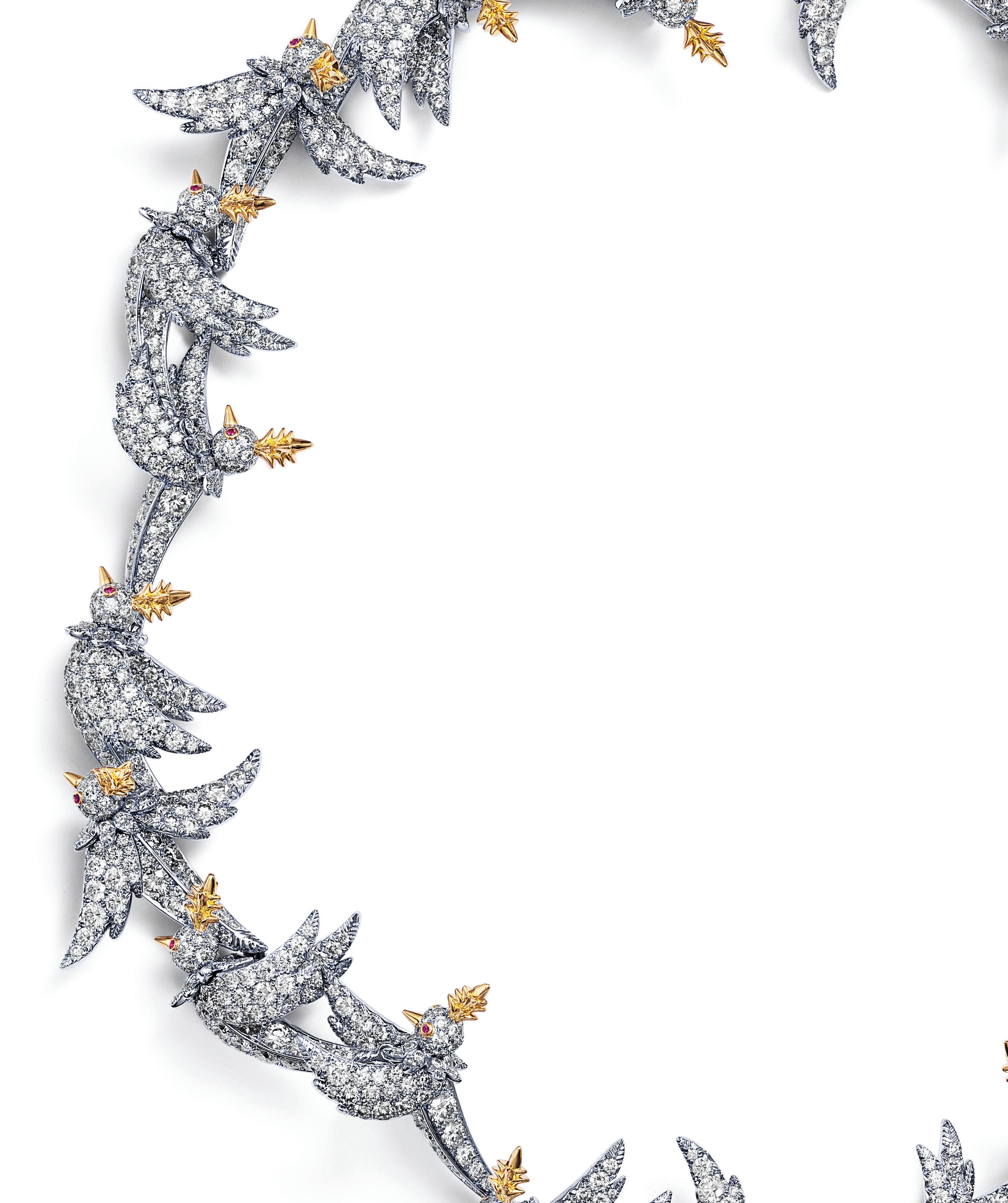

Officer, Jewelry and High Jewelry, Nathalie Verdeille says. “The bird contemplates the surrounding landscape from the vantage of its perch. Bird on a Rock evokes a feeling of freedom so genuine; now we witness it spread its wings and soar limitlessly above and beyond.”
This year, Tiffany & Co. created its first-ever Bird on a Rock collection with never-before-seen creations that reimagine Schlumberger’s iconic brooch. There will be four suites, featuring a necklace, bracelet, earrings, rings, brooches and pendants, which will roll out in phases throughout the year. Each suite centers around a gemstone species, like the white diamond suite with a cushion-cut 5-carat diamond ring. “This is our first-ever comprehensive Bird on a Rock collection,” Tiffany & Co. Chief Gemologist Victoria Reynolds says. “We’ve reoriented the bird, which interacts with and flies around gemstones, pearls, diamonds. It’s lovely; there’s so much life and energy, volume and dimensionality. These creations are at once deeply imaginative and incredibly
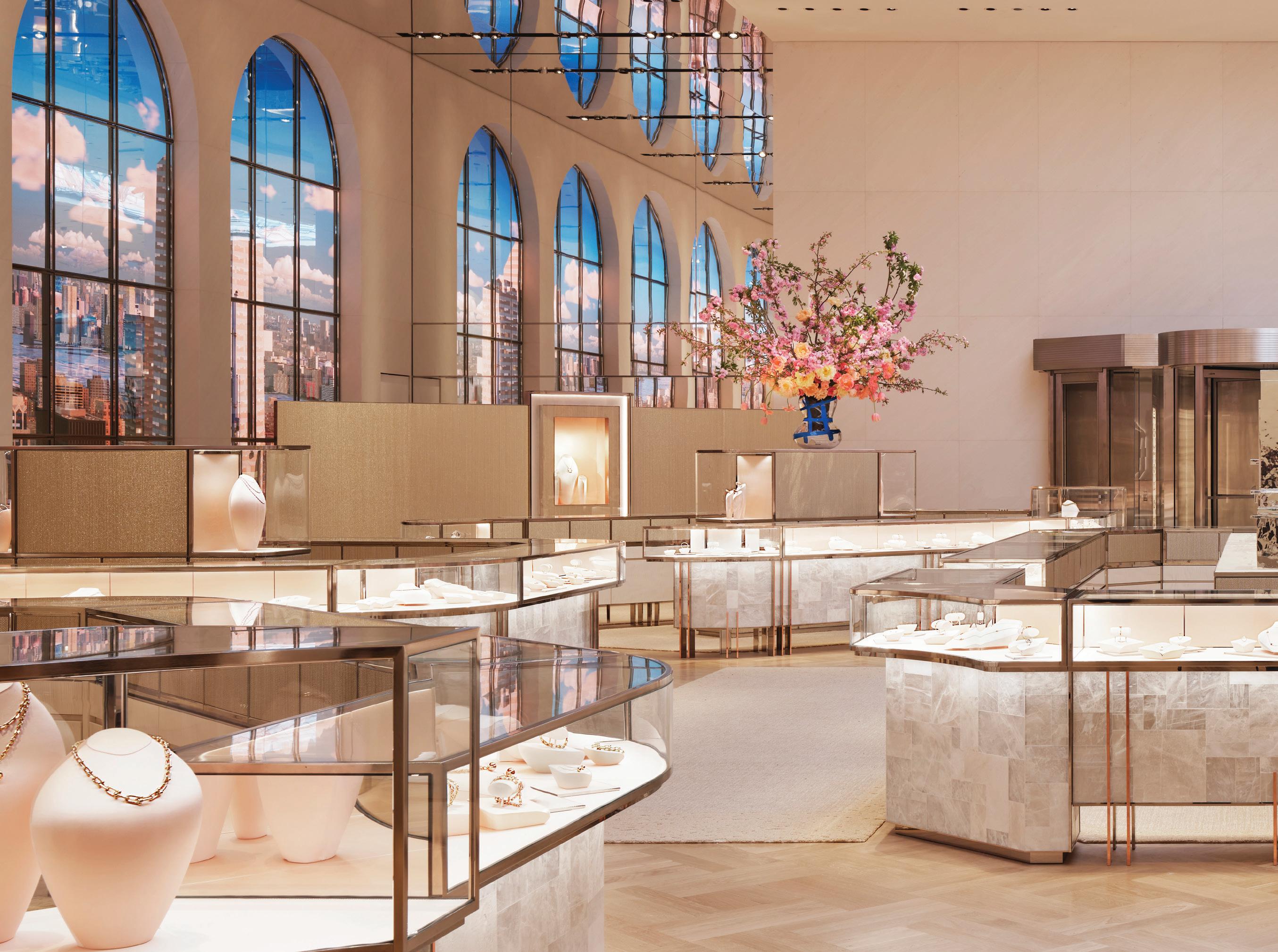
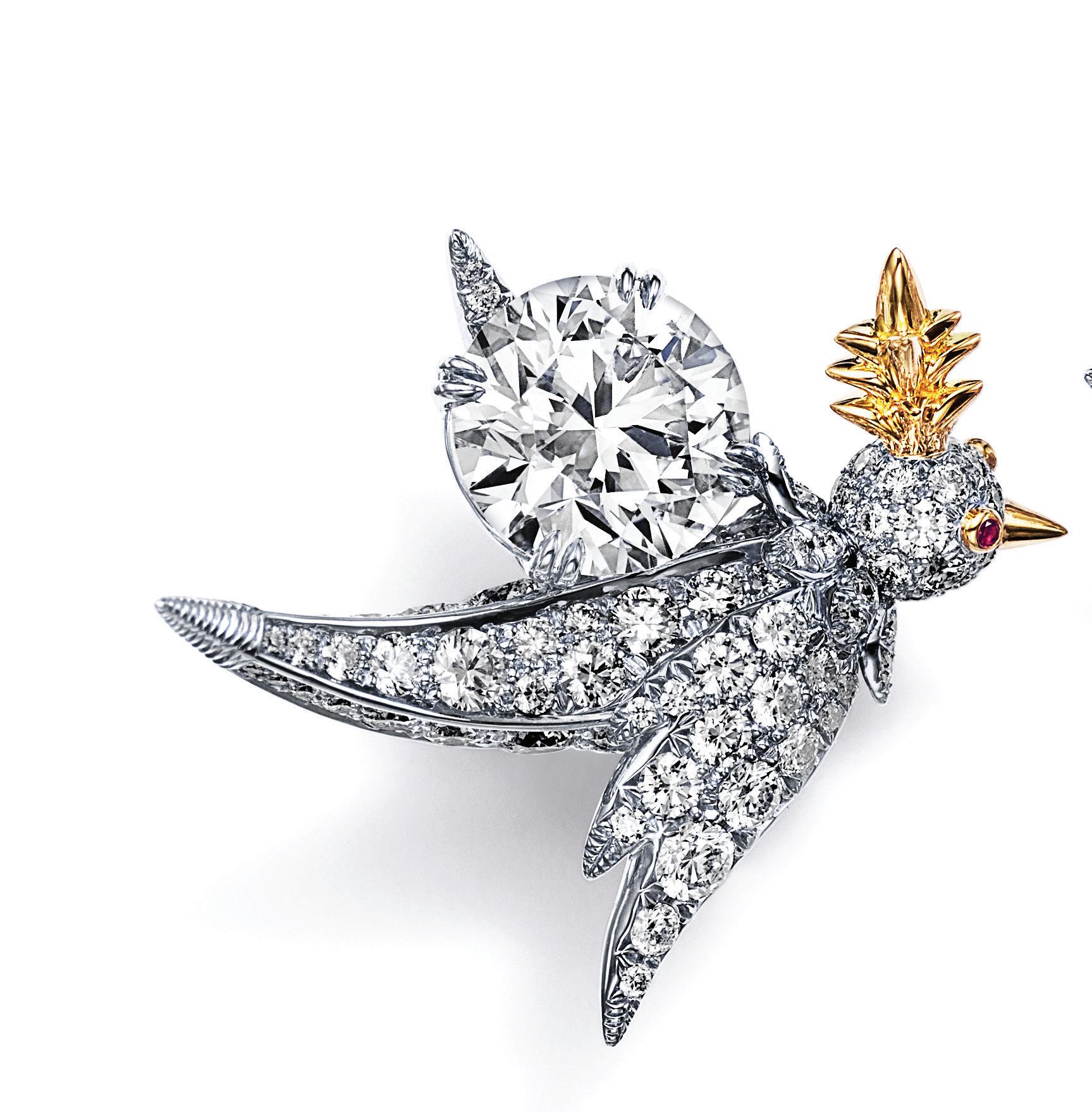
sophisticated. I am certain that Schlumberger would have given a nod of approval.”
In addition to the suites, there will also be Bird on a Rock pendants featuring legacy gemstones, including a 31-carat tanzanite, a 26-carat kunzite and a 23-carat morganite, and, for the first time, the pendant will feature a bird from the frontal stance.
Even after over 50 years, Schlumberger's designs still transcend trends. “The Bird on a Rock brooch is an indelible Tiffany & Co. creation. It's timeless but unfailingly modern,” Reynolds explains. “The whimsical design has outlasted the ebb and flow of jewelry trends. With the new Bird on a Rock collection, we took great care in preserving what makes the brooch so special while honoring Schlumberger’s vision."

More artistic inspiration awaits at The Landmark, which is now home to nearly 40 artworks across all 10 floors from notable artists Jean-Michel Basquiat, Damien Hirst, Julian Schnabel, Jeff Koons and Jenny Holzer, among others. When

creating the space, Marino says, “My main consideration was how to lighten and brighten an American icon without hurting its classic style.” He adds he achieved that goal by displaying works from artists around the world “with a special emphasis on American artists and unique commissions.”
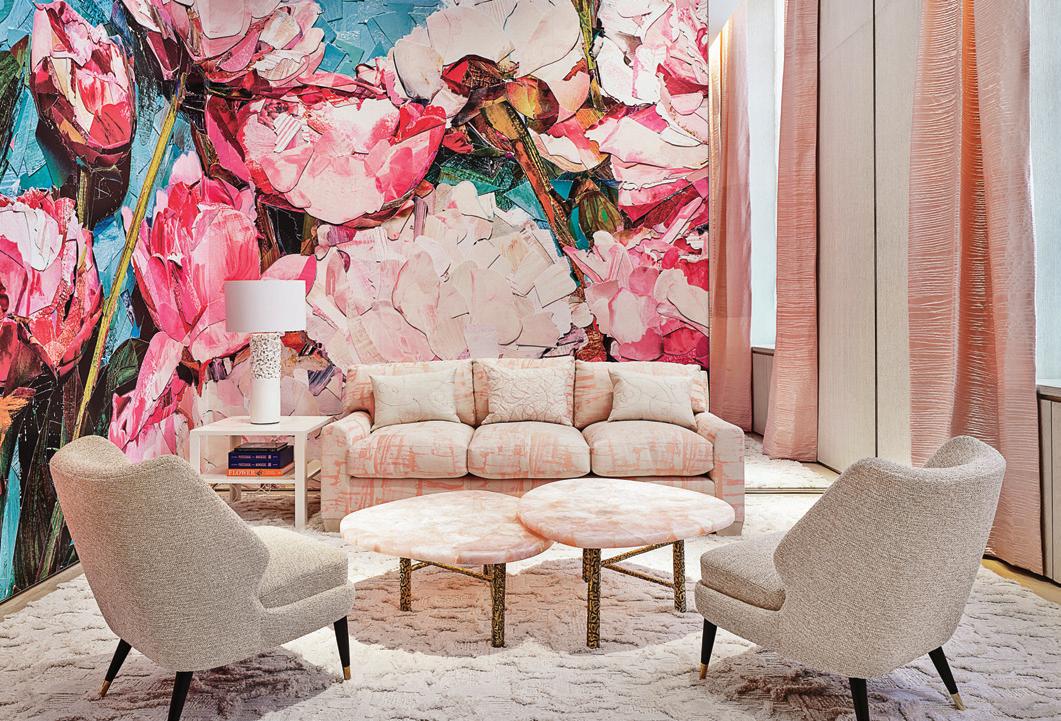
“The reopening of the iconic Fifth Avenue Landmark is a major milestone for our House,” Tiffany & Co.'s Chief Executive Officer Anthony Ledru says. “Symbolic of a new era for Tiffany & Co., The Landmark is much more than a jewelry store—it is a cultural hub with an exquisite showcase of architecture and superior hospitality, as well as cutting-edge art and design. It sets a new bar for luxury retail on a global scale."
Tiffany & Co. is focused on pushing forward, finding new ways to delight fans while also honoring classic designs beloved through time. On a visit, channel Holly Golightly and dreamily drift away while taking in the store’s history—and all those diamonds.
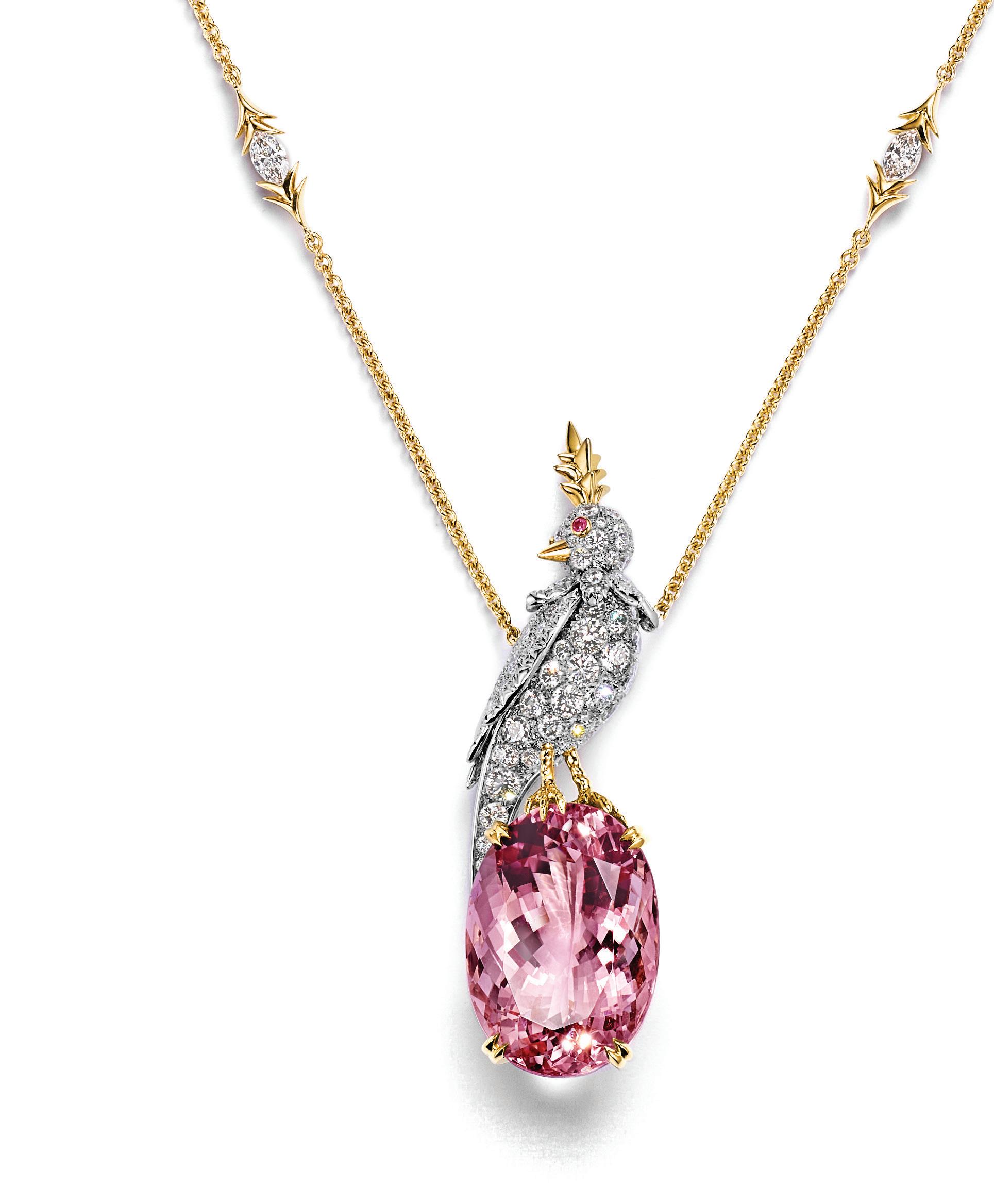


“This is our first-ever comprehensive Bird on a Rock collection. We’ve reoriented the bird, which interacts with and flies around gemstones, pearls, diamonds. It’s lovely; there’s so much life and energy, volume and dimensionality. I am certain that Jean Schlumberger would have given a nod of approval.”


— VICTORIA REYNOLDS, TIFFANY & CO. CHIEF GEMOLOGIST
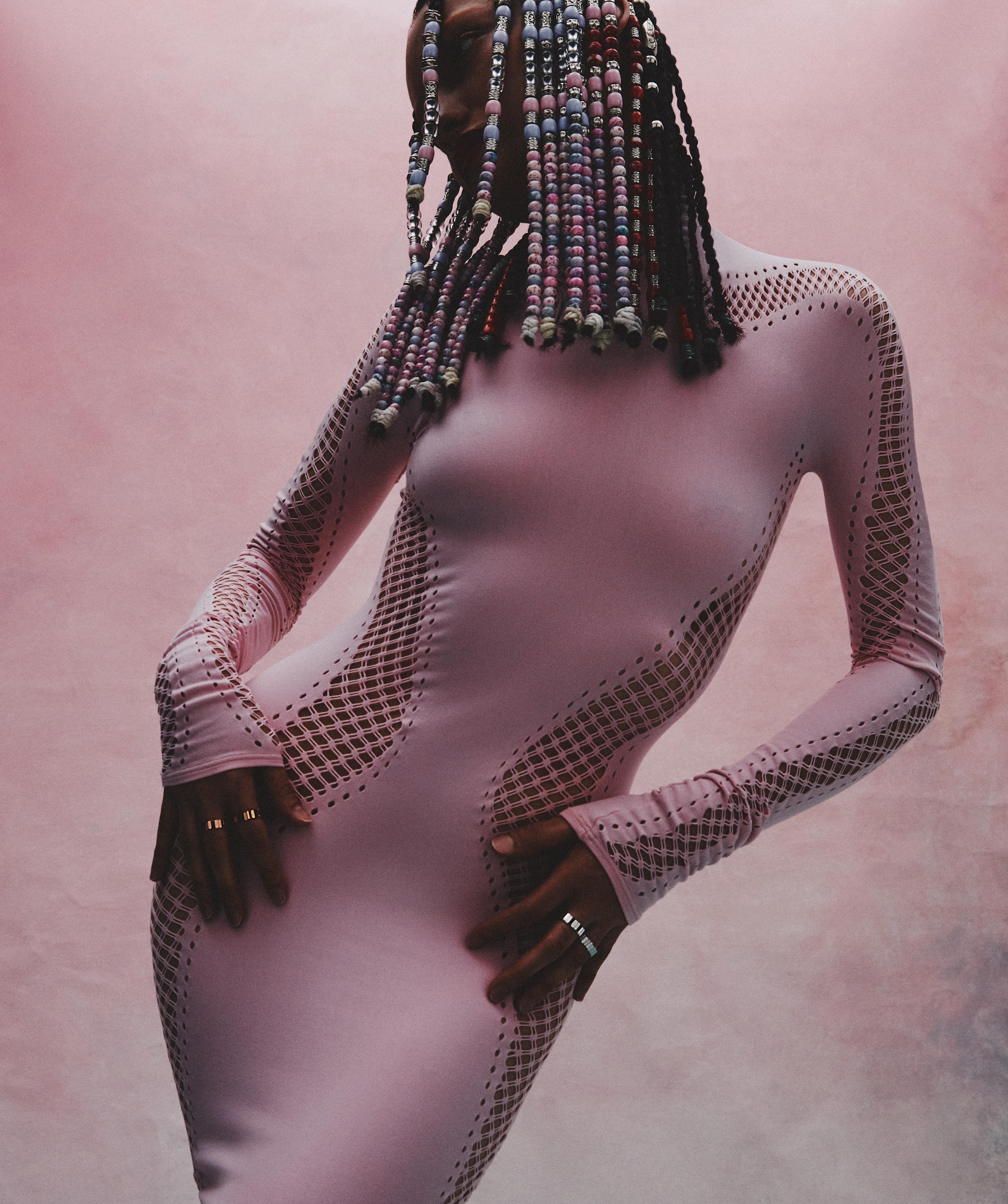 Photographs by VLADIMIR MARTI
Photographs by VLADIMIR MARTI
Whether you prefer to get decked out in diamonds or go bold in gold, let your personality shine through in every accessory you choose
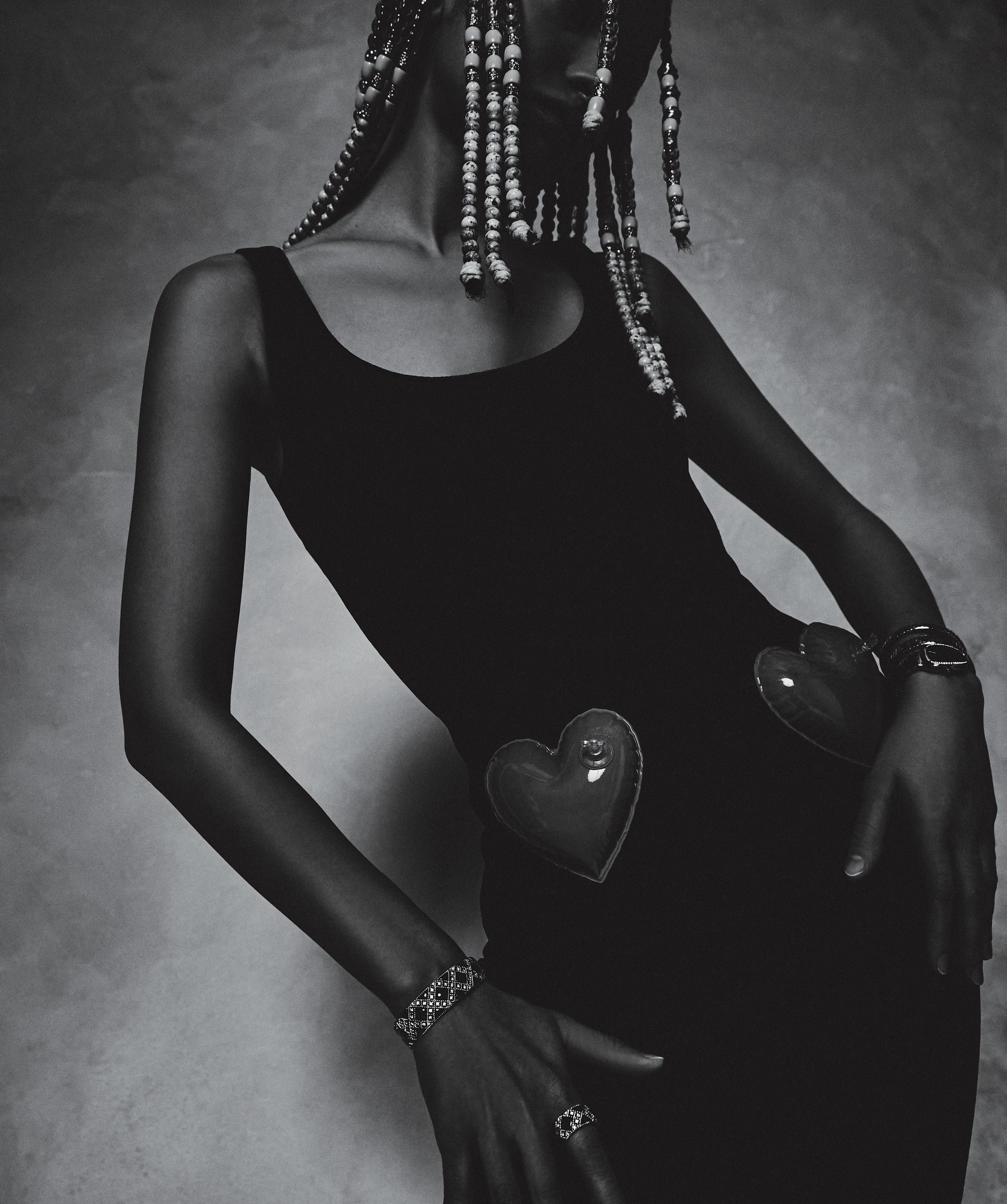 Moschino dress, moschino.com; On right hand: Roberto Coin ring, bangle, robertocoin; On left hand: Bulgari Serpenti Tubogas Double Spiral Watch, bulgari.com.
Moschino dress, moschino.com; On right hand: Roberto Coin ring, bangle, robertocoin; On left hand: Bulgari Serpenti Tubogas Double Spiral Watch, bulgari.com.
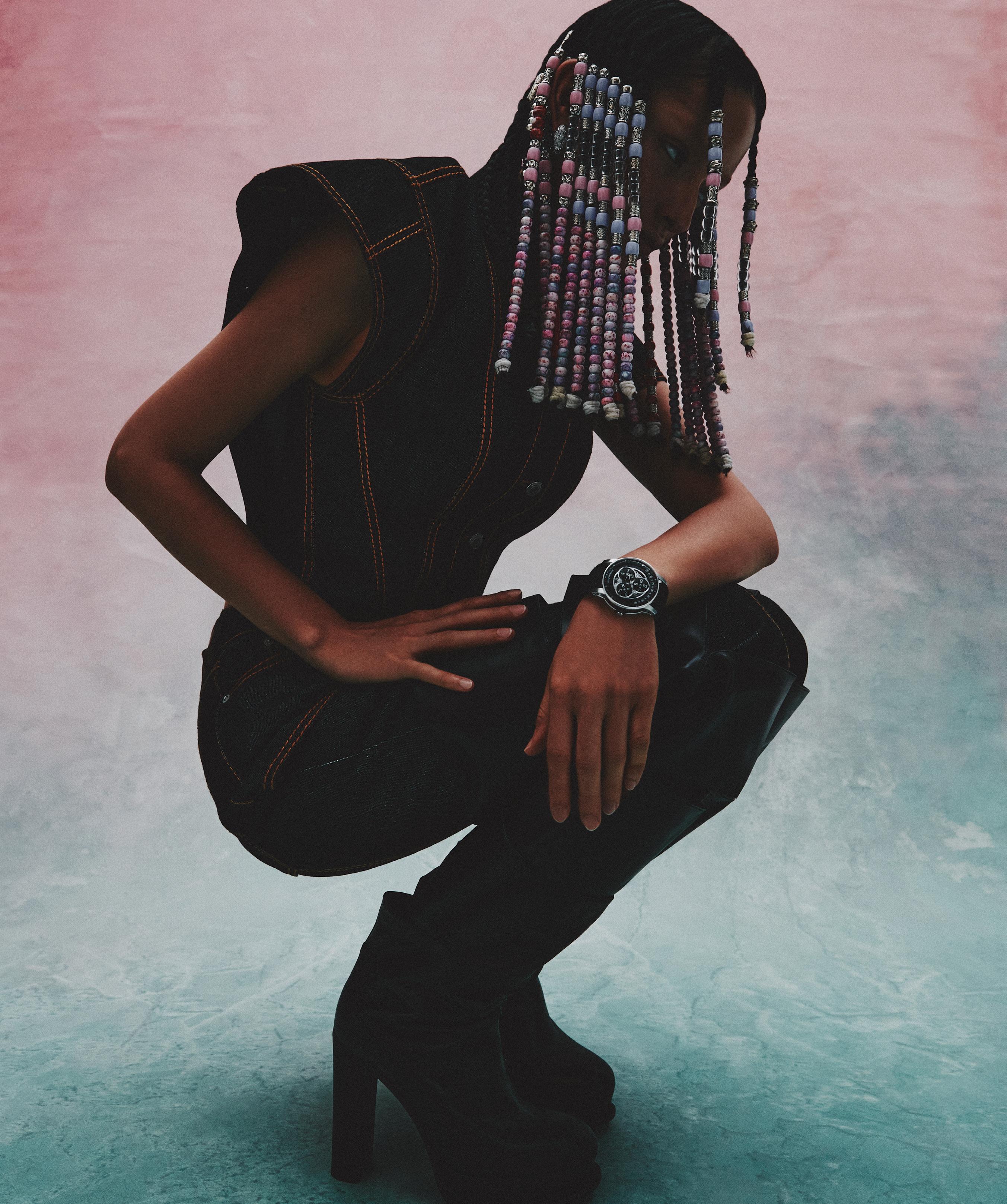 Alexander McQueen jacket, jeans, boots, alexandermcqueen.com; Audemars Piguet watch, audemarspiguet.com.
Alexander McQueen jacket, jeans, boots, alexandermcqueen.com; Audemars Piguet watch, audemarspiguet.com.
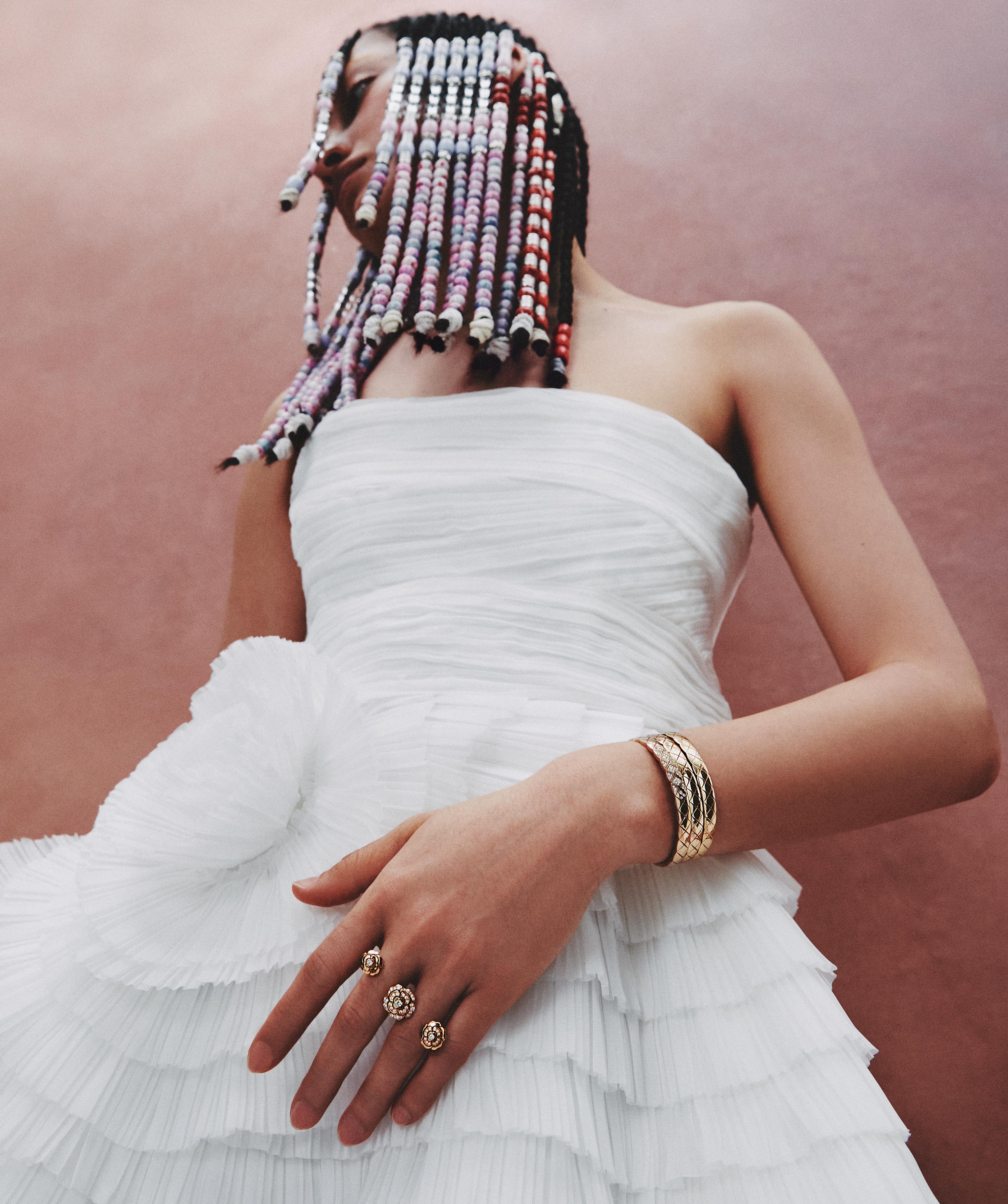

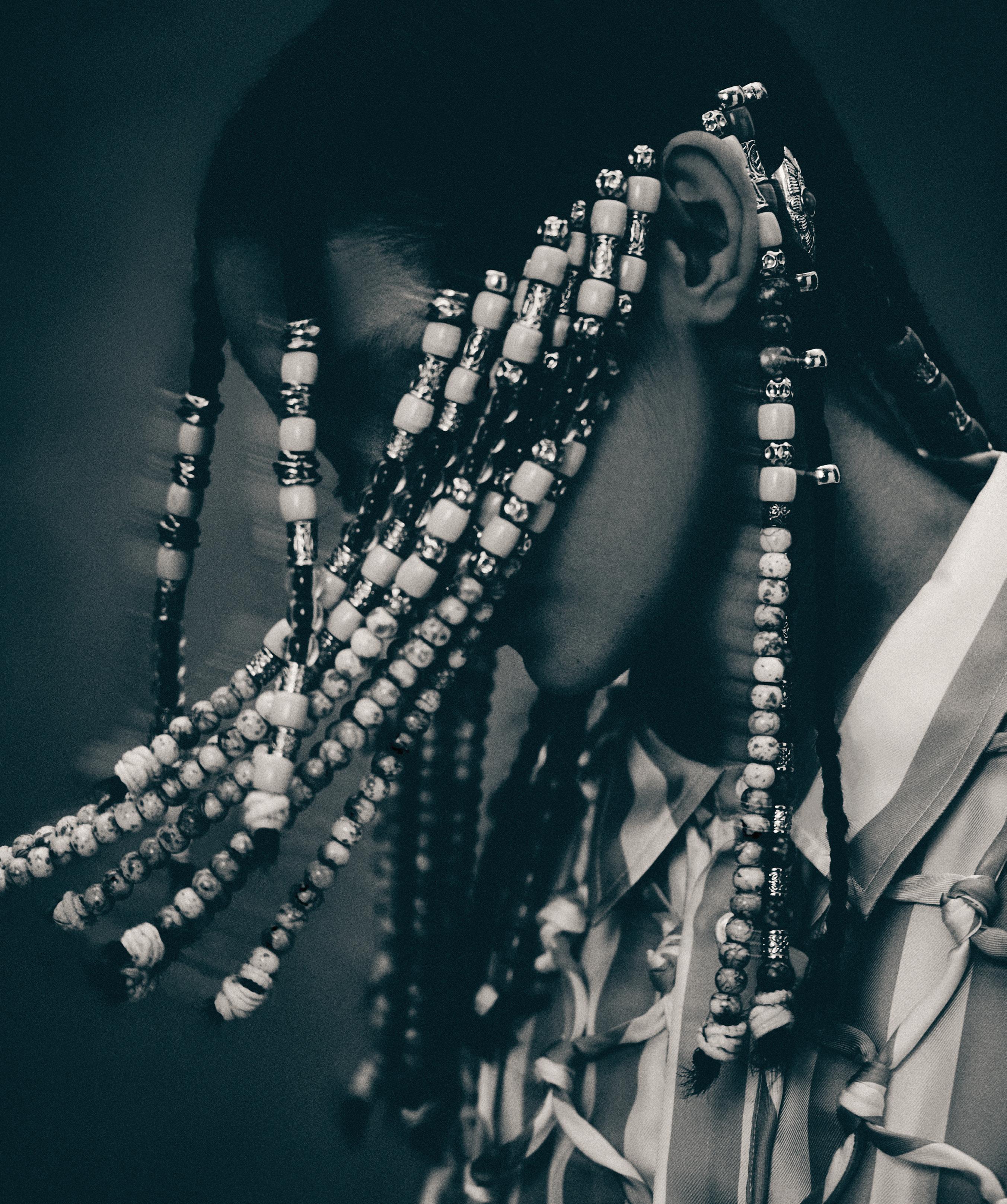 Fashion Stylist LAURA JANE BROWN
Hair & Makeup MANUEL LOSADA
Monse dress, monse.com.
Fashion Stylist LAURA JANE BROWN
Hair & Makeup MANUEL LOSADA
Monse dress, monse.com.
Elevate classic seasonal staples with fluorescent sandals, oversized eyewear and swimwear that packs a punch
 Photographs by VANESSA GRANDA
Photographs by VANESSA GRANDA
 Fendi dress, sandals, fendi.com.
Fendi dress, sandals, fendi.com.

 Dior bralette, briefs, hat, dior.com; Tekla towel, teklafabrics.com.
Dior bralette, briefs, hat, dior.com; Tekla towel, teklafabrics.com.
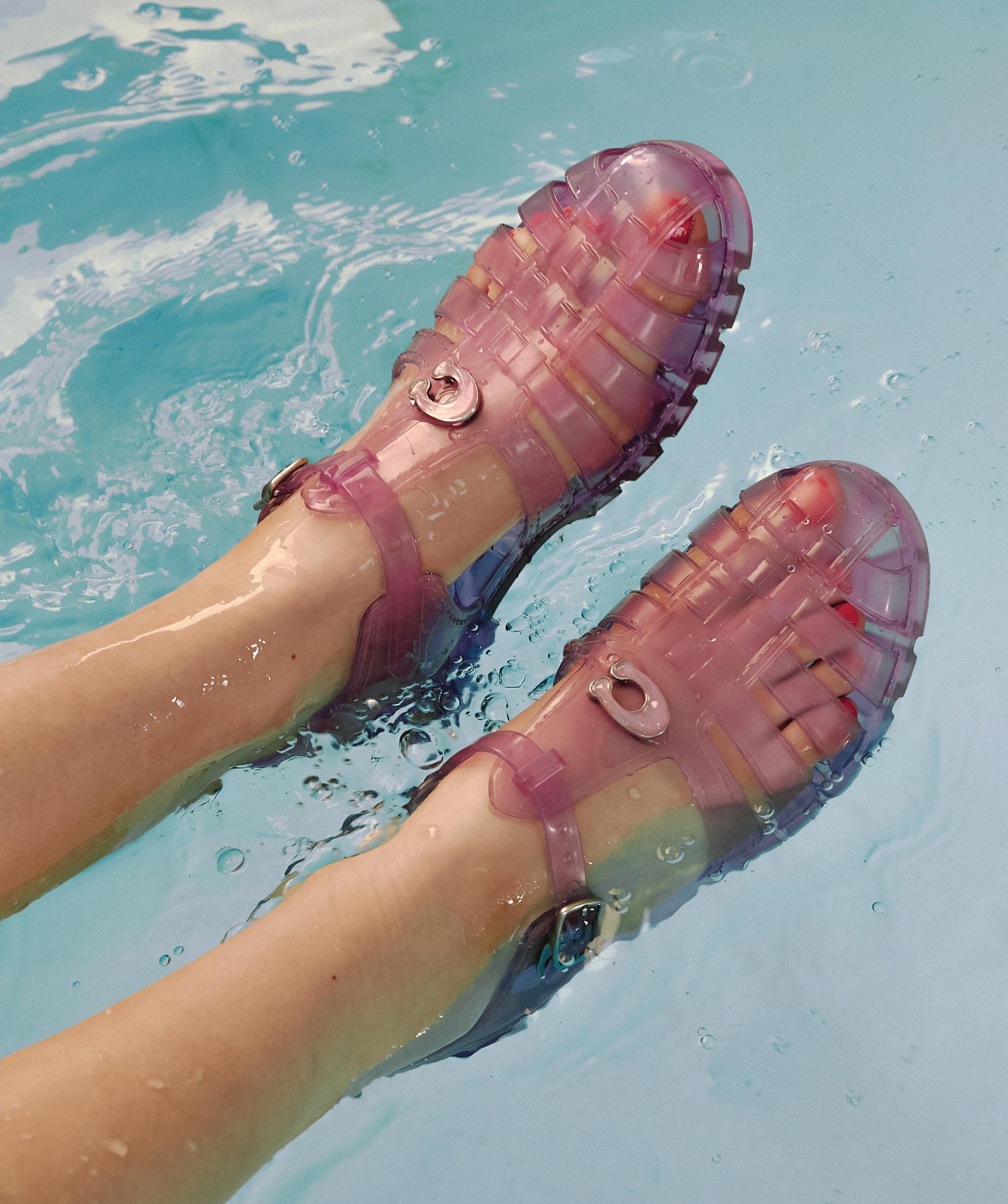
Max Mara, cap, sunglasses, us.maxmara.com.

Nearly 30 years after his death Jean-Michel Basquiat broke all records to become the most successful American visual artist in history. But during his lifetime he also broke racial barriers, stereotypes and inspired a generation of young Black artists. His experience was rich and volatile, he was a dreamer that lived fast and free and this month, the Louis Vuitton Fondation presents a rarely seen retrospective of his infamous collaboration with friend and mentor Andy Warhol. This, in addition to a growing global presence, makes his brand, and life, an unending subject of fascination. But who was Jean-Michel Basquiat?
Was he the curious celebrity who befriended A-listers, fronted magazines and made a fortune? Or was he the genius neo-expressionist who strived to change the culture of art? Perhaps he was both.
Jean-Michel Basquiat knew he would be famous. By all accounts the artist, whose oeuvre of maniacal postmodern paintings now fetch in the financial ballpark of a Picasso, Cézanne or Gauguin, had an omnipresence destined for greatness. By the time he died in 1988 at the age of 27, he had short-circuited the American art scene not only shifting the expectations of visual arts at the time but highlighting the racial injustices of a biased society. Quite instantly, he reached a profound popularity, selling his works by the dozen, to collectors and celebrities for thousands, often before the paint had even dried. He was an enigma. Categorically appealing to all those who came into his orbit, he became a bona fide celebrity of the 1980s street and club scene. A time when artists were as newsworthy as rock stars or movie stars, Basquiat, with his compelling, considered speech-style, his cool, freeform Congo dreadlocks and his unique, frantic, dramaturgical work ethic, was a thing of fascination. By 1987 he had covered Time magazine (dressed in Armani, under the headline “New Art, New Money”), walked the runway for Commes des Garçon, partied at institutions like the Mudd Club, created an experimental noise band called Gray and mixed in crowds that included Madonna, Bianca Jagger, Keith Haring and Andy Warhol. For those that knew him, like his close friend, contemporary and band mate Michael Holman, his allure was rapturous.

“You have to understand, and this would have been evident to anyone at the time, Jean-Michel was miles ahead of everybody—intellectually, creatively, aesthetically, spiritually,” says Holman. “He was just an ancient man in a young man's body. He was like a selfrealized being, like some kind of Dalai Lama of art.”
Holman, himself, was an original part of the burgeoning New York downtown scene. Bringing hip-hop artists, graffiti artists and performers together, he helped orchestrate an era and locale known for its renegade collaborative nature. It was at Holman’s (along with visual artist Stan Peskett and hip-hop pioneer Fred “Fab 5 Freddy” Brathwaite) infamous Canal Zone party in 1979, that he first met a teenage Basquiat. The artist had recently been revealed to be one half of Brooklyn’s mysterious SAMO graffiti tag. An acronym he and friend Al Diaz fused from the phrase “same old s**t,” the duo sprawled intriguing, facetious writings like “SAMO for the so-called Avant Garde” and “Stop the train of thought SAMO” across subways and buildings in New York. Holman was interviewing the newcomer on the night and recalls becoming flustered in his presence.
“I think it was actually a passive aggressive thing,” says Holman. “I was part of throwing the party which was all about showing art, but I didn't have any art in it. So, I kind of felt jealous. That’s why I was being somewhat passive aggressive [towards Basquiat]. Then later on, when I went up to apologize, he said, “That's okay. You wanna start a band?” I was like, yeah, sure!
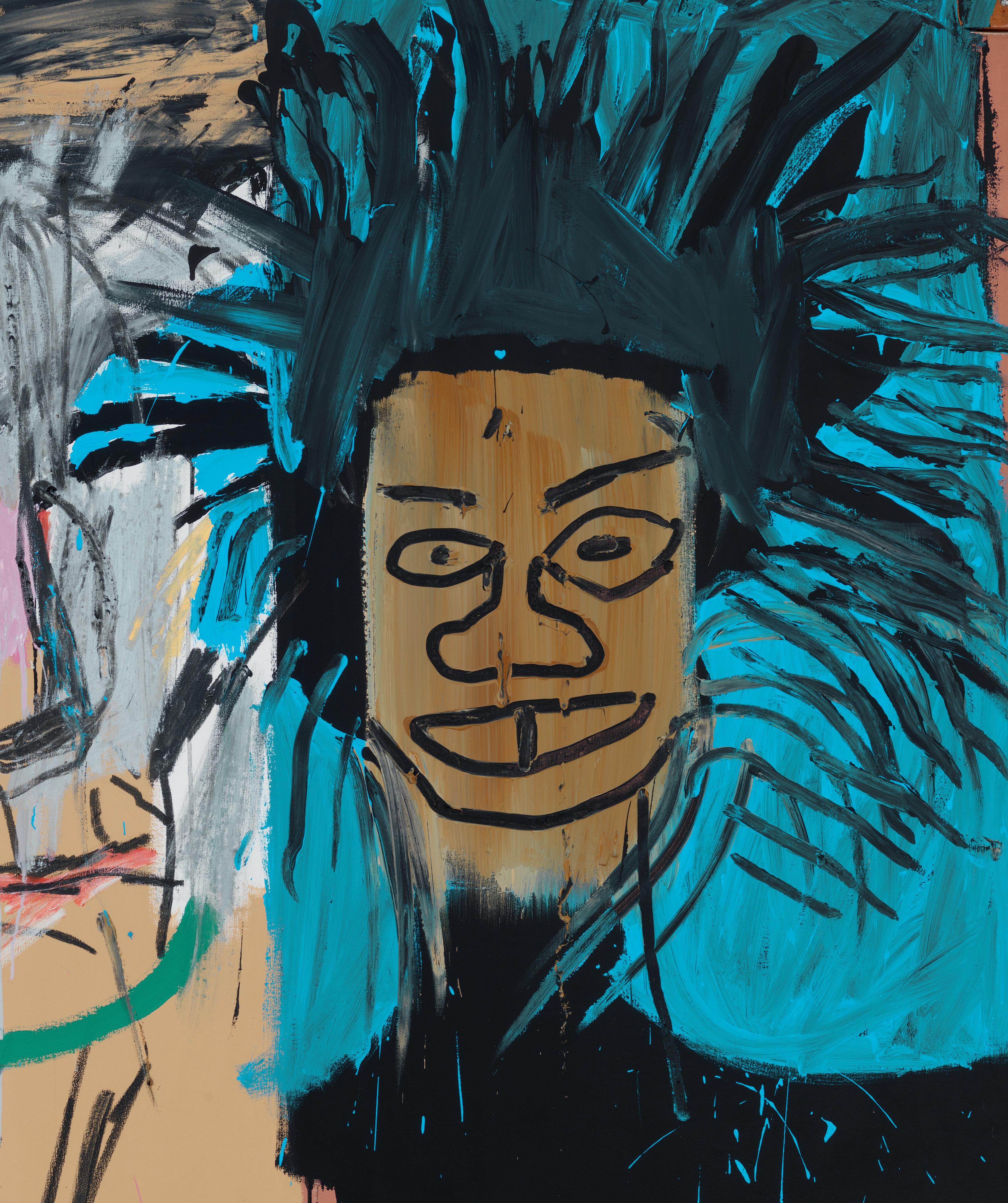 Dos Cabezas, 1982, Acrylic and Oilstick on Canvas with Wood Supports, JEAN-MICHEL BASQUIAT
Dos Cabezas, 1982, Acrylic and Oilstick on Canvas with Wood Supports, JEAN-MICHEL BASQUIAT
We started Gray that night.”
This kind of impulsive energy proceeded the artist and it spilled into his work. His was a frenetic method. Painting at all hours, his explosive, mural-like pieces bore the absurdity and gruesomeness of the Cubists with the anarchistic rebellion of New York urban scrawling. Artistically inspired by the two-dimensional anthropologies of Picasso and Matisse as well as the potent abstracts of Willem de Kooning and Jackson Pollock, his works were an exploration of personal and systematic tribulation. Graphic figures, often with the ominous or condescending halo of a king’s crown were portrayed via emotionally charged layers of paint, scratchy, thick brush strokes and vigorous, unsettling lines. He’d been fascinated by Henry Gray’s 19th Century medical tome Gray’s Anatomy (also inspiring his band’s name) since his mother gave him a copy to read while he recovered in the hospital after being hit by a car when he was 8 years old. Its anatomical diagrams came to find a core intellectual and emotional theme throughout almost all of his works.
“He recognized at a young age, when he went to a museum and looked at all the works and saw names like Warhol and Picasso, the power and the fame and the importance that came with it,” says Holman. “He did the math and knew that he had this in himself. It was just a matter of timing for him—to put it together, to find his voice, his style and what he could master that was clever, unique and impactful. I think he knew what was happening and what would happen with his name today.”
Systematically, too, Basquiat found purpose in generating topics of segregation, racism, poverty and historical abstraction in his works. He adorned Black male figures with his signature three-pointed crown motif and sketched in cryptic word-plays like “origin of cotton” (in reference to the slave trade) and “Hollywood Africans 1940” (the year Hattie McDonald became the first African American to win an Academy Award for Gone with the Wind). He also intentionally painted rough strikes through the many of these phrases in a conscious effort to draw attention to them. He spoke about viewers being more likely and compelled to read something if it seems to be crossed out.
Basquiat is honored by almost all that met and
worked with him during his lifetime as well as those who follow his posthumous legacy. In a piece for Interview magazine in 2014, Madonna spoke about her romantic relationship with Basquiat in the early 1980s. As a close friend of the artist conglomerate—a group inclusive of Pop Art greats Keith Haring and Andy Warhol—the singer reflected on his work style.
“I remember getting up in the middle of the night and he wouldn’t be in bed lying next to me; he’d be standing, painting, at 4 in the morning, *this* close to the canvas, in a trance,” Madonna said. She also told Howard Stern, around the same time, that he “would not stop doing heroin” and that “when I broke up with him he made me give [the paintings he gave me] back to him. And then he painted over them black.”
Since his death, his name has developed a kind of otherworldly reputation, as though he prophetically planned out his career and life, predicating it into the venerable, poignant period it’s now referenced as. His fame was a supernova, but it’s a celestial opinion many art critics, even galleries at the time, refused to acknowledge. Late art historian, and controversial critic Robert Hughes famously wrote an essay in 1988 for The New Republic about Basquiat’s quick, inflammatory success. Entitled “Requiem for a Featherweight” he flouted Basquiat’s celebrity appeal and relegated his popularity to the obsessive, exploitative nature of American pop culture. At the same time, similar opinions were held by establishments like the Museum of Modern Art in New York when they refused to purchase his works, dismissing them as insignificant and pieces of graffiti. As a result, even now, all Basquiat works on display at the MoMA are loaned, rather than owned.
Jean-Michel Basquiat came from a middle-class background, the son of a Haitian father and Puerto Rican mother, he was born and raised in Brooklyn, New York. He developed an early love for art and culture thanks to his mother taking him regularly to the city’s museums. It’s suggested that he was a particularly gifted child, learning to read and write earlier than most, although he found it difficult to concentrate on regular schooling. By the age of 10, Basquiat’s parents separated and not long after his mother was committed to a psychiatric institution, something that had a considerable, long-lasting effect
on him. He and his two sisters were then raised by their father but at the age of 15, Basquiat ran away from home. He spent time couch-surfing, sleeping on benches in Washington Square Park, partying and experimenting with drugs. In the years following, when his art began to draw attention, it's reported that many of his supporters were surprised to find Basquiat had not, in fact, come from poverty, and were shocked even further to see his father arrive at events driving a Mercedes.
Basquiat lived by rapid means, moving from place to place as a young artist. Two of his girlfriends, Alexis Adler and painter Suzanne Mallouk have often spoken about living with him. About his working methods, his passion for creating and his excessive life. They recalled his intense love for jazz music, for women and, of course, drugs. When Basquiat found financial success, his apartment was said to be littered with opened bottles of expensive wine and plates of uneaten gourmet food. It was a revolving door for young rappers, artists and street kids, (whom he supported with financial donations) and a hang for everyone who was anyone. As success grew, it’s suggested he chased away buyers he didn’t like, especially those deliberating over the aesthetics of his work and, despite accessing fame, he resented the spotlight, the constant attention and the camera crews that came with it. From here Basquiat struggled with addiction and began to deteriorate from dependency. At the time of his heroin overdose on August 12, 1988, he was living in Warhol’s loft on Great Jones Street, Manhattan. Warhol had died the year before at the age of 58. Today, there are still murals dedicated to them on the front wall—one reads “Kings Live 4Ever.”
Before their untimely deaths, however, Warhol and Basquiat worked on what was to become one of the most iconic art collaborations in history. A tennis match of creativity the artists sent works back and forth, imposing their identifiable styles onto the same large canvases. Pieces that fused the cartoony, commercial nature of Warhol with Basquiat’s irreverent deconstruction, the collection was divisive and deliberate. Upon unveiling in 1985 however, the works, which included side-by-side self-portraits and monolithic corporate logos layered with Basquiat’s line drawings, became one of the most controversial

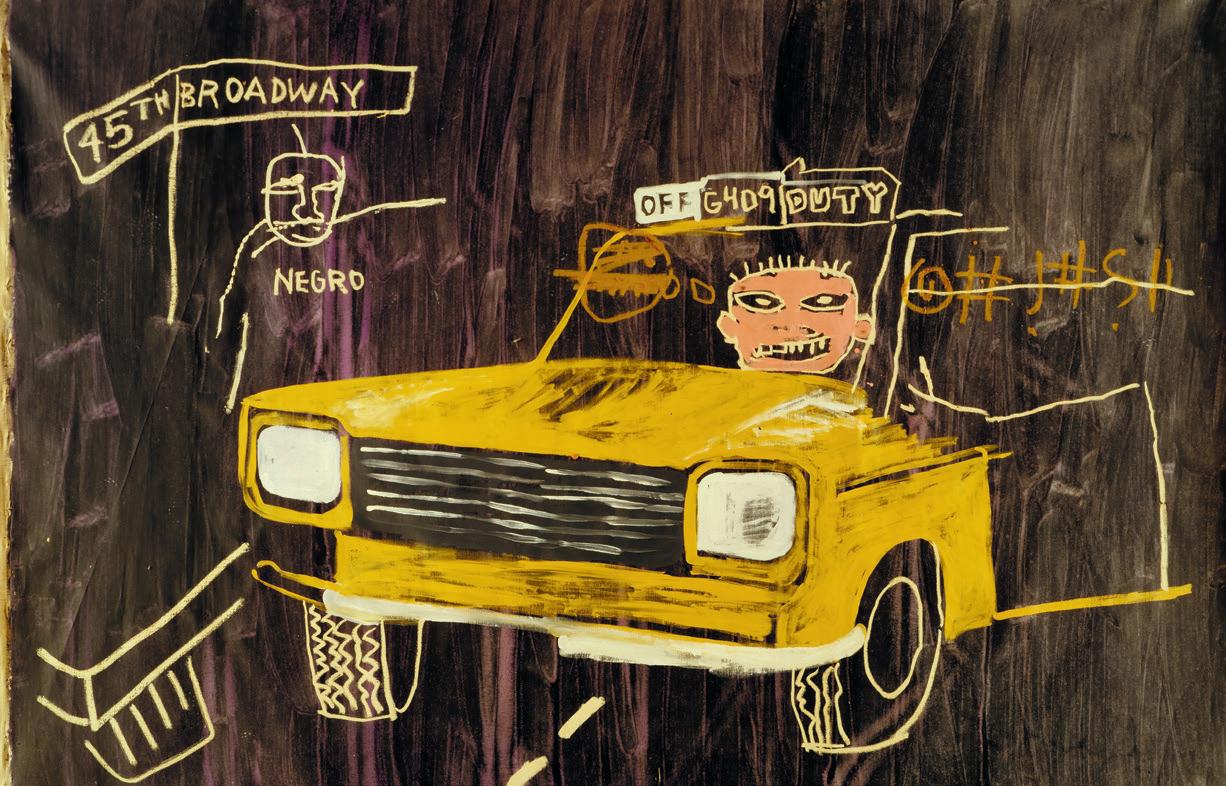
cultural topics of the time. Keith Haring described it to be a “conversation occurring through painting, instead of words,” with Basquiat explaining “Andy would start one [painting] and put something very recognizable on it, or a product logo, and I would sort of deface it.” It sent reviewers into a frenzy and the public even more so. Now, some 37 years later, the Louis Vuitton Fondation in Paris has become the host of a retrospective. Titled Basquiat X Warhol. Painting Four Hands, it features over 160 rarely seen artworks by the pair and will run until August of this year. Curator of the exhibition, Olivier Michelon, mused the ongoing obsession with the Basquiat and Warhol dichotomy.
“This story is fascinating because it shows two people, known for their signatures, willing to do things together, even to the point of blurring the lines,” he says. “Warhol said that their most successful works were those where you didn't know who did what. I think it's not so much in terms of style or imprint but in the production of a final painting. Warhol places a background that allows Basquiat to make a figure exist in an amplified way. Basquiat crossed a Warhol by revealing what was under the surface. Seeing this painting is like participating in a conversation where the words compose sentences continuously, but then are remixed by the artist and your own eyes.”
The exhibition opened in April with an exclusive performance by Jay-Z. The rapper, who has only appeared publicly a handful of times in the last few years, was an auspicious guest to have honor the event. He’s a known Basquiat enthusiast, often referencing the artist in his music (“It ain’t hard to tell, I’m the new Jean-Michel”), fielding regular physical comparisons (especially the style and shape of his hair) and in 2013 was revealed to be the anonymous buyer of Basquiat’s acrylic and oil-stick skyline silhouette Mecca—that he snapped up for a cool $4.5 million. In 2021, Jay-Z again set the Basquiat underworld alight when he and wife Beyoncé posed in front of rarely seen piece Equals Pi. It was part of a commercial for jewelry company Tiffany & Co., with the artwork believed to be owned by the corporation. The piece features a distinctive aqua background, one easily comparable to Tiffany’s own robin’s egg shade of blue. Some Basquiat diehards declared the image a misuse of his work, while
others applauded the unique and expansive platform. In the years since his death, the Basquiat-ification of future generations has been impressive. He has become a kind of cultural deity, recalled and revered for his artistic genius, but even more so for what he personally represented. In December 2017, his masterpiece Untitled was purchased by Japanese collector and retail magnate Yusaku Maezawa for $110 million. This record sale made Basquiat the highest selling American artist of all time. For comparison Edvard Munch’s The Scream sold for $119 million in 2012 and Pablo Picasso’s Le Rêve sold for $155 million in 2013. This month, two more Basquiat originals will go under the hammer. The unusually monochromatic piece Now’s the Time, an ode to jazz and legendary saxophonist Charlie Parker, is expected to reach around $30 million, while his 12-foot wide El Gran Espectaculo (The Nile), owned by designer and avid art collector Valentino Garavani since 2018, is likely to go for $45 million.
But despite the exceptional value of his original pieces, his street ubiquity continues to grow. It’s a disconnect that doesn’t seem to affect the credibility of his name, nor his wider interest. Today you can find Basquiat-printed clothing and merchandise everywhere. Reeboks and Doc Martens are stitched with his signature crown motif, DC and Converse trainers in painterly Basquiat prints, high-fashion collaborations with labels like Junya Wantanabe and Etudes as well as niche skateboard brands with his artworks across their decks. If Basquiat the artist was big business, then Basquiat the brand is even bigger. But does celebration on masse preserve and promote his notoriety or begin to dissolve it?
"I'm torn. I'm torn,” says Holman. “I don't know if it’s putting his integrity at risk, or if it's making him bigger and more and more important. It certainly doesn't seem to have hurt his market. I guess it’s the world we are in today—two realities that stand very much a part—the licensing and the over-exposure, [versus] the art market for his work. Obviously the value of his original art remains because the amount he created is finite.”
In a radio interview with Holman back in 2007, the film producer and musician who still resides in New York City and performs with Gray (they have
a new album due out this year) lamented the lack of Black artists in the fine art world. He talked about Basquiat being a unicorn and a pioneer, and how he broke through a predominately white world. In turn, he said he believed that over the next couple of decades, this breakthrough would lead to a pattern of change. That people of color would have greater representation in the visual arts. So, now that the future is here, was he right?
“Every important gallery has Black artists now. Male, female, gay, straight, it doesn't matter. Every important gallery has Black artists from America, from Africa, from Sub-Saharan Africa and from all over the world. Everything has changed,” he concludes. “And I really believe it's almost singularly because of Jean-Michel Basquiat. I mean, how many people, like gallery owners or financiers or high executives or whatever might have said, well, s**t, if Basquiat did what he did, why shouldn’t I give this next guy or girl a chance? Because do I want to be the person who denies the next Basquiat?”
When the titillating topics of value, money and celebrity enter the realm of an artist’s mythology, it can quite quickly eclipse their reality. That is, that a real person existed, one who strived to create art, make a difference and express emotion. A real person that experimented with creativity, who made mistakes, took risks and cut open a path for so many others to follow. But perhaps this is the kind of person that was never meant to be real, not long term. A person destined to fade in order to make way for iconography. As Basquiat himself once prophetically declared “I’m not a real person, I’m a legend.”
“He was a genius and everyone knew it,” says Holman. “There was just something about him. And listen, I met a lot of famous people, everyone from Mick Jagger to Martin Scorsese to Gloria Steinem [but] I’ve never met anyone like Basquiat. And I feel a little bit emotional telling you this right now. I’ve never met anyone as brilliant as he was. I’ve never met anyone who made me feel like I was in the presence of a self-realized being. He had that aura.”
For more information on the Louis Vuitton Fondation’s Basquiat X Warhol. Painting Four Hands exhibition visit fondationlouisvuitton.fr. With special thanks to Michael Holman and Olivier Michelon.
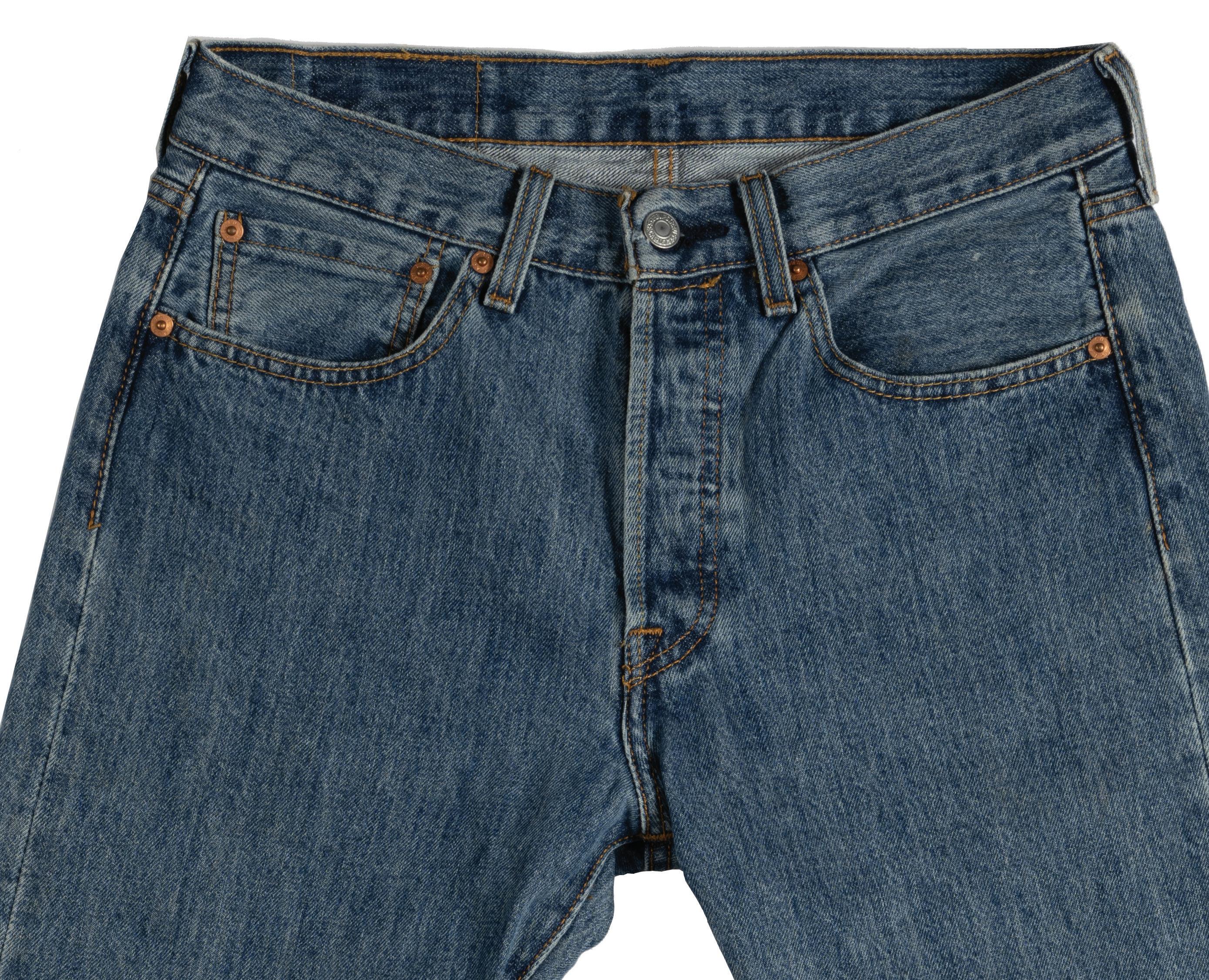
 Words by COLLEEN KRATOFIL
Words by COLLEEN KRATOFIL
Wardrobes change with the times, and trends come and go, but no clothing item has consistently been so relevant and such a necessity—not to mention prominent and revolutionary—as the Levi’s 501 blue jean. Travel anywhere around the world and you can find the classic denim pant worn by people from every walk of life. This year, the style that’s transcended decades is celebrating its 150th anniversary. And to fully understand how a pant made for workmen became a staple of counterculture movements, a sign of freedom during the Cold War and a fashion statement worn on the world’s biggest stages, GRAZIA USA is going back to where it all started.
Surprisingly, it was Jacob Davis, a tailor, who created the 501 jean and not the brand’s iconic namesake, Levi Strauss. As the story goes, a customer asked Davis to make a more durable work pant for her husband, so the craftsman started adding copper
rivets to waist overalls so the seams wouldn’t split as easily. His idea was a hit, and to keep up with demand, he approached Strauss, a dry goods supplier. The company applied the rivet addition to denim and duck canvas pants, and together, they patented the idea in 1873. “I'm sure neither of them would have imagined the history that it now has,” Levi Strauss & Co. historian Tracey Panek tells GRAZIA USA
By 1890, Davis and Strauss started to refer to the pant by its lot number, 501. When Strauss died in 1902, he was childless and never married, so his four nephews took over the company. After struggling through the Great Depression, profits were at an all-time low, so the company focused on making its most successful product, the 501, even more durable. The original 501 “waist overalls” were meant to be worn over workers’ clothing and had a single back pocket, a watch pocket, button fly and cinched back for overalls and buttons for suspenders. Over time, two back pockets were added, and by 1922, belt loops were introduced to adhere to changing men’s fashions.
Back rivets eventually were moved under the pockets after customers complained they scratched furniture. The first 501 style for women, Lady Levi’s Lot 701, were created in 1934.
Just like today, trends often begin when famous faces champion a style. That proved to also be the case when Levi’s 501’s started transitioning from a workwear pant for blue collar society to a staple worn by Hollywood stars. “We have a wonderful letter in our archives from the silent movie actor William S. Hart, and in it he's writing to fellow actor Rudy Vallée and he says, ‘Come out to my ranch here in California, all we wear yearround are Levi’s,’” Panek says.
For authenticity, movie costume departments dressed actors in Levi’s for Western films (“PostGreat Depression, the brand chose the cowboy as their marketing symbol and marketed it in all the major Western papers,” notes Panek.) John Wayne wore a pair of cuffed 501’s for his first major leading role in Stagecoach in 1939—and the jeans’ cool comfortability caught on.
But what sets Levi’s apart from other popular
trends that come and go is how ingrained the pant became in so many different walks of life. The brand organically expanded when soldiers brought Levi’s with them overseas during World War II. “The 501 goes abroad, and for some people, it’s the first time they saw a 501 jean in Asia and parts of Europe,” Panek explains.

When rationing occurred during the war, 501’s were stamped with “501S,” meaning “simplified.” “The brand starts selling jeans on military bases. GI’s become the 501 ambassadors, and when they returned home, many of them joined and created motorcycle clubs to rekindle that feeling of brotherhood. And what were they wearing? They’re wearing 501s.”
A cool, rough-and-tough image became associated with the jean— around the time they became slightly slimmer in the leg and lost the back cinch and suspender shank buttons—thanks to those clubs as well as the stylish youth and popular entertainers who loved to wear them, like Marlon Brando in the 1953 film Wild Ones. The clothing then began permeating
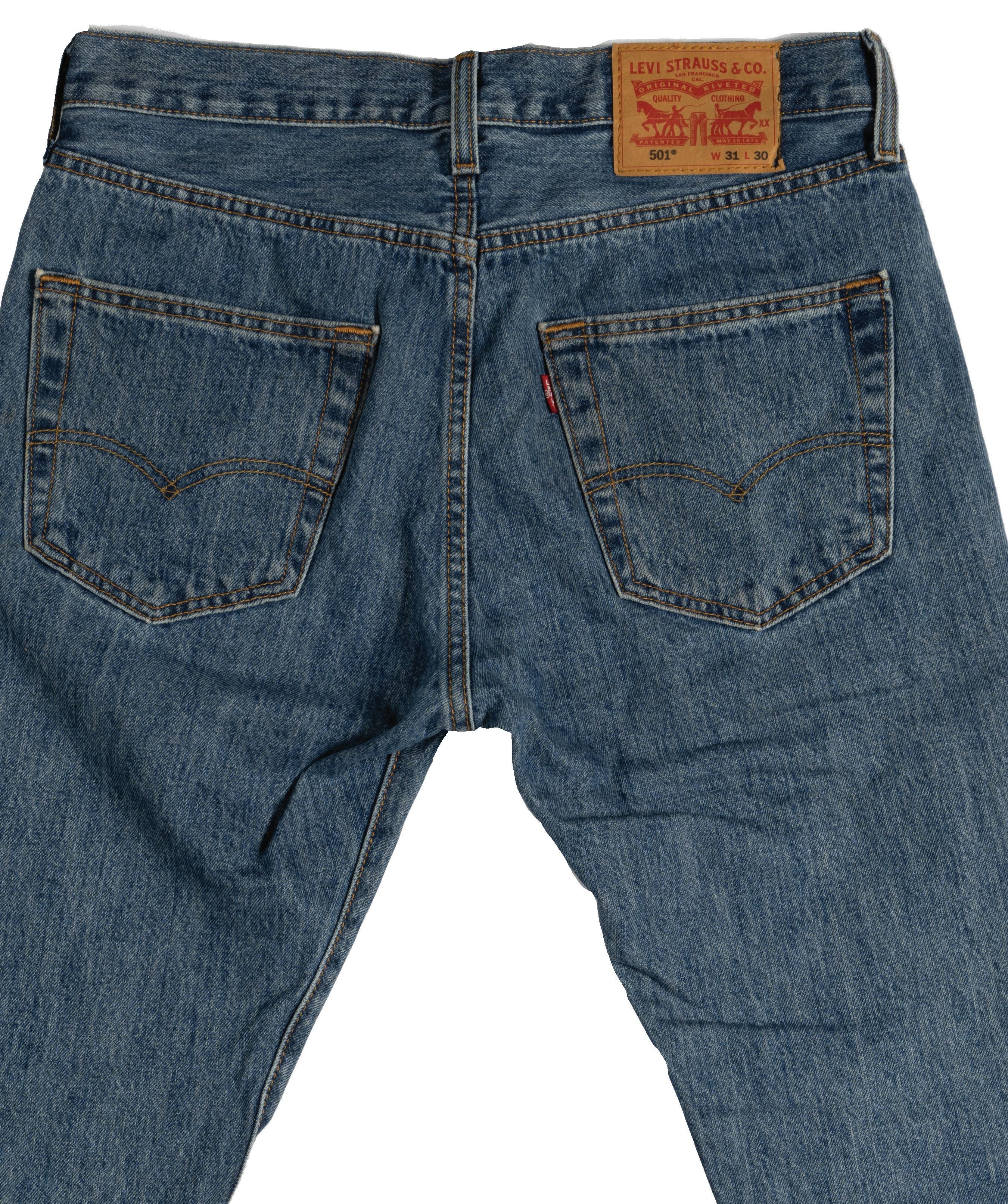
“YOU CAN HAVE SO MANY PEOPLE IN THE SAME JEAN, BUT THEY ALWAYS LOOK DIFFERENT BECAUSE THEY WEAR IT THEIR OWN WAY.”
—LEVI STRAUSS & CO. CHIEF PRODUCT OFFICER KARYN HILLMAN
Miners and cowboys were among the first who sported the new riveted waist overalls. By 1922, the company was sourcing all of its fabric in North Carolina from Greensboro’s Cone Mills (bottom right), which created "red selvedge" denim specifically for 501 jeans.
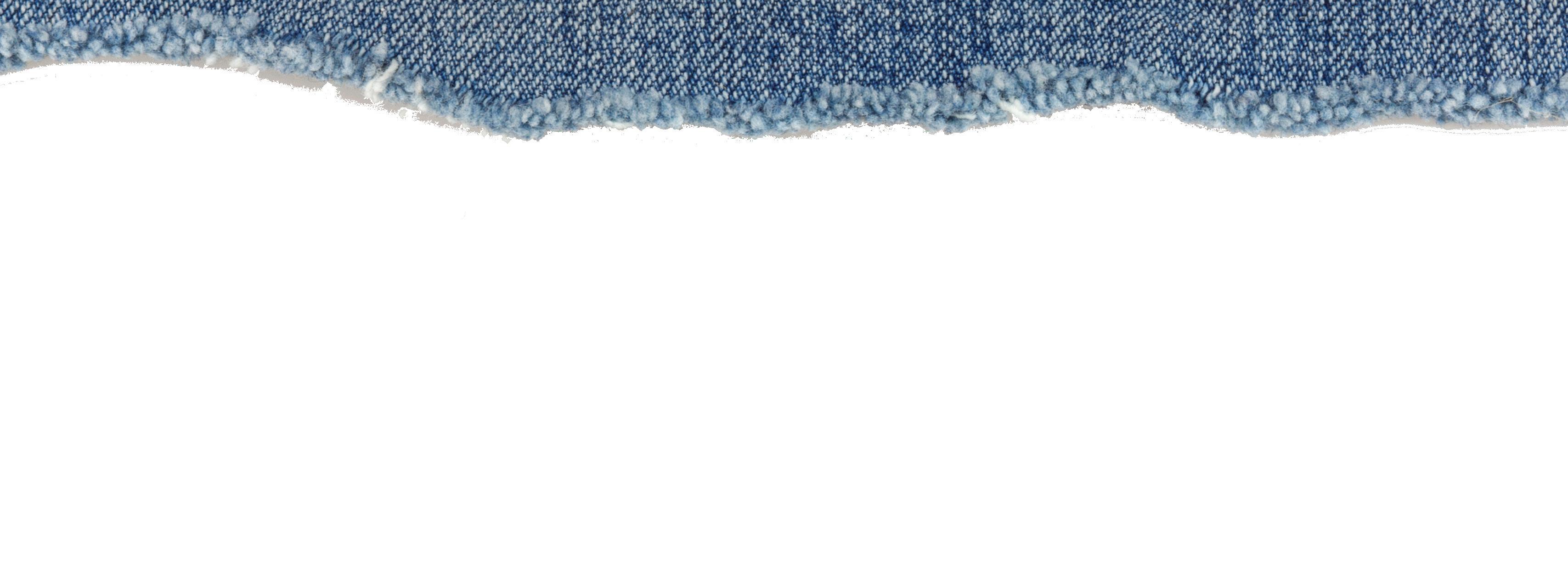
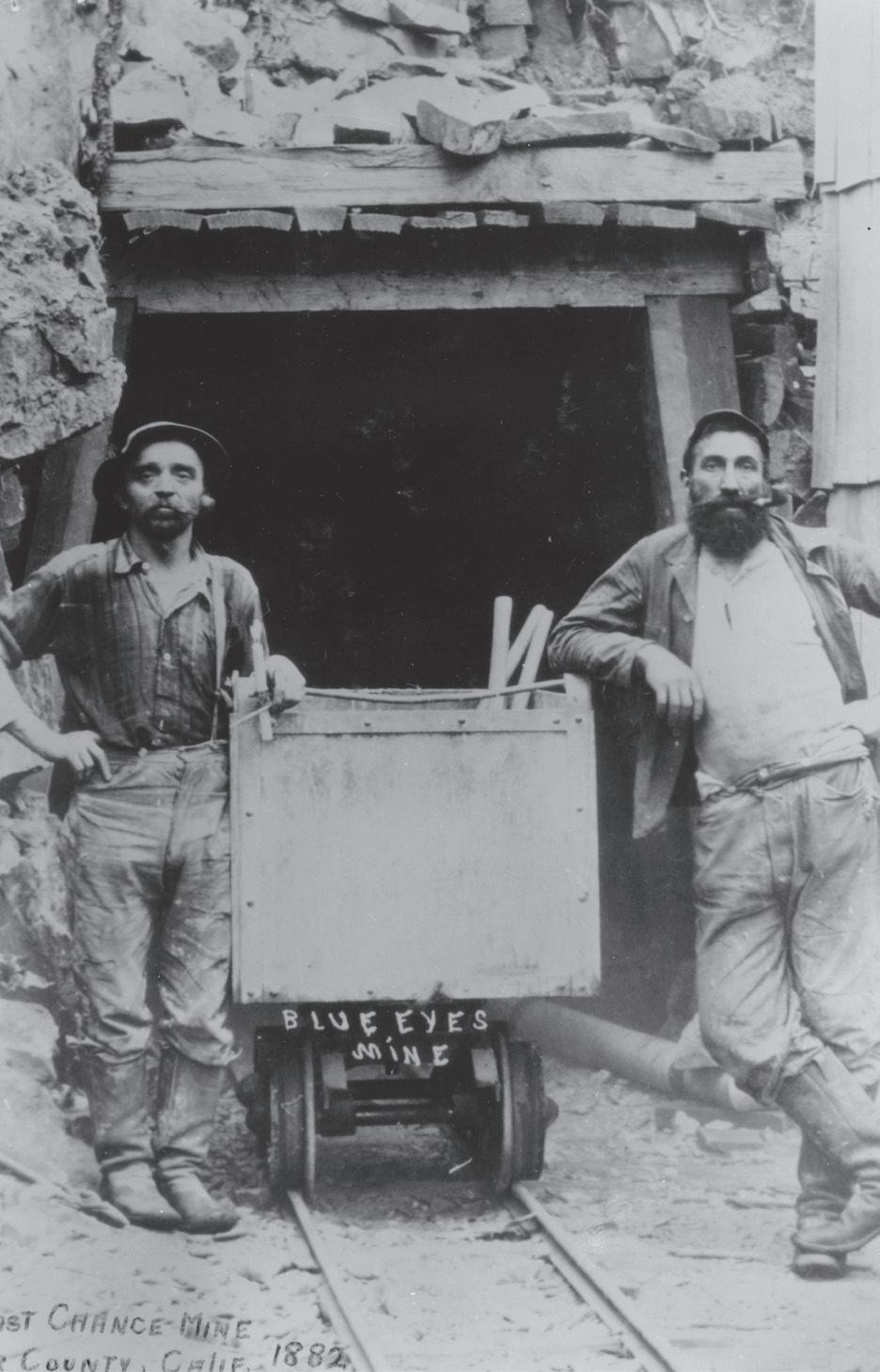

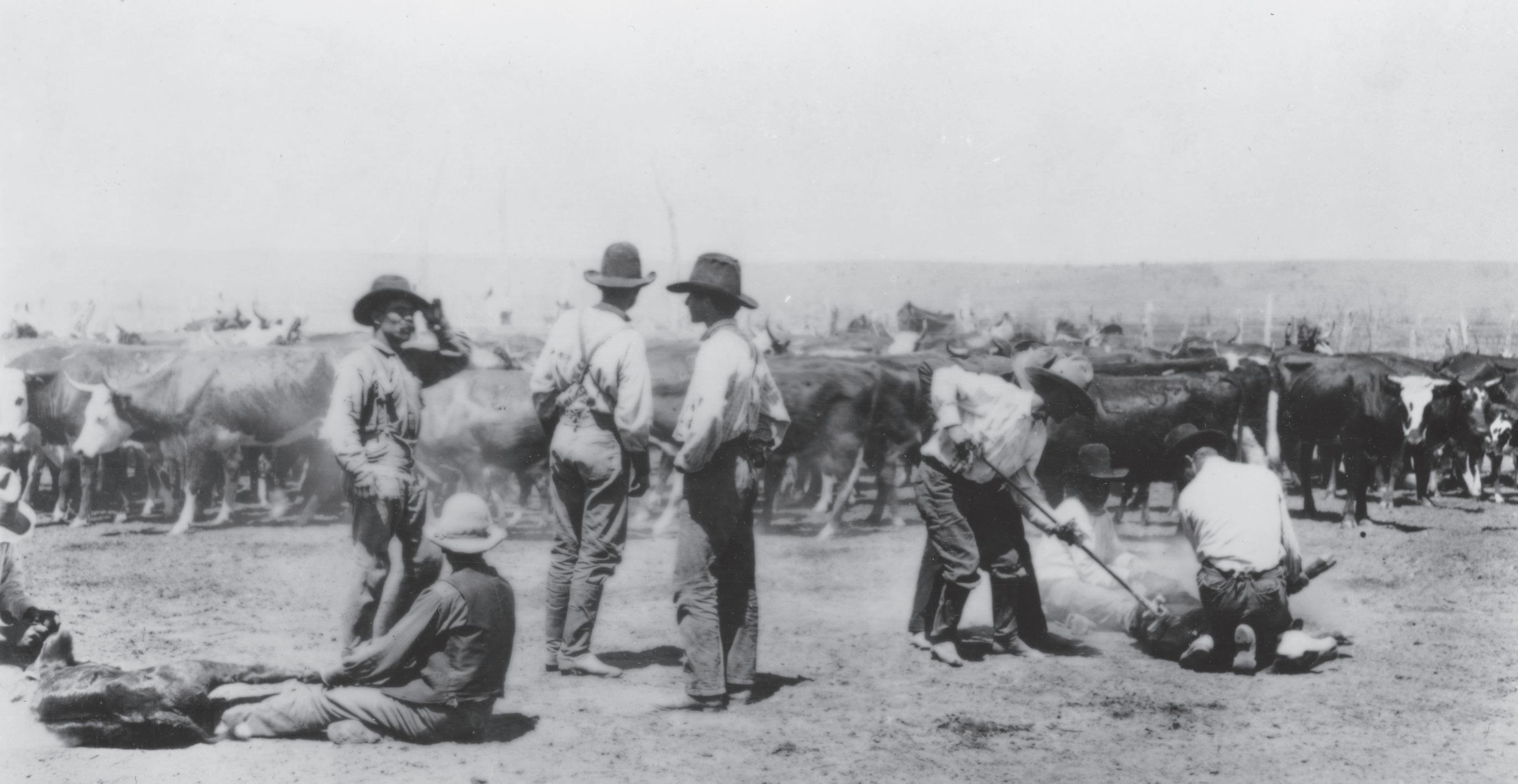
the counterculture during the Civil Rights movement and Vietnam protests. Bob Dylan wore 501s on his 1963 album cover for The Freewheelin’ and became a global phenomenon, burnishing Levi’s image even more. “It's really by the ‘60s when young people begin wearing it and by 1969 at Woodstock, it's a sea of denim,” says Panek.

Why the fascination with Levi’s 501s decade after decade? “You can have so many people in the same jean, but they always look different because they wear it their own way,” notes Karyn Hillman, chief product officer at Levi Strauss & Co. “It's so recognizable and yet it has evolved over all the decades. From the original 1873 to now, it's changed upwards of 30 or so times. But it's really the people who’ve worn it—we've adopted with them and really evolved.”
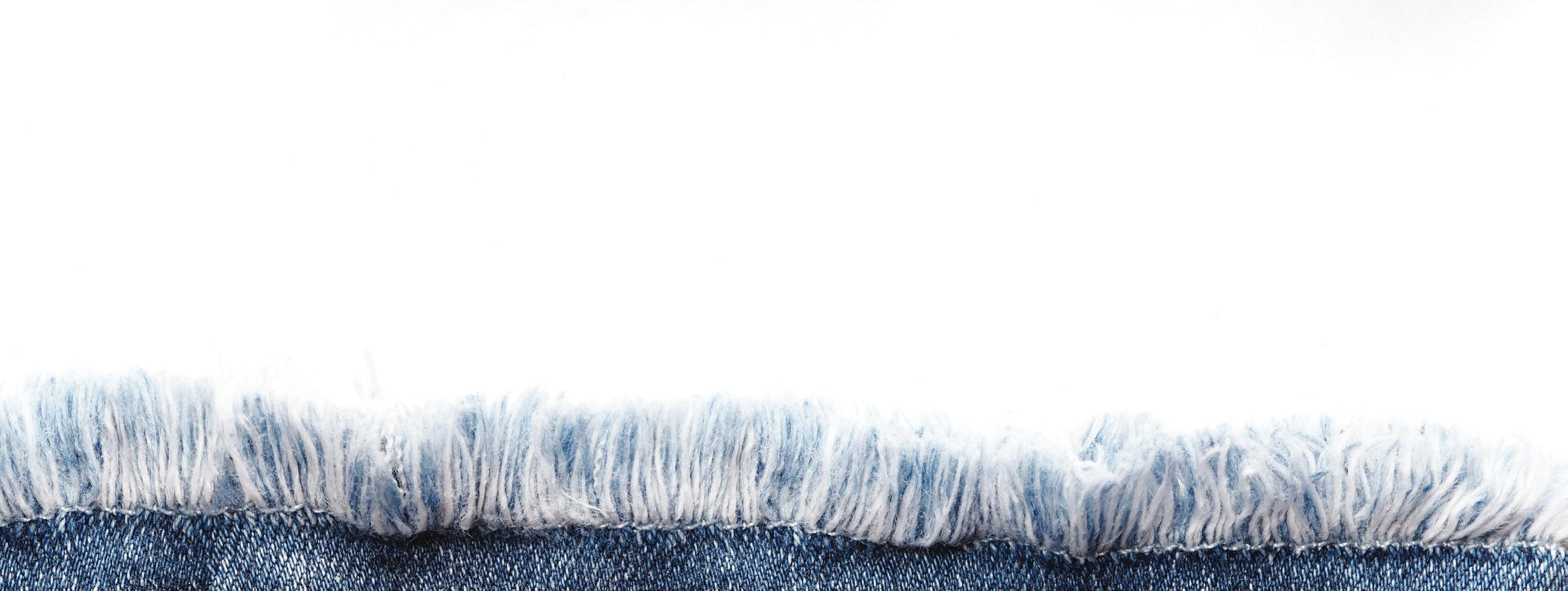
Hillman’s design team looked back to the first official 501 made for women in 1981 (nearly 50 years after Lady Levi’s 701 debuted) and the classic 1954 501 fit for men to re-release this season in honor of the 150th anniversary. “We're really thoughtful and careful about what we tweak,” Hillman says. “We don’t move it too
far forward. We have what we call the tenets of the 501—from the button fly to the shrink, fit, fabric, to the way it fits to the copper rivets, to the pockets. We evolve and adapt with the times, and I think that's why you can really still see in the modern blue jean that its tenets and character are still intact. We're guardians, but we can't just rely on the past. We have to push it forward to make it relevant for today.”
Today, 150 years later, the brand is sold in more than 110 countries and Levi Strauss & Co.'s reported 2022 net revenues were $6.2 billion. The company’s clothing has been worn on the most important stages of our time in recent years—from Steve Jobs unveiling a new iPhone model in the jeans to Beyoncé performing in Levi’s cutoffs at Coachella. “I bet Levi Strauss would just be amazed to see the company he started is still going strong,” Panek says. “He was a businessman and he dressed like Abraham Lincoln. He had a top hat and a three-piece suit. He never actually wore Levi’s overalls or the 501, because it was blue collar clothing. That's just a funny little fact about Levi, who gave blue jeans to the world.”

Spend hours in the powdery sand, recharge in the tranquil garden spa— French refinement and stellar service await at Cheval Blanc St-Barth
 Words by COLLEEN KRATOFIL
Words by COLLEEN KRATOFIL
It was my final night in paradise, also known as the Cheval Blanc St-Barth. I had just returned to the Caribbean resort from dinner in town at Tamarin St Barth, a restaurant set in a tropical garden where greenery and cute local critters surround every table (I would know, a friendly frog jumped on my back during cocktails). Each evening, I’d discover a treat waiting for me in my room, whether a wellness Elixir Tea from the Maison’s “Alchemists” or a special setup to make my own beauty concoction with essential oils. I noticed tea on the bedside table and headed to the huge walk-in closet to begin the sad task of packing my suitcase. That’s when I spotted something else in the bathroom—a candle flickering over the tub. A piping hot bath magically was drawn for me. As I slipped into the water, I couldn’t help but smile and let out a laugh at how unbelievable the last few days had been.
It all started as I got ready to hop a Tradewind flight in San Juan to St. Barths. (Scratch that. It actually started when I filled out my preference sheet for Cheval Blanc St-Barth, noting things like my robe size and ideal type of pillow—Hard? Soft? Feather? Foam?) At the airport, instead of suffering in long lines, I breezed through checkin and kicked back at the dedicated Tradewind lounge with snacks and a coffee. Aboard the eight-seater plane making the hour-long trip to St Barths I watched the boats lining the island’s coastline as the mountains came into view and got...well, first I got nervous over said mountains, then thrilled about my impending adventure. A quick 10-minute car ride later, I was greeted by smiling staff as well as my Majordome—suites and villas come with butler service—who whisked me away to my beachfront suite.
There are 61 spectacular rooms, suites and villas across the property with beach, garden or ocean views, some featuring private plunge pools. The rooms got a top-to-bottom revamp by interior designer Jacques Grange, who created an idyllic vacation atmosphere by mixing patterns, rattan furniture and quintessential West Indies charm. The décor, Christelle Hilpron, general manager of Cheval Blanc St-Barth, explained to me, “was designed as a cabinet of curiosities.” Meaning, she said, that “each decorative item has a story and reminds the guests about travels, whether it's pottery sourced from Colombia, leather ottomans from Borneo or Aboriginal art displayed on the walls.” In my room, I was also struck by the amenities, like a Dyson hair dryer and Guerlain skincare waiting on the vanity. There was also a pair of pink flip flops (the Maison’s signature hue) and beach bag ready to go in the closet.

For my first full day in paradise, Cheval Blanc St-Barth created my ultimate itinerary: I hiked Colombier Bay with personal trainer Geoffrey Pain, and then enjoyed a private yoga session with worldrenowned instructor Nicolas Legrez. Even though
I’m no yogi, Legrez had plenty of patience as he guided me through The Yoga Reverie, an exclusive Guerlain ritual he created for Cheval Blanc StBarth that combines yoga nidra and massage for a meditative, rejuvenating experience. Adding to the experience, it was set in the property’s lush gardens.

Created by landscape designer Madison Cox, the mastermind behind the Majorelle Garden in Marrakech, the leafy oasis boasts over 120 varieties of plants and wildflowers (and a few turtles too).
The spa is also located in the garden, where I experienced a unique Guerlain treatment called the Secrets of India, which was guided by the rhythms of music for “new aura, a body and mind rebirth.” There was a striking set-up of over 15 Guerlain fragrances in the spa lobby, which is part of another bespoke ritual called the Guerlain Haute Parfumerie experience. “After a consultation that dives into a guests' memories, striking emotions, tastes and personality, the Maison’s Beauty Experts select the perfect fragrance customized for you,” Spa Manager at Cheval Blanc Spa in St Barth Carole Renoux says, noting guests can also customize a bottle as a special souvenir.
When it was time to bask in the sun, Hilpron said it best: “The Maison's private location on Flamands Bay allows guests to feel like they are in their own exclusive cocoon, with direct beach access.” What I loved most was bouncing between a lounge chair in the sand to my room’s private plunge pool, just steps away from one another.
Both dining venues on-site are also beach-facing and each has a pool. In the case of La Cabane, open for buffet-style breakfast as well as lunch, it’s quite literally on the sand (table choices are distinguished by the “deck” or “sand”). La Case is the property’s fine-dining restaurant by acclaimed chef Jean Imbert, who embraces a menu that boasts local herbs and flavors popular in Caribbean cuisine. Dishes are served on Dior plates—a nod to the LVMH-owned property. The fashion empire features the company’s portfolio of in-house brands (like Guerlain) in the boutique too—guests will find Emilio Pucci pieces and Dior shades on display.
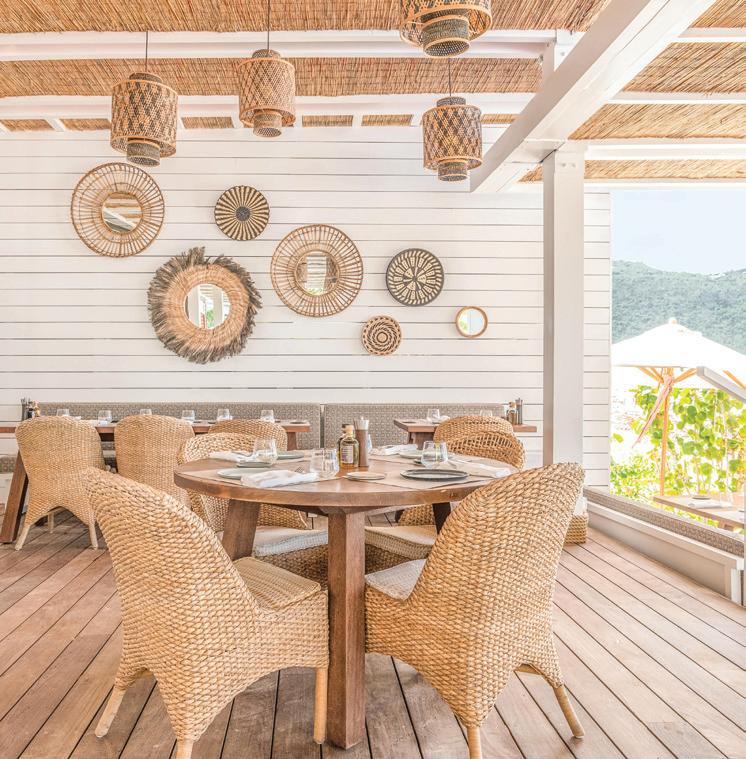
At the end of my stay, I felt rejuvenated and relaxed, but also reflective: How could I continue experiencing this transformative sense of calm in my everyday life? As I surveyed the room for the final time feeling content, I noted all the things that might bring me back to this serene time and the memory of the waves lapping against me during dips in the sea. Luckily, I can take a whiff of the candle given to me as a gift at the end of my stay featuring the Maison’s signature fragrance Tropical Chic and its notes of ylang-ylang, pineapple, white flowers and sandalwood. Or maybe it’ll be as simple as resetting my posture, just as Legrez instructed me to do. Whatever the case, each time, I’ll be transported back to the tropics in my mind. But oh, how I can’t wait to return.

A racing icon was born 60 years ago. In 1963, Jack Heuer, the great-grandson of the brand's founder, created the TAG Heuer Carrera timepiece, a watch inspired by the Carrera Panamericana Mexico road race—one of the most dangerous events in the world. The design captured the romance and risk of the sport, and it became beloved by racing legends and sports-car enthusiasts alike. The watch continues to stand the test of time thanks to its modern design and ultra-legible dial. The Diamond Jubilee of an icon is a fitting reminder that year after year, the TAG Heuer Carrera shines brightly.
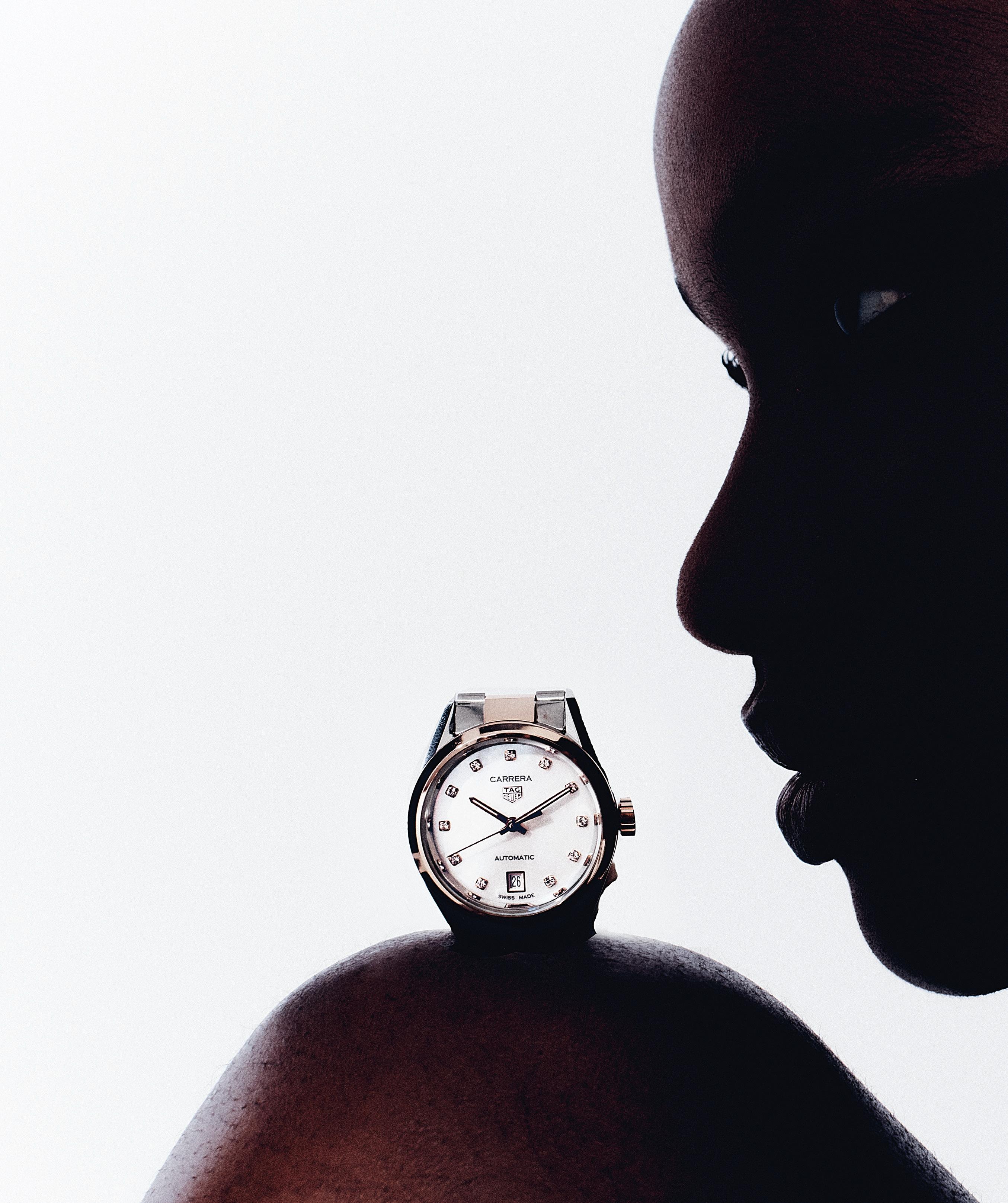 Tag Heuer, 29mm Carrera Date Automatic Watch in 18k 5N Rose Gold and Steel with Eleven 0.088k Diamonds on Mother of Pearl Dial, tagheuer.com.
Photography by JULIAN SCHULZ Styling by KIM PAYNE
Tag Heuer, 29mm Carrera Date Automatic Watch in 18k 5N Rose Gold and Steel with Eleven 0.088k Diamonds on Mother of Pearl Dial, tagheuer.com.
Photography by JULIAN SCHULZ Styling by KIM PAYNE
